Prehistory (+Biology): Notable Hominids/Species of Hominid/Early Humans/Early People Groups | HISTORICAL Set
1/183
There's no tags or description
Looks like no tags are added yet.
Name | Mastery | Learn | Test | Matching | Spaced |
|---|
No study sessions yet.
184 Terms
Ardipithecus Ramidus (Fact 1)
Nickname: Pre-australopithecine Species of Hominid nicknamed "Ardi"
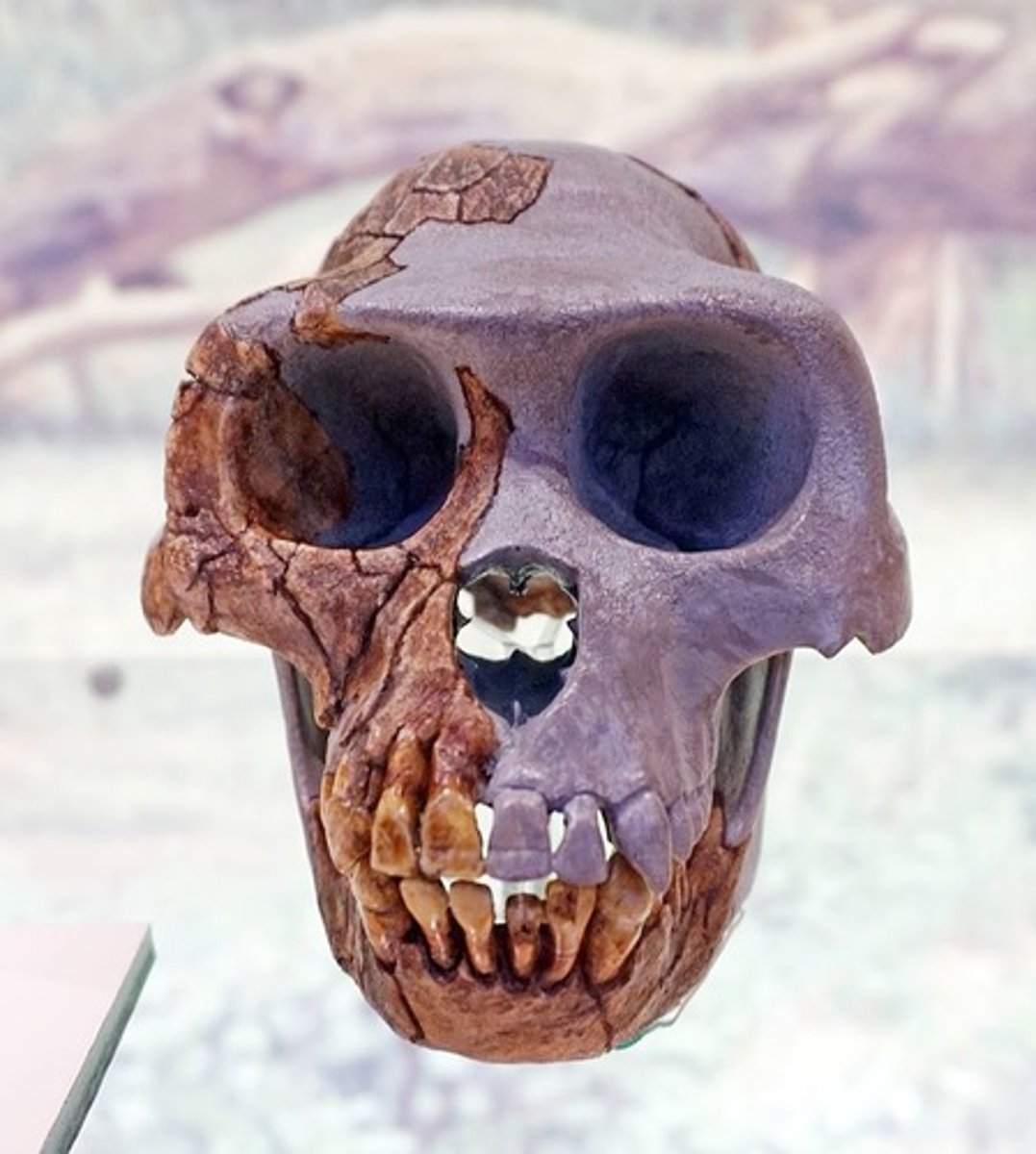
Ardipithecus Ramidus (Fact 2)
Time: Pre-australopithecine Species of Hominid that lived around 4 Million years BCE (before Australopithecus Afarensis)
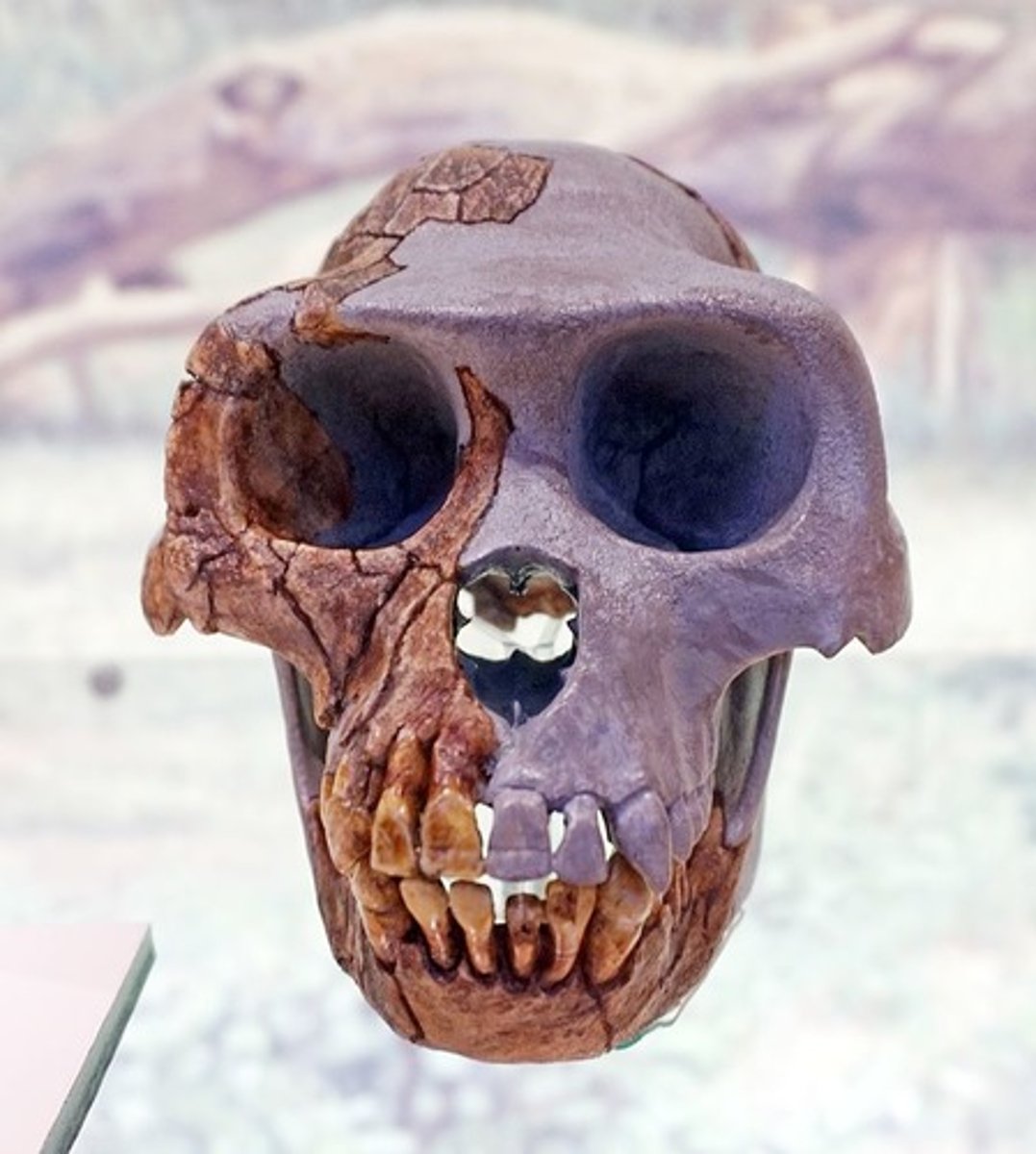
Ardipithecus Ramidus (Fact 3)
Place: Pre-australopithecine Species of Hominid found in recent years but having lived at one time in a wooded (tree) environment (based on the fossils found around it) in Ethiopia
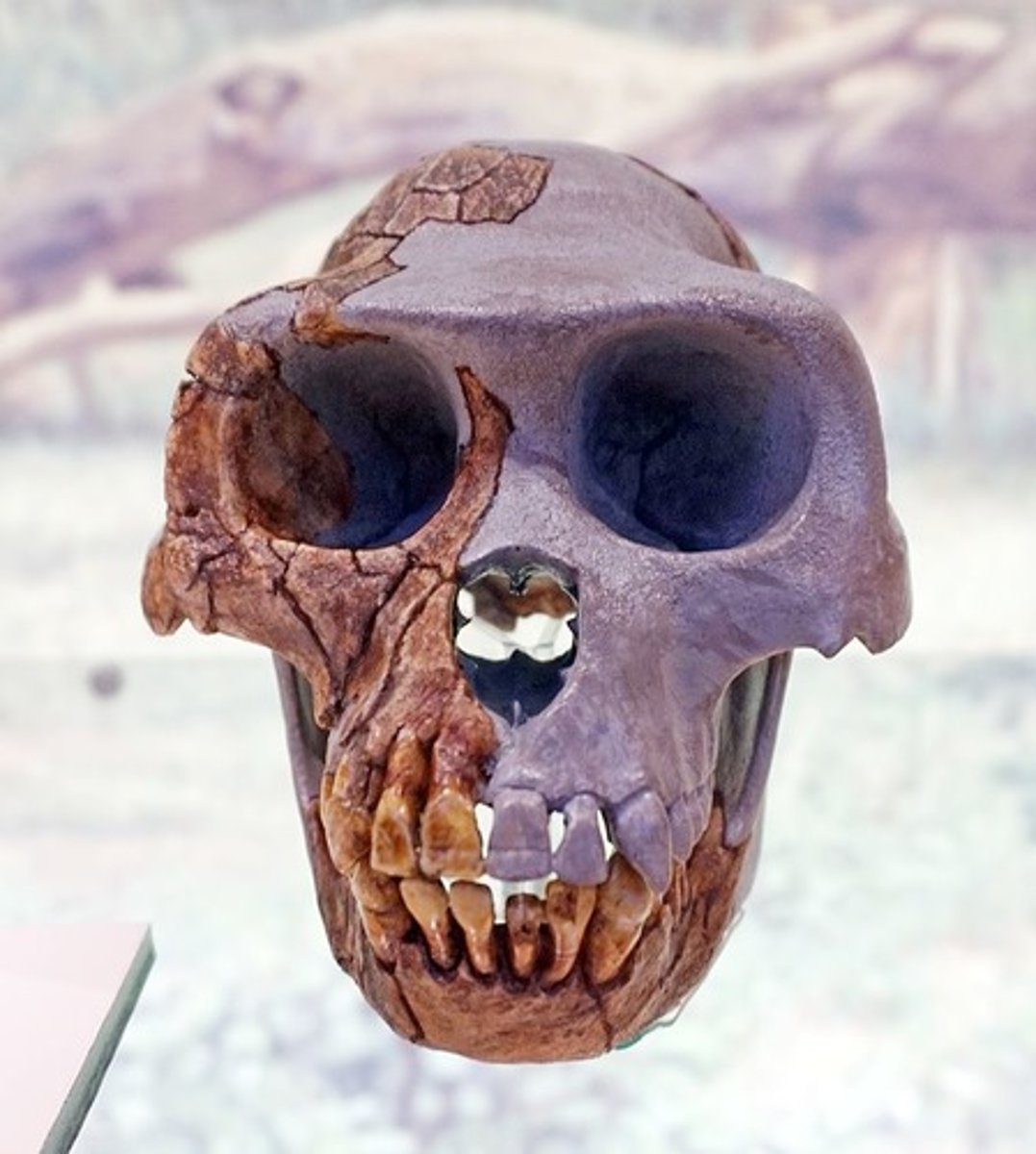
Ardipithecus Ramidus (Fact 4)
Physical Characteristic(s): Pre-australopithecine Species of Hominid characterized by having opposing big toes (like most Primates) that paleontologists conclude acted more like a lever than a grasp to cling onto, suggesting it was a Biped that was also good at moving in the trees
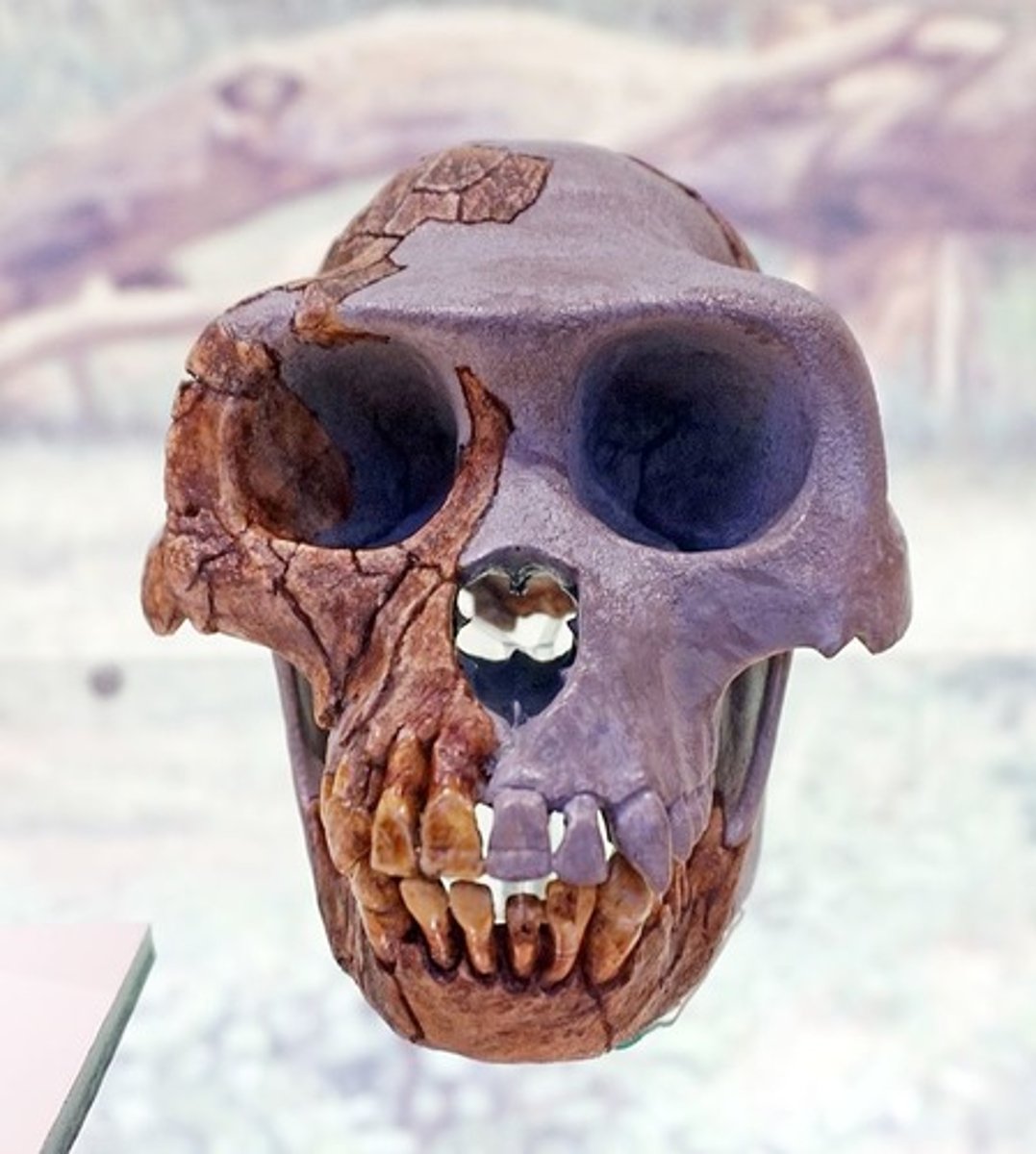
Ardipithecus Ramidus (Fact 5)
Physical Characteristic(s): Pre-australopithecine Species of Hominid characterized by a unique pelvis that features an angled muscle attachment point that provides for powerful hamstrings, suggesting it was a Biped that was also good at moving in the trees

Ardipithecus Kadabba (Fact 1)
Time: Pre-australopithecine Species of Hominid that lived sometime between 5.8 Million years BCE to 5.2 Million years BCE
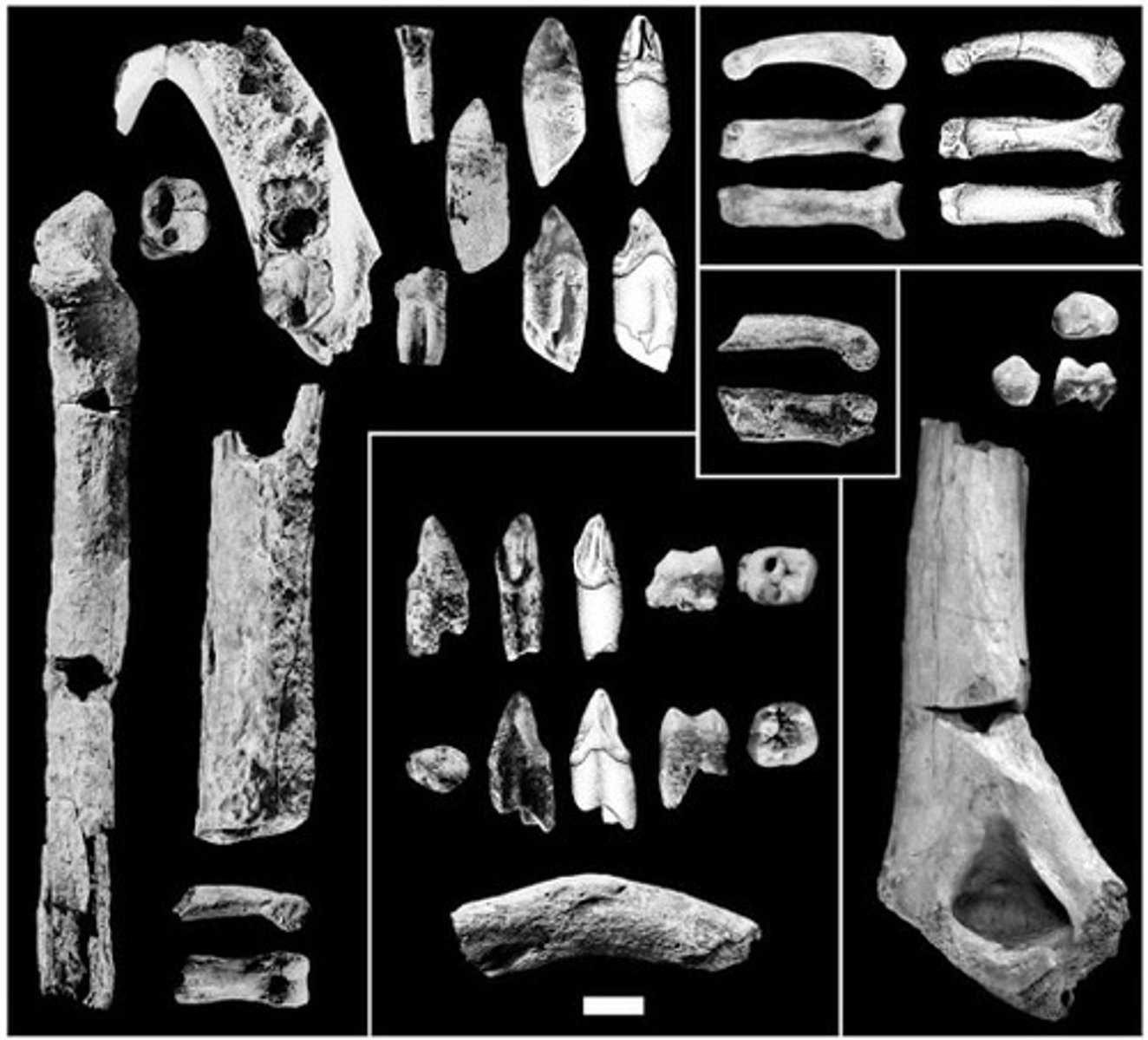
Ardipithecus Kadabba (Fact 2)
Place: Pre-australopithecine Species of Hominid found in recent years but having lived at one time in the Awash River Valley Region in Ethiopia
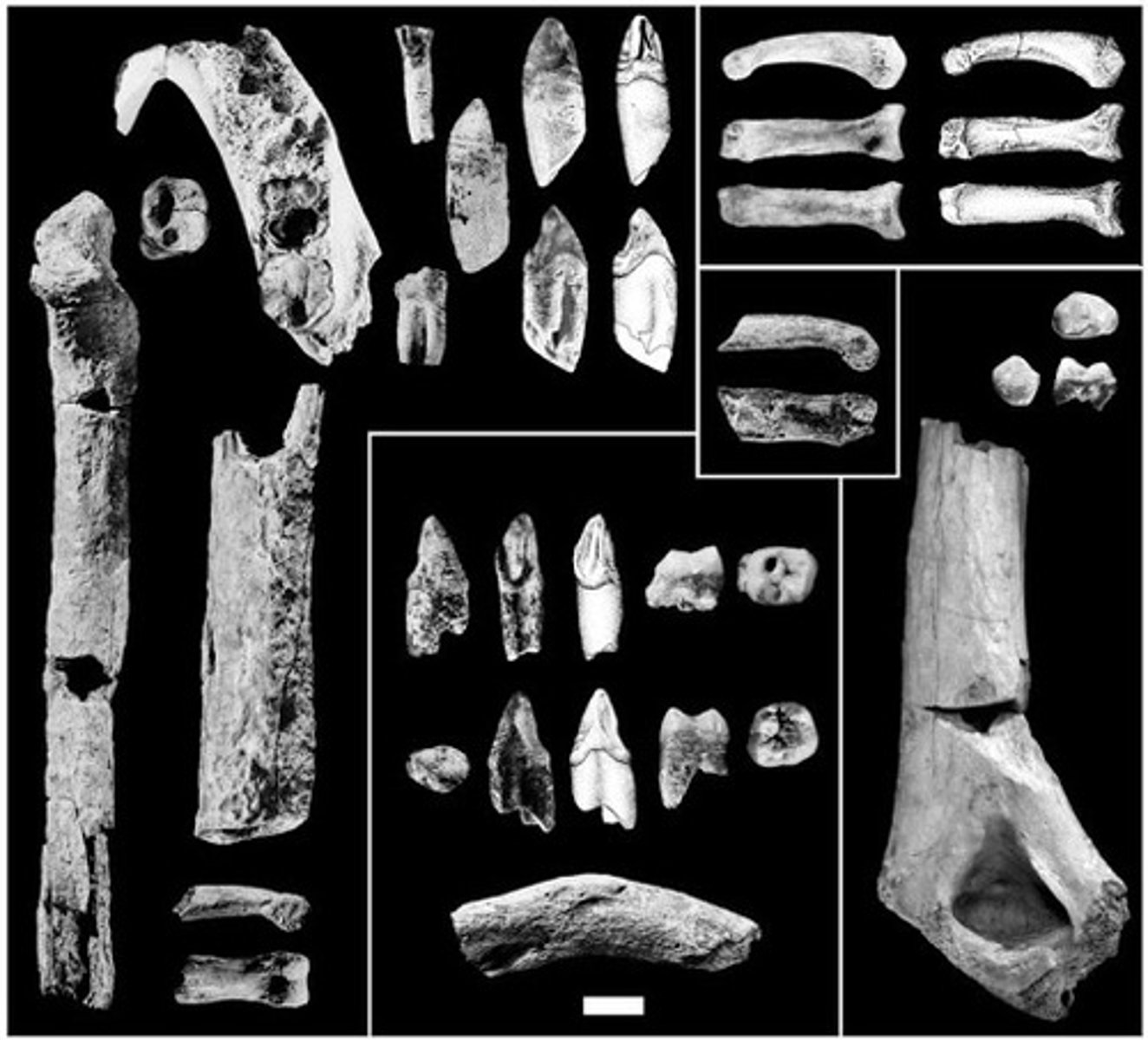
Ardipithecus Kadabba (Fact 3)
Physical Characteristic(s): Pre-australopithecine Species of Hominid that may have been a Biped based on the shape of the joint of one of the bones in its big toe
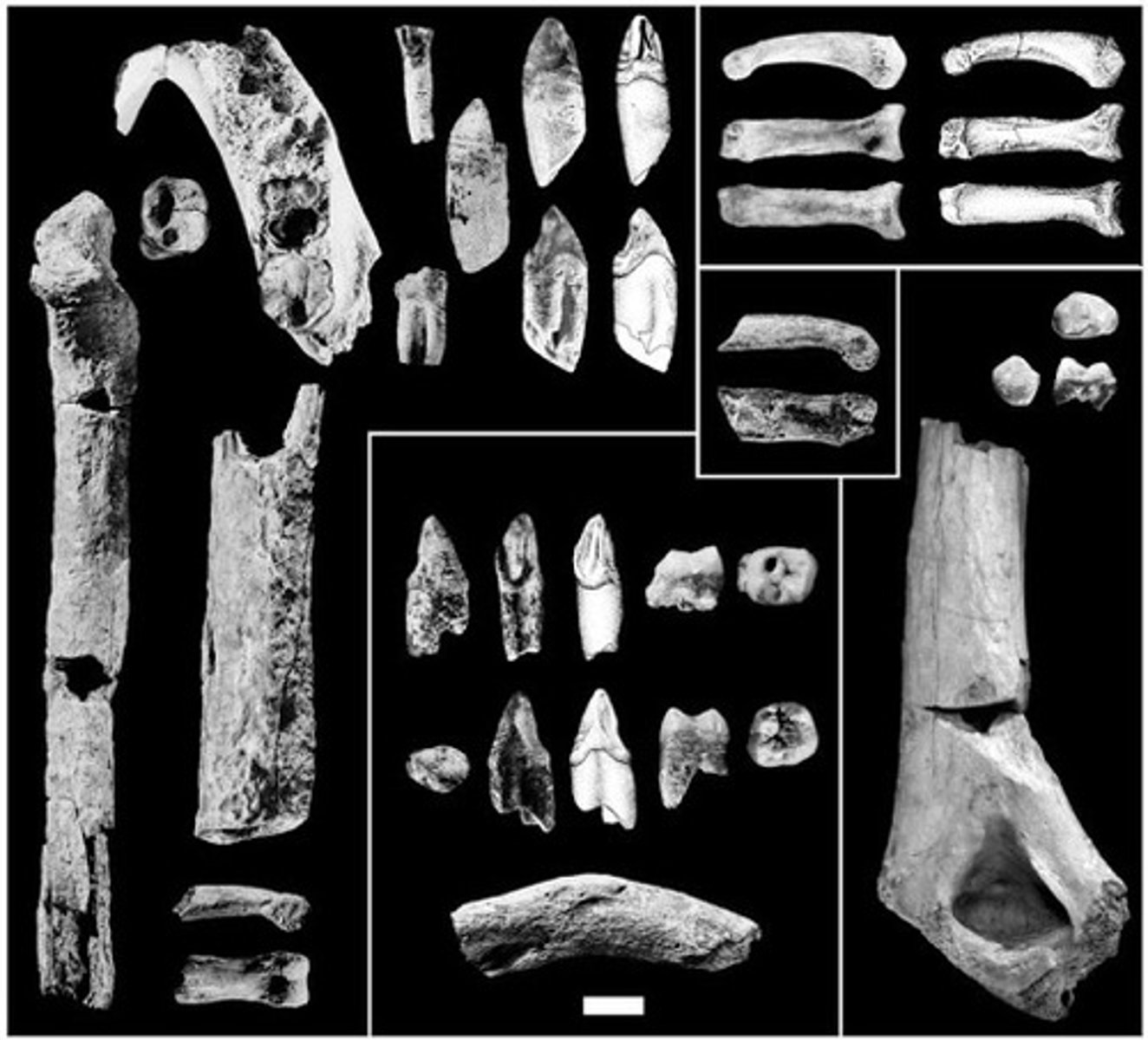
Sahelanthropus Tchadensis (Fact 1)
Time: Pre-australopithecine Species of Hominid that lived around 7 Million years BCE
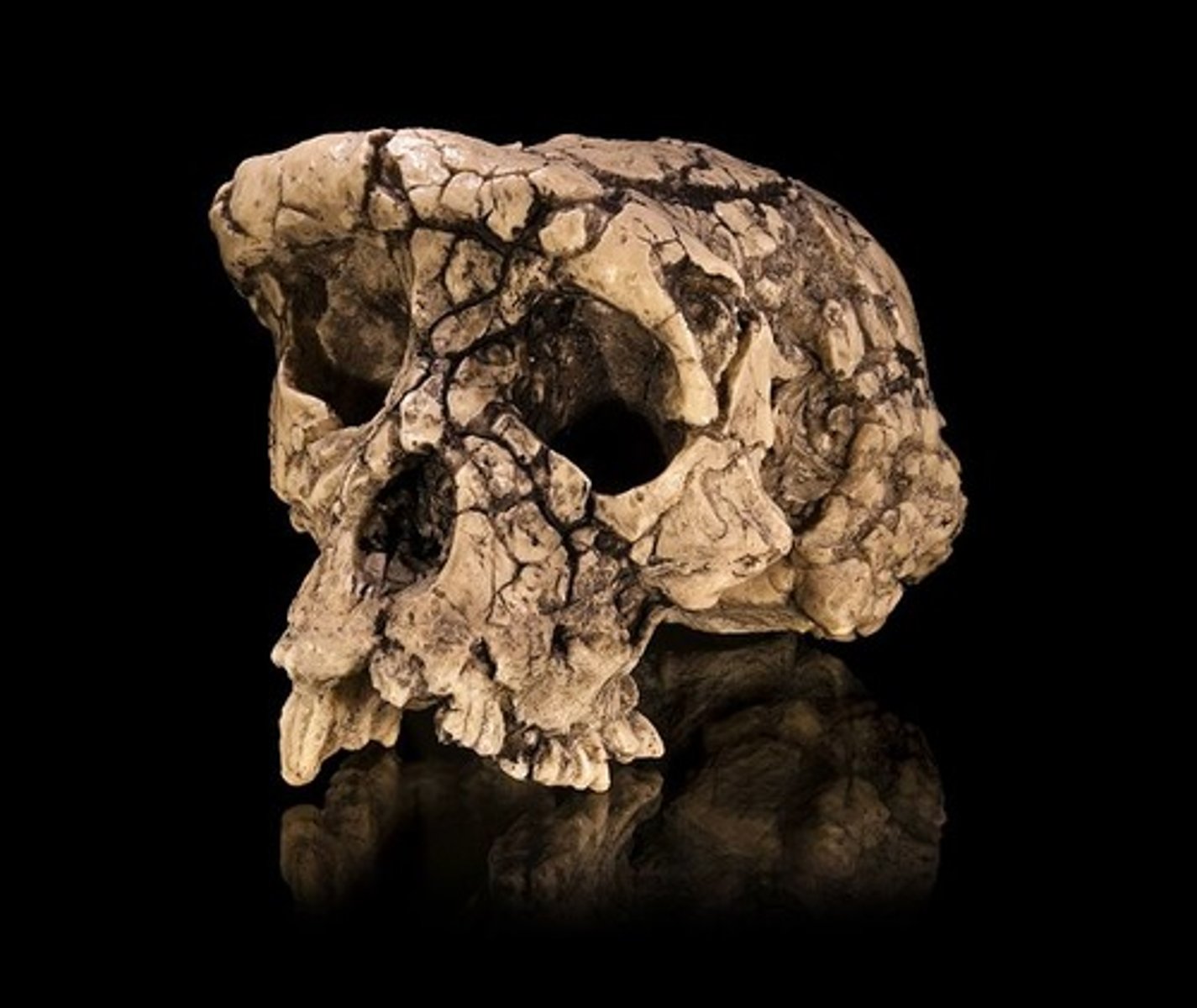
Sahelanthropus Tchadensis (Fact 2)
Place: Pre-australopithecine Species of Hominid found in recent years but having lived at one time in Chad
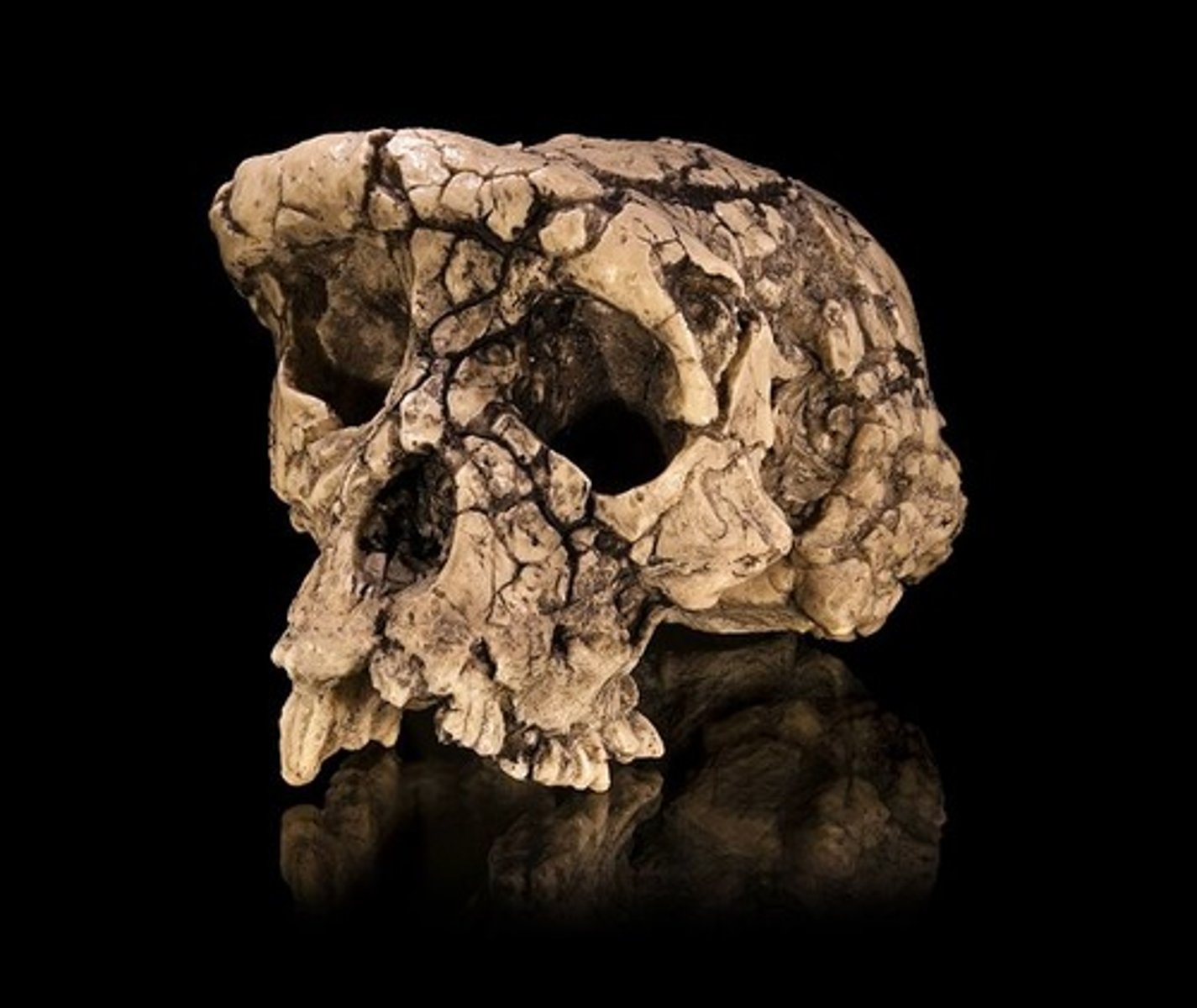
Sahelanthropus Tchadensis (Fact 3)
Physical Characteristic(s): Pre-australopithecine Species of Hominid that may have been a Biped based on the position of the hole at the base of its skull where the spinal cord connects to the brain where it found under the skull rather than behind the skull, which is a defining (but debated) characteristic of Bipedalism
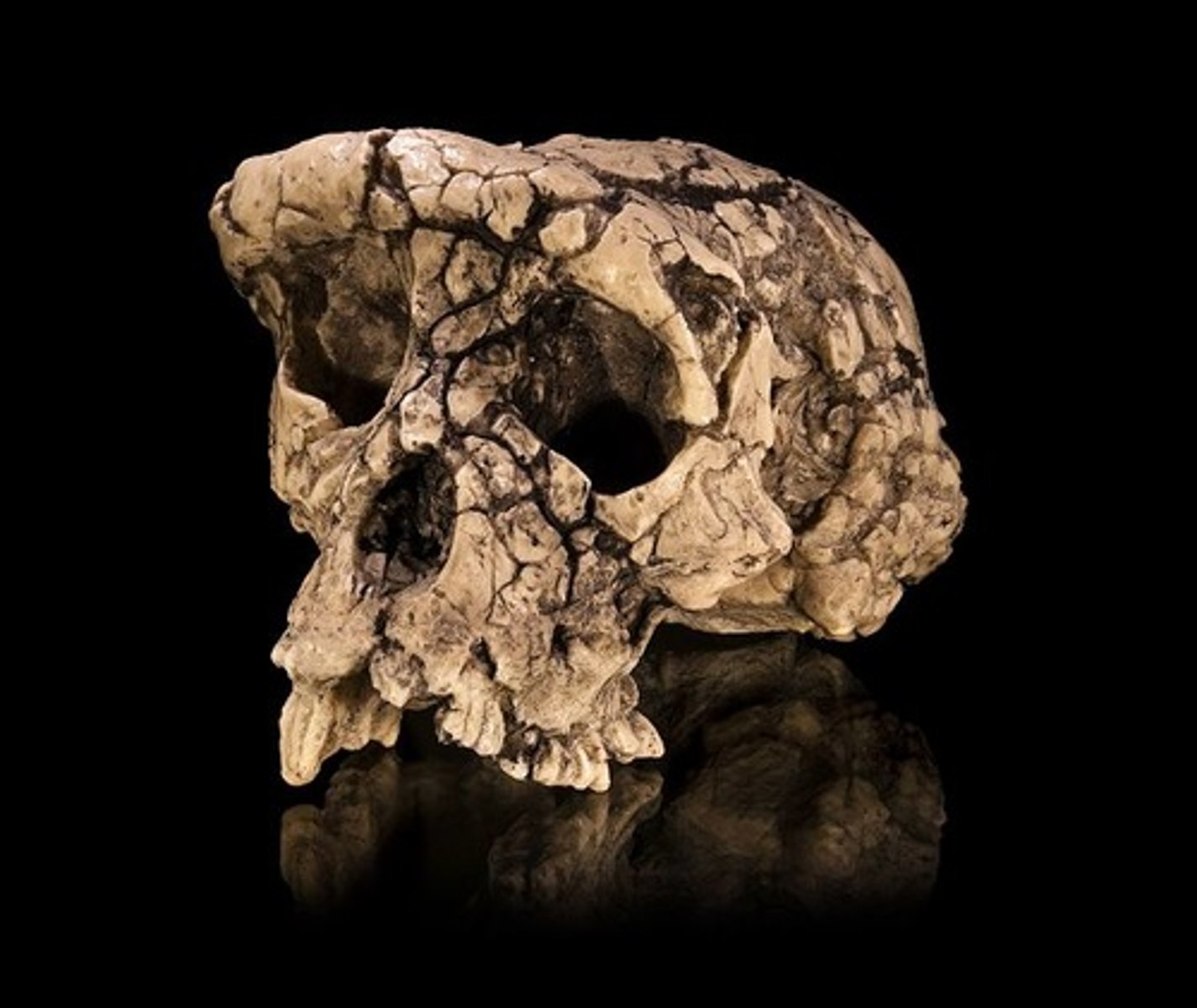
Orrorin Tugenensis (Fact 1)
Time: Pre-australopithecine Species of Hominid that lived around 6 Million years BCE
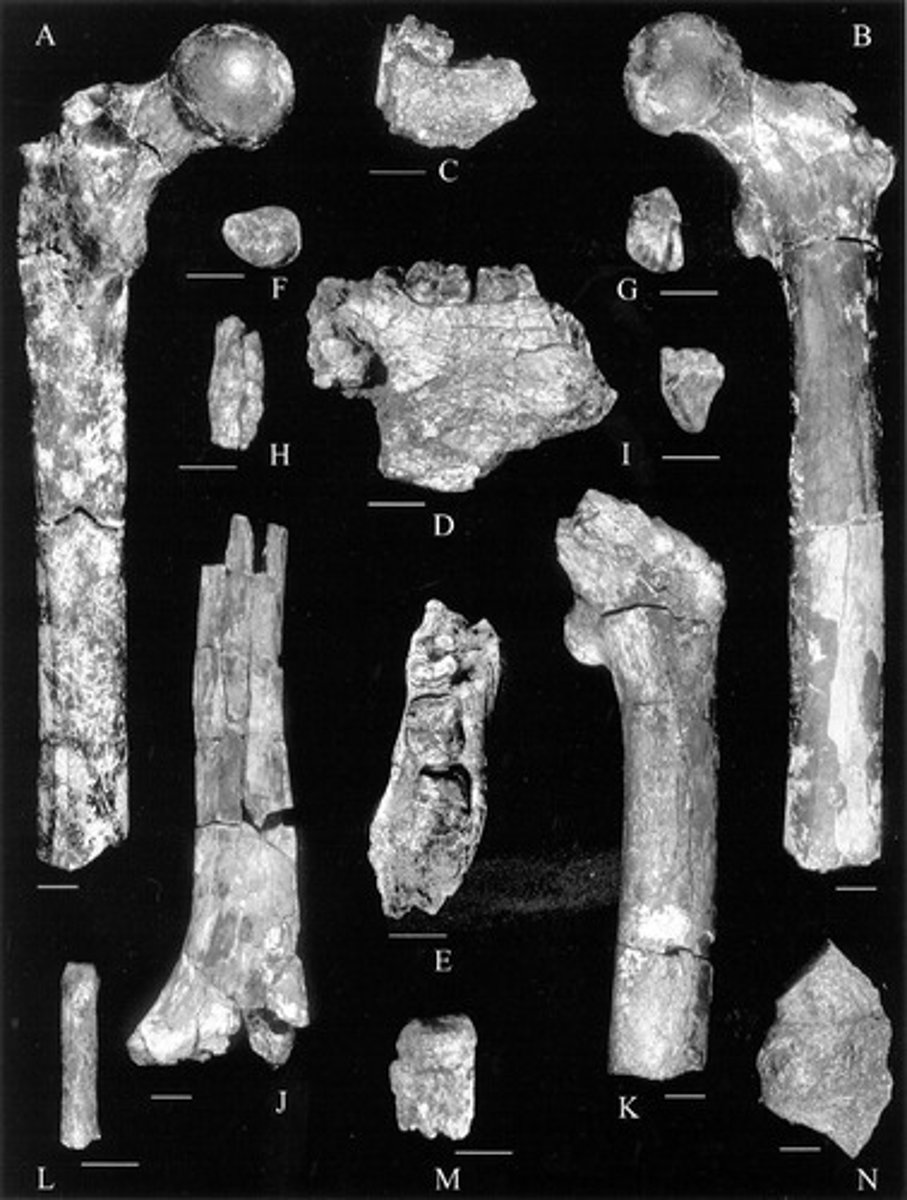
Orrorin Tugenensis (Fact 3)
Physical Characteristic(s): Pre-australopithecine Species of Hominid that may have been a Biped based on 2 of 13 fossil bones found of it that are Femurs (Thigh Bones) but that were shaped differently than other Australopithecine-like Species, suggesting it walked but differently than descendants of the Australopithecines
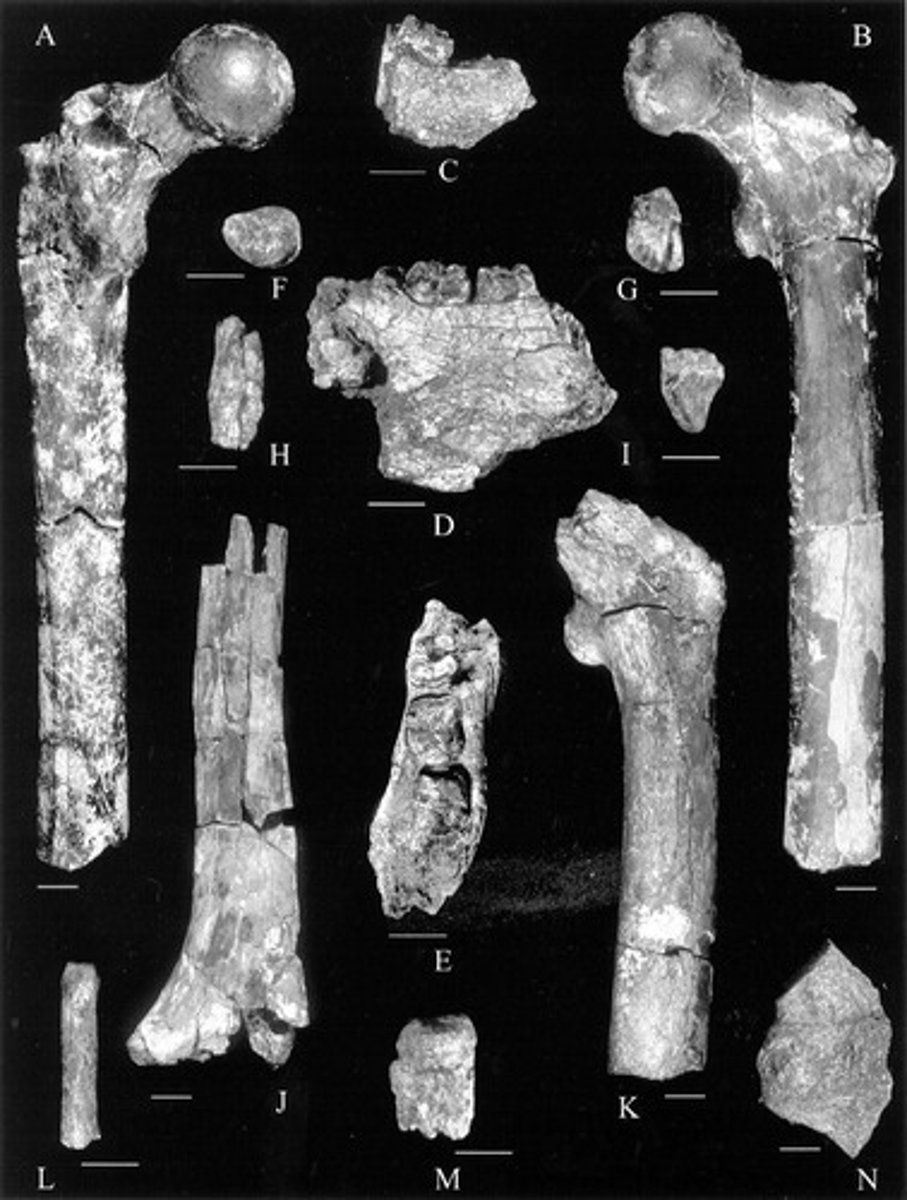
Orrorin Tugenensis (Fact 2)
Place: Pre-australopithecine Species of Hominid found in recent years but having lived at one time in the Tugen Hills in Central Kenya
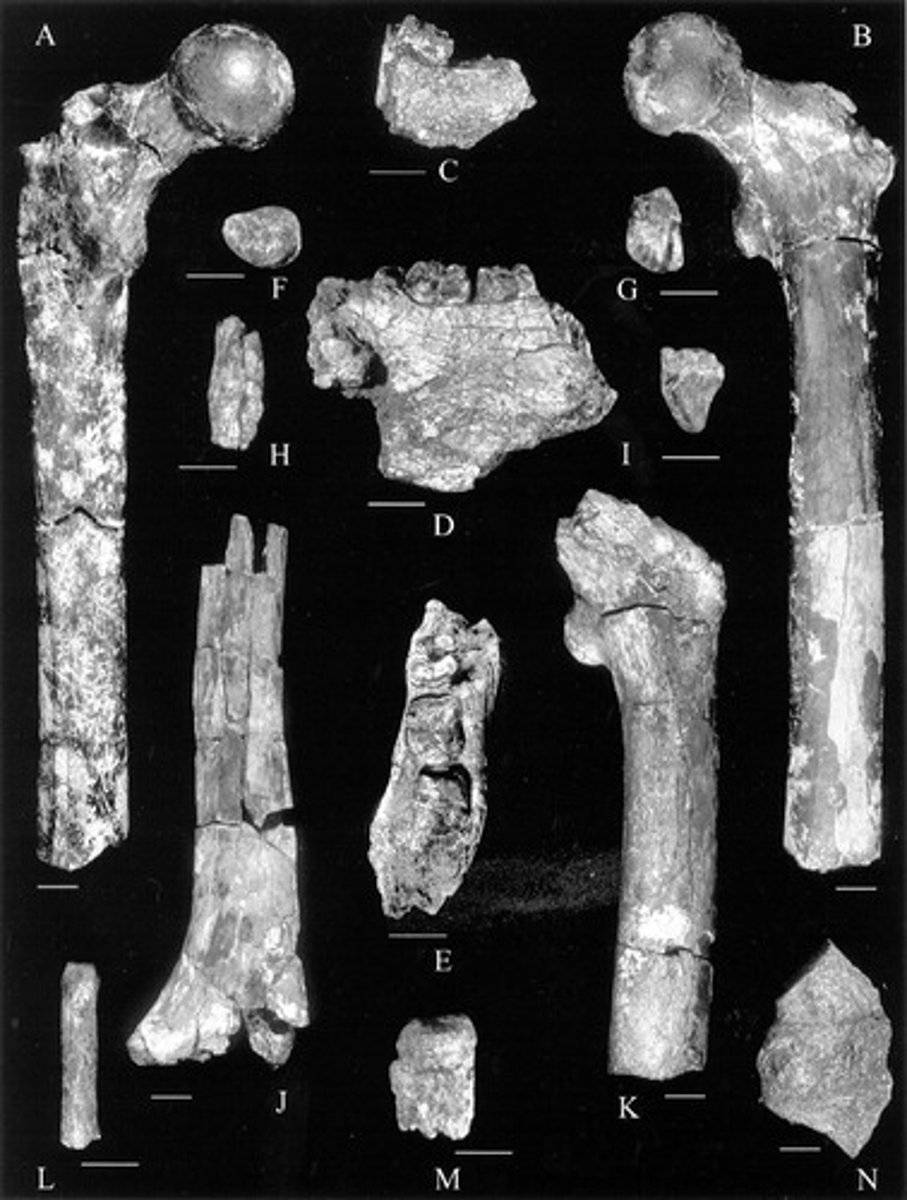
Australopithecus Afarensis (Fact 1)
Nickname: Species of Hominid nicknamed "Lucy"

Australopithecus Afarensis (Fact 2)
Time: Species of Hominid that lived sometime between 4 Million years BCE to 3 Million years BCE (3.5 Million years BCE to 3.1 Million years BCE while inhabiting East and South Africa)
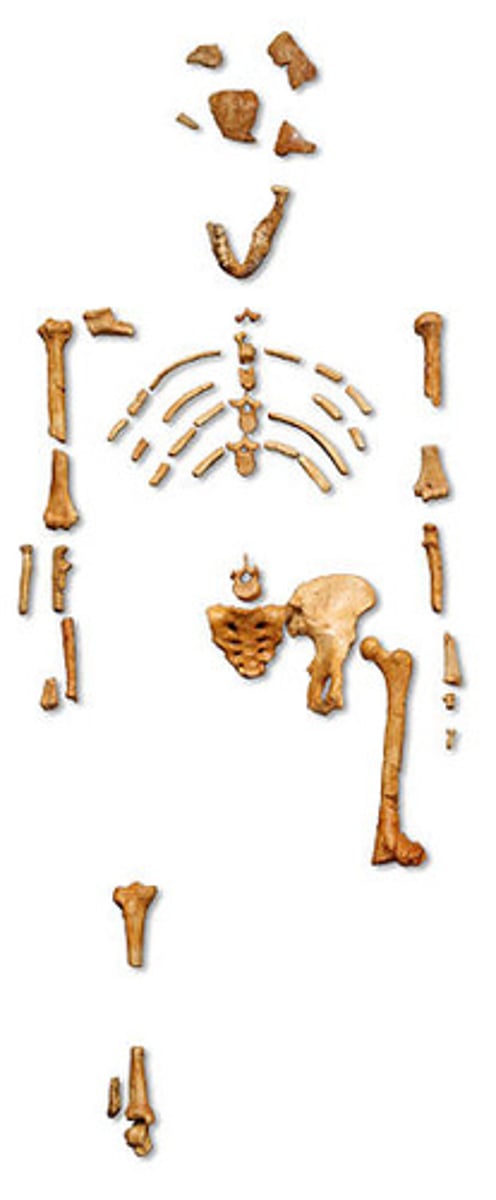
Australopithecus Afarensis (Fact 3)
Place: Species of Hominid found in recent years but having lived at one time in Laetoli, Tanzania, the Awash River Valley in the "Afar Triangle" Region in present-day Hadar, Ethiopia (after which they are named) in wooded and waterside environments
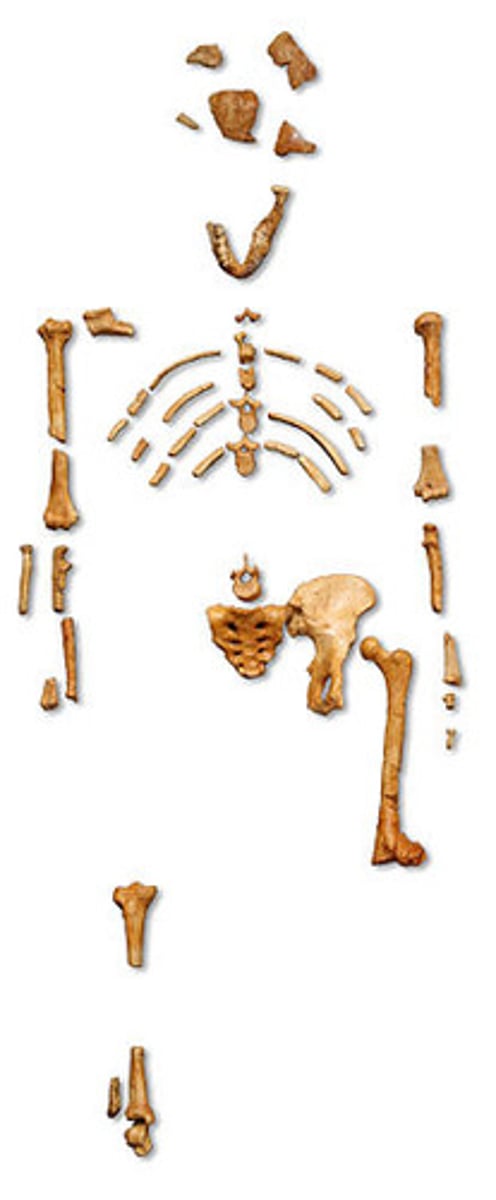
Australopithecus Afarensis (Fact 4)
Physical Characteristic(s): Species of Hominid characterized by (most likely) being the first bipedal species ever (if there wasn't such a species before them) as evidenced by the "Laetoli Footprints" found in Laetoli, Tanzania
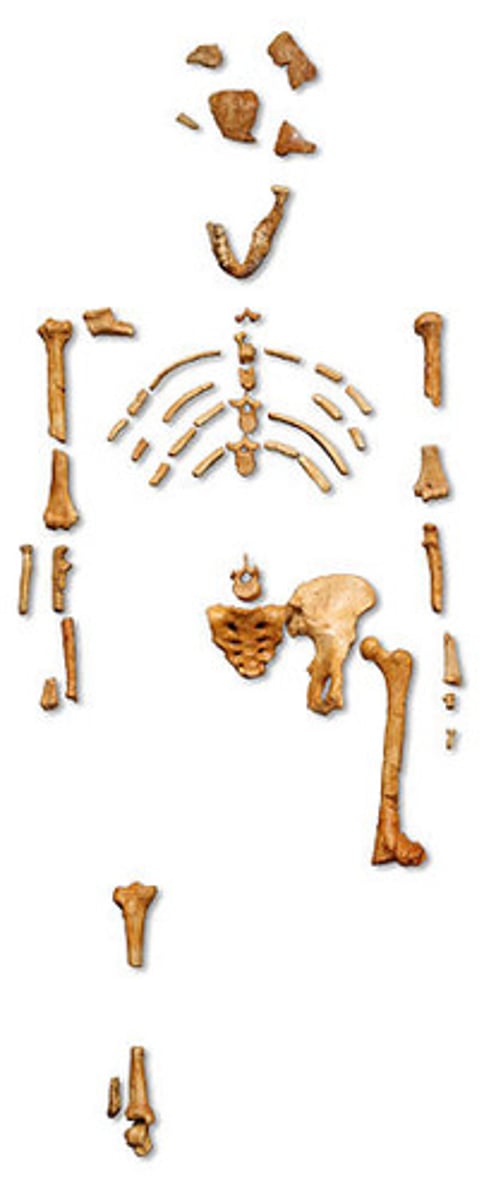
Australopithecus Afarensis (Fact 5)
Physical Characteristic(s): Species of Hominid characterized by having an upright posture as evidenced by the fossils depicted in that there are Thigh Bones that are angled inwards towards the knee and a more human-like pelvis
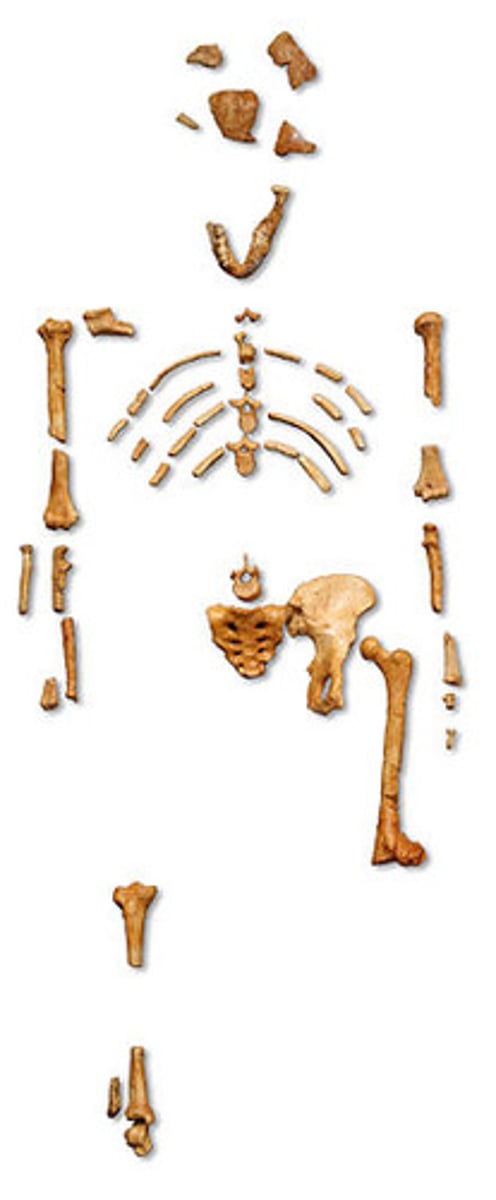
Australopithecus Afarensis (Fact 6)
Physical Characteristic(s): Species of Hominid characterized by a brain size of 400-500cc, thought to be linked to a higher quality diet since being able to consume more calories more efficiently has allowed for larger brain size
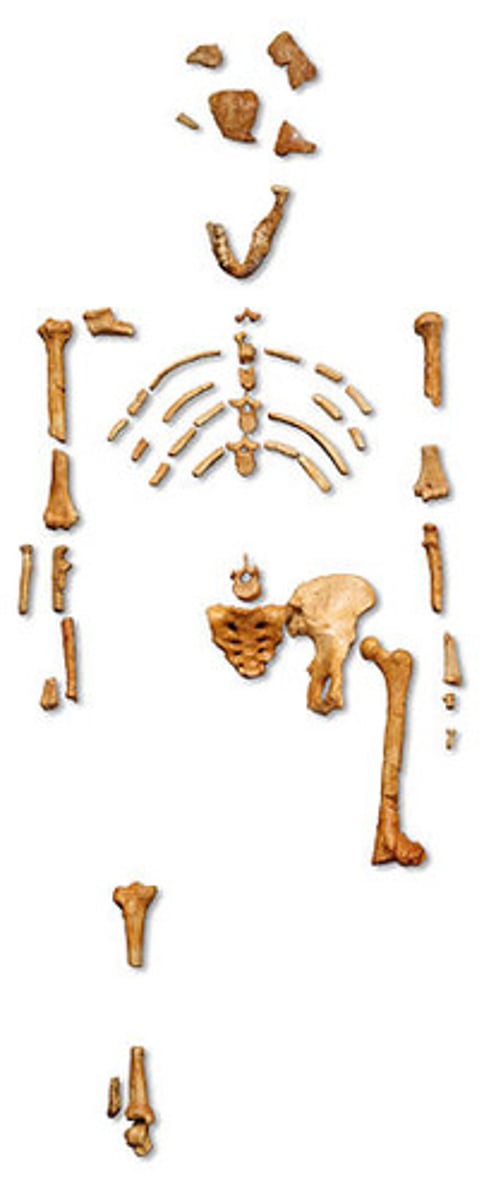
Australopithecus Afarensis (Fact 7)
Physical Characteristic(s): Species of Hominid characterized by having huge and primitive jaws and teeth, with there being a noticeable shelf of bone at the rear of the skull to anchor the strong jaw muscles
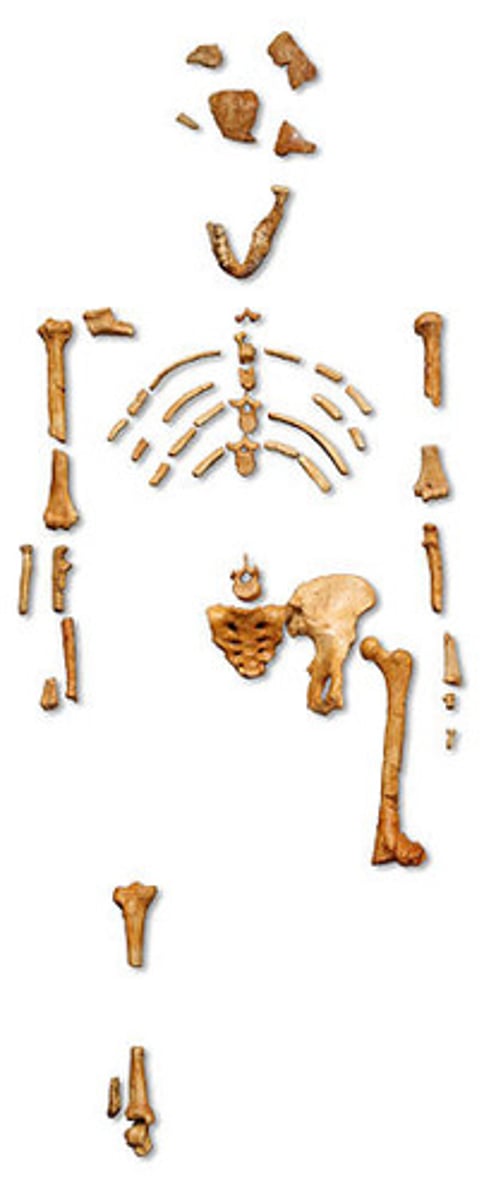
Australopithecus Afarensis (Fact 8)
Physical Characteristic(s): Species of Hominid characterized by strong sexual dimorphism, with males and females showing significantly distinct anatomical differences
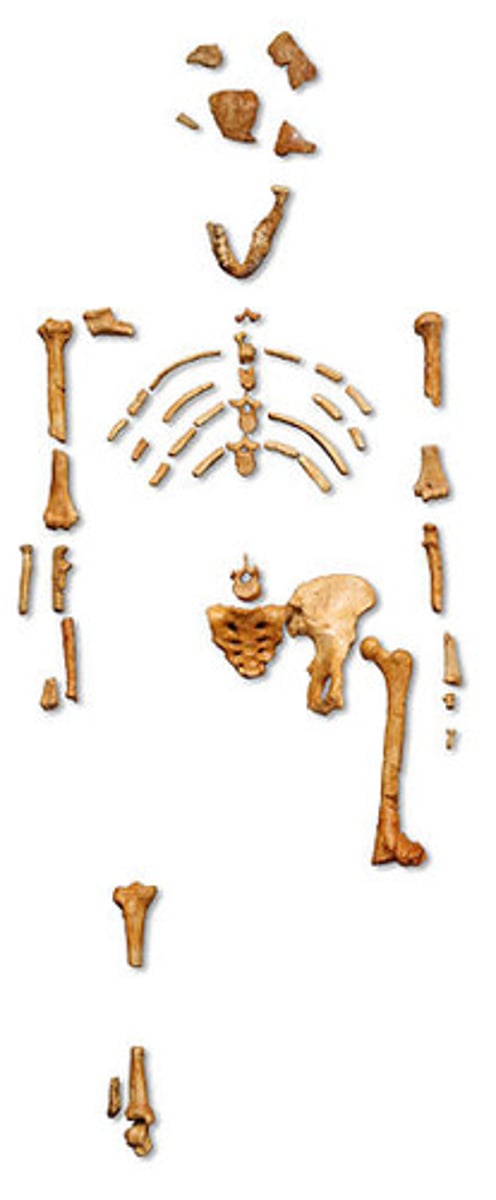
Australopithecus Afarensis (Fact 9)
Physical Characteristic(s): Species of Hominid characterized by having two free hands to carry food and fend off predators
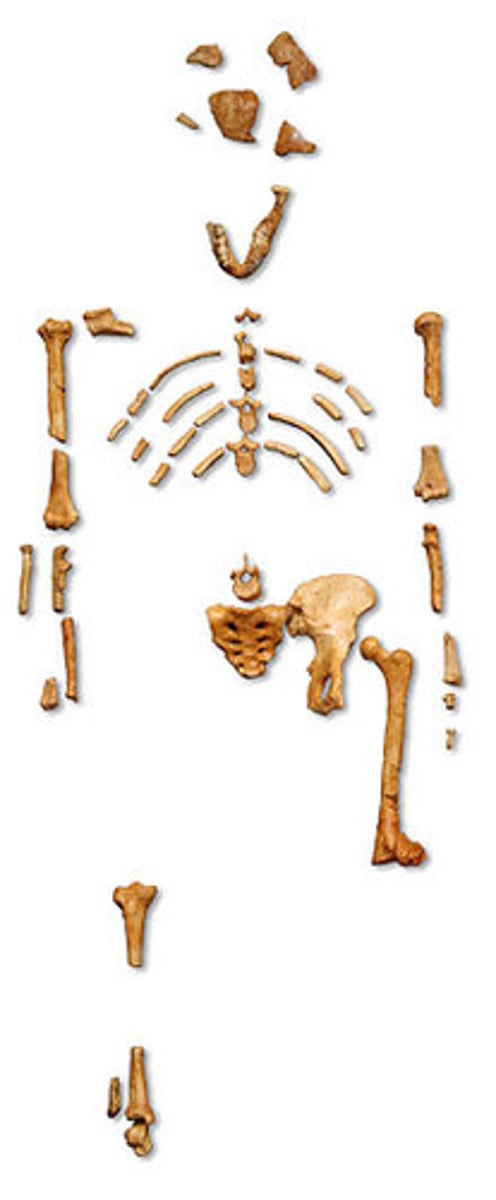
Australopithecus Afarensis (Fact 10)
Innovations: Species of Hominid characterized by using already existing objects like stones and pieces of wood to help them consume food such as berries
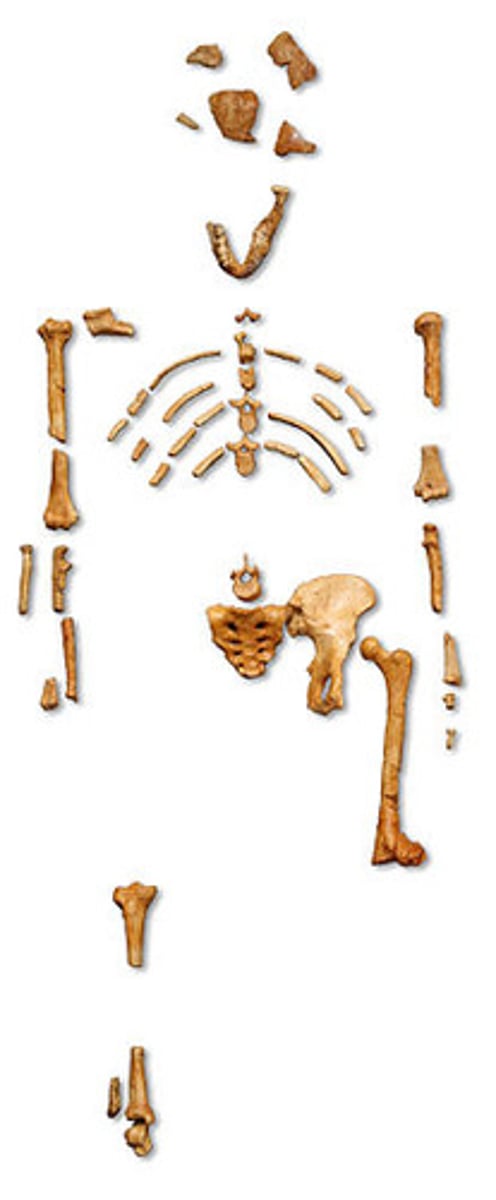
Australopithecus Afarensis (Fact 11)
Lived in an environment of wooded and waterside settings
Australopithecus Anamensis (Fact 1)
Place: Species of Hominid found in recent years but having lived at one time in East Africa
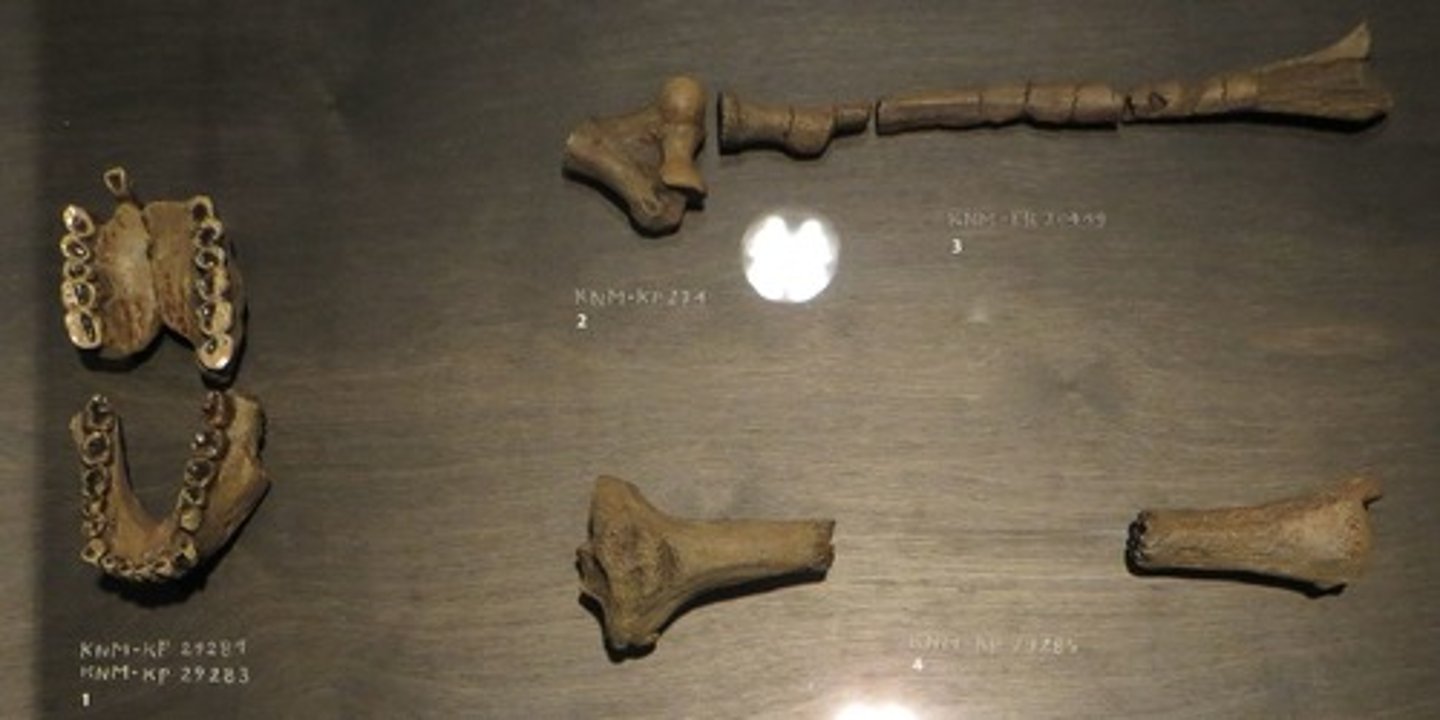
Australopithecus Anamensis (Fact 2)
Time: Species of Hominid that lived sometime between 4.2 Million years BCE and 3.9 Million years BCE
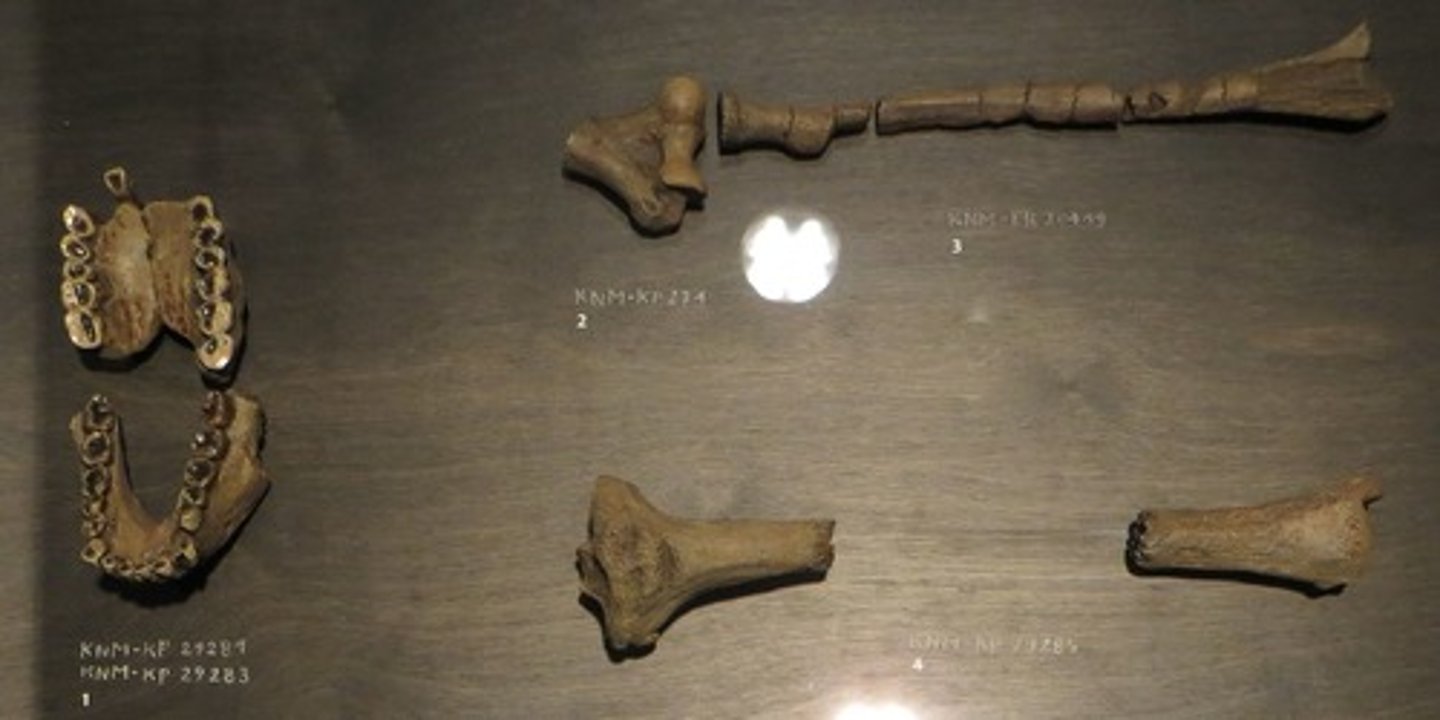
Australopithecus Anamensis (Fact 3)
Physical Characteristic(s): Species of Hominid that may have been a Biped as evidenced by the depicted fossils because one of them is a Femur that is like the one found on the known skeleton of Australopithecus Afarensis, which was a Biped, suggesting it was Bipedal
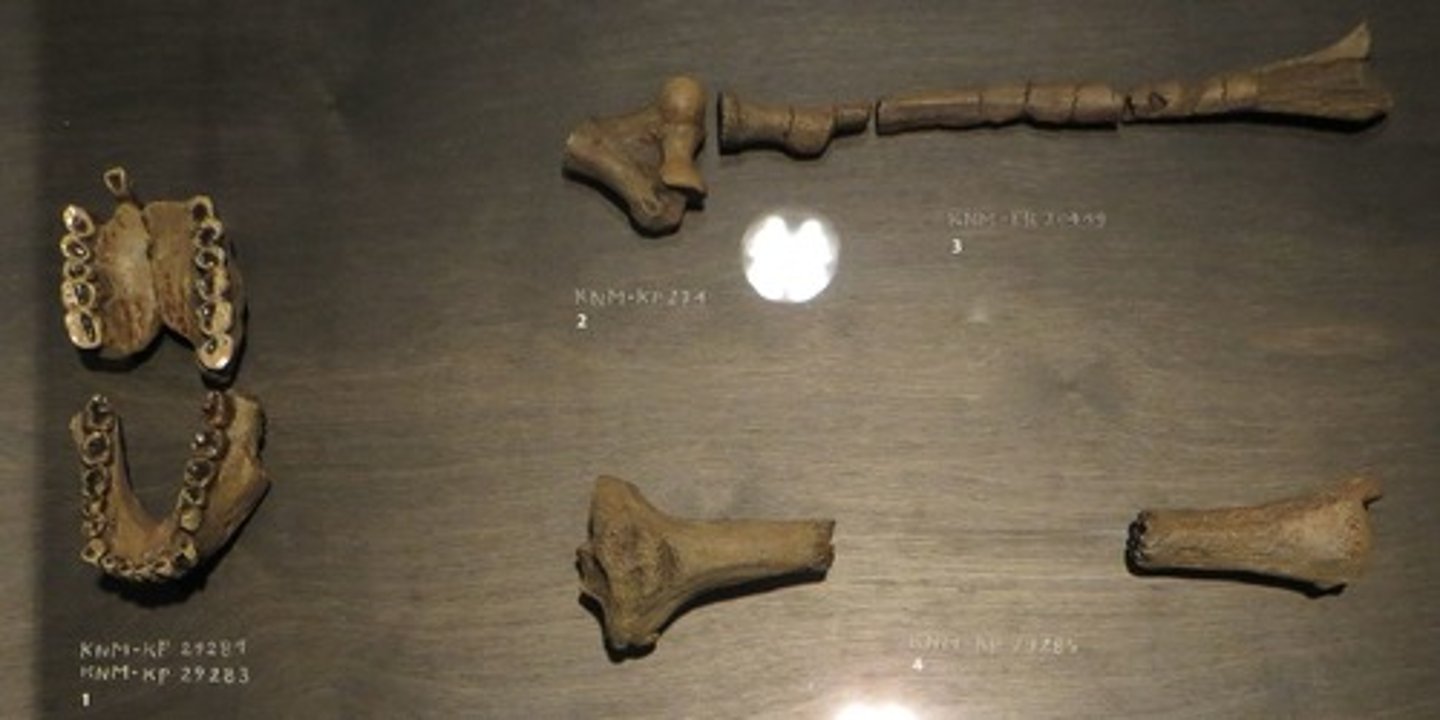
Australopithecus Anamensis (Fact 4)
Physical Characteristic(s): Species of Hominid that may have been a Biped as evidenced by the depicted fossils because one of them is an upper and lower part of a Tibia (shin bone) that were found to be straight like that of humans (rather than slanted like that of chimpanzees), suggesting it was Bipedal
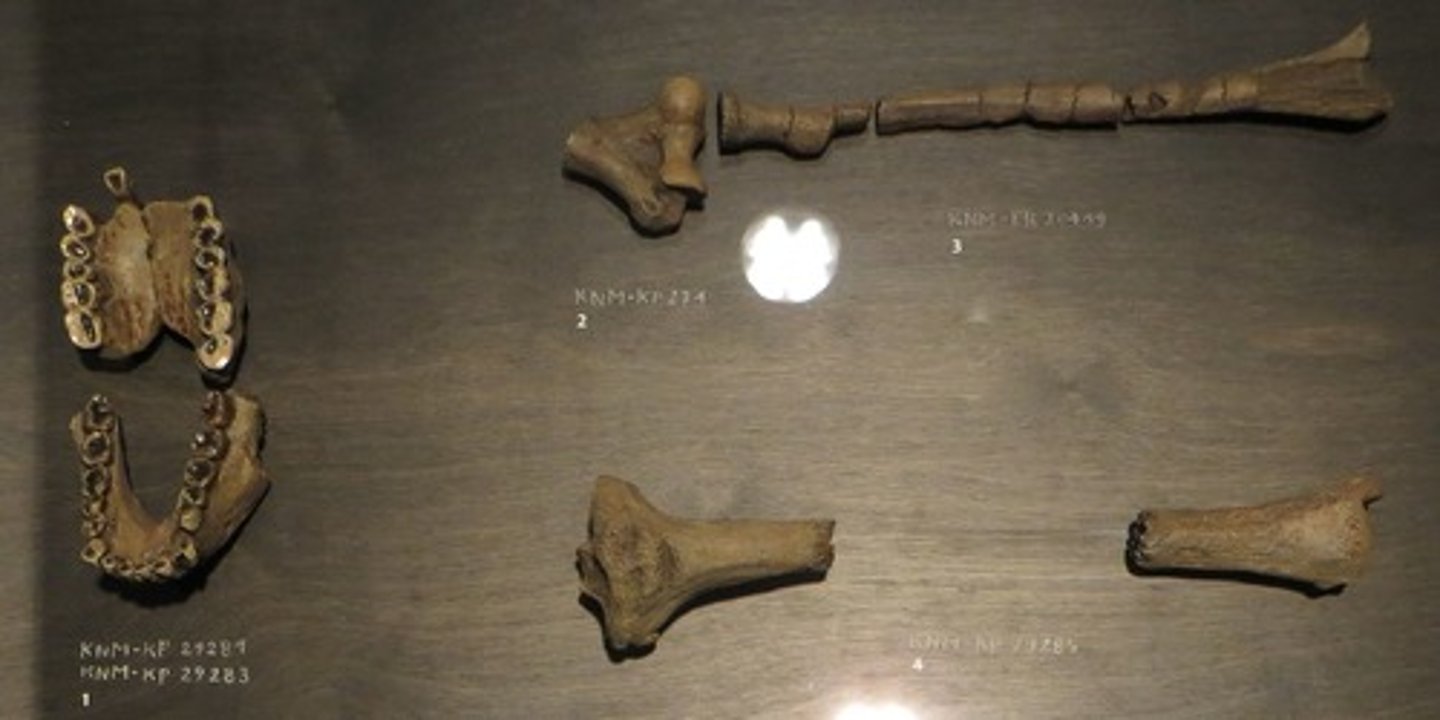
Australopithecus Africanus (Fact 1)
Nickname: Nicknamed the "Taung Child;” are slender omnivores
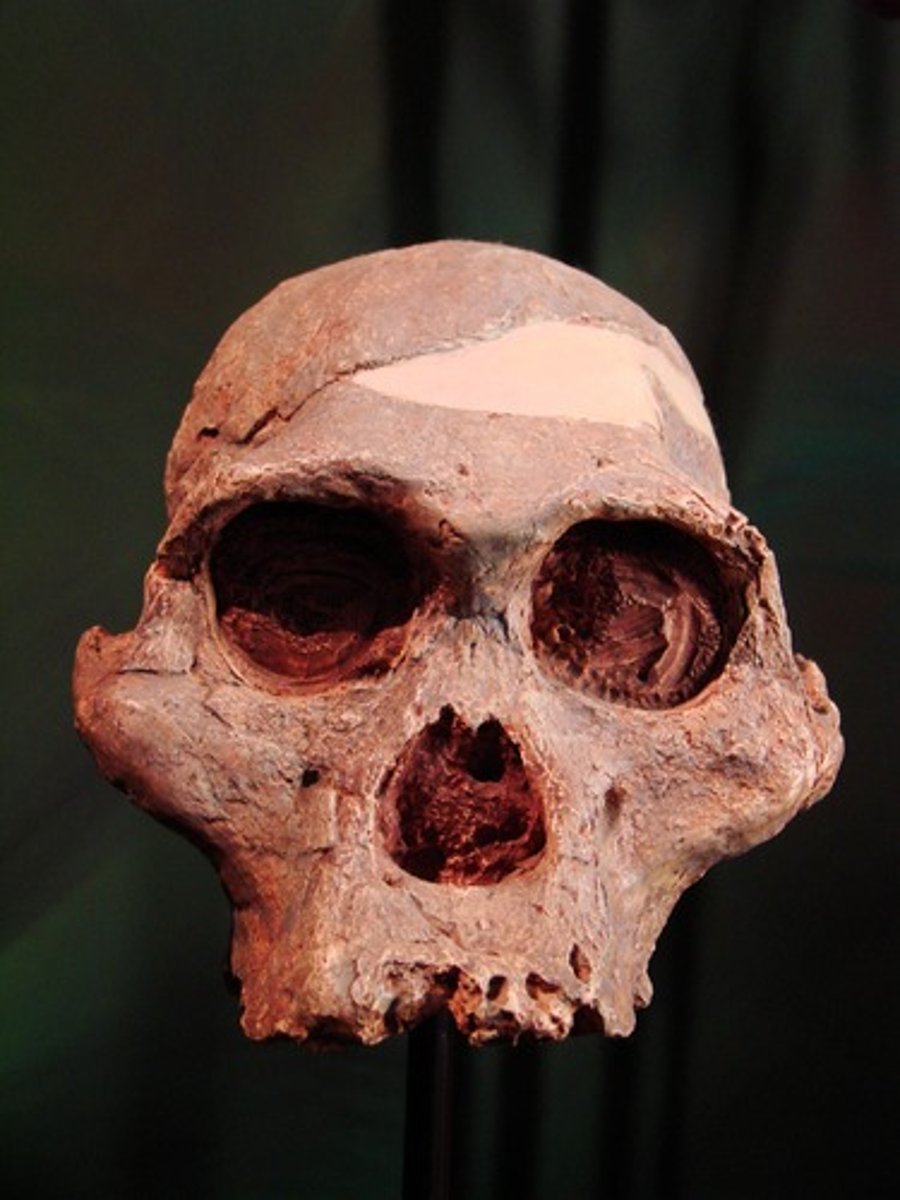
Australopithecus Africanus (Fact 2)
Time: Species of Hominid that lived sometime between 3 Million years BCE and 1.8 Million years BCE, it is the oldest known fossil that suggests Hominids emerged in and from Africa
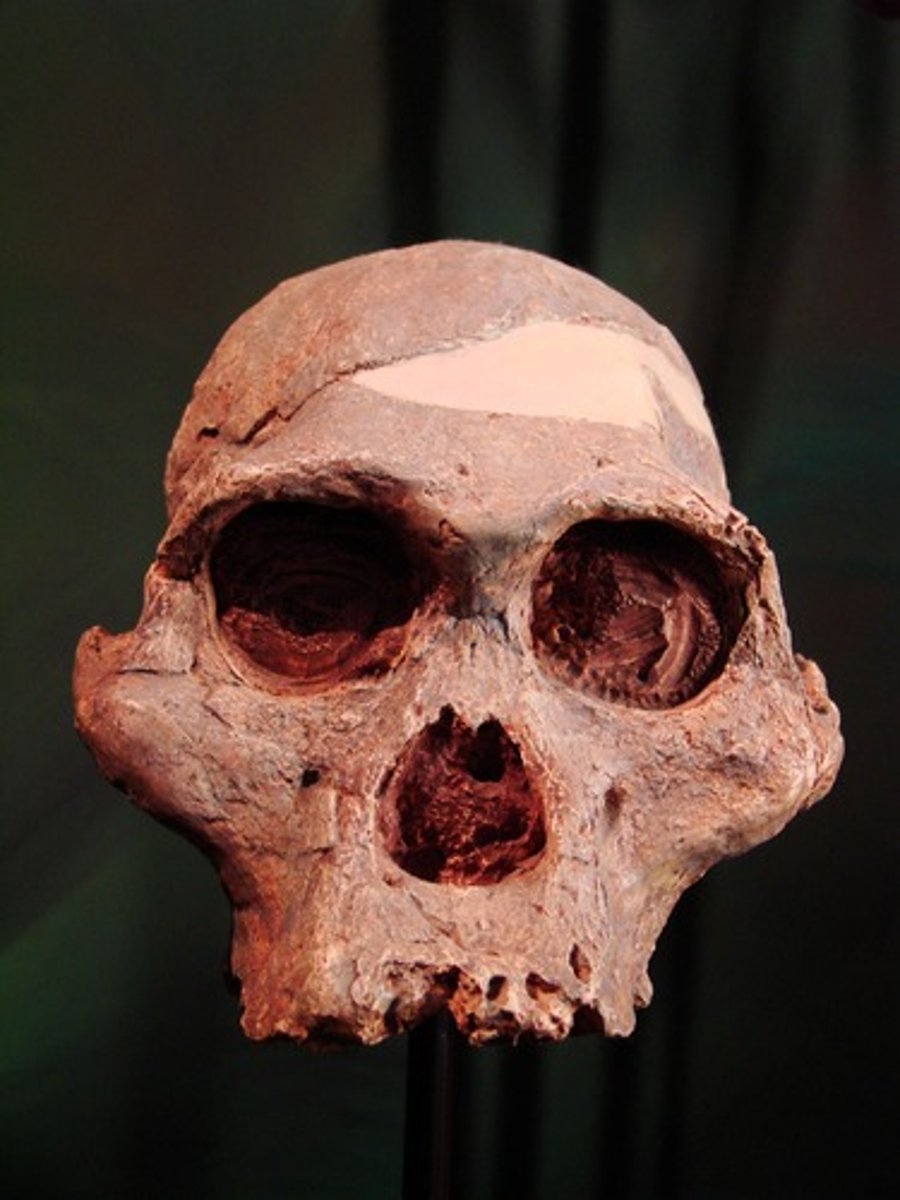
Australopithecus Africanus (Fact 3)
Place: Species of Hominid found in recent years but having lived at one time in Southern Africa, for which they are named, first discovered in Taung, South Africa and the first skull of which is now called the "Taung Child"
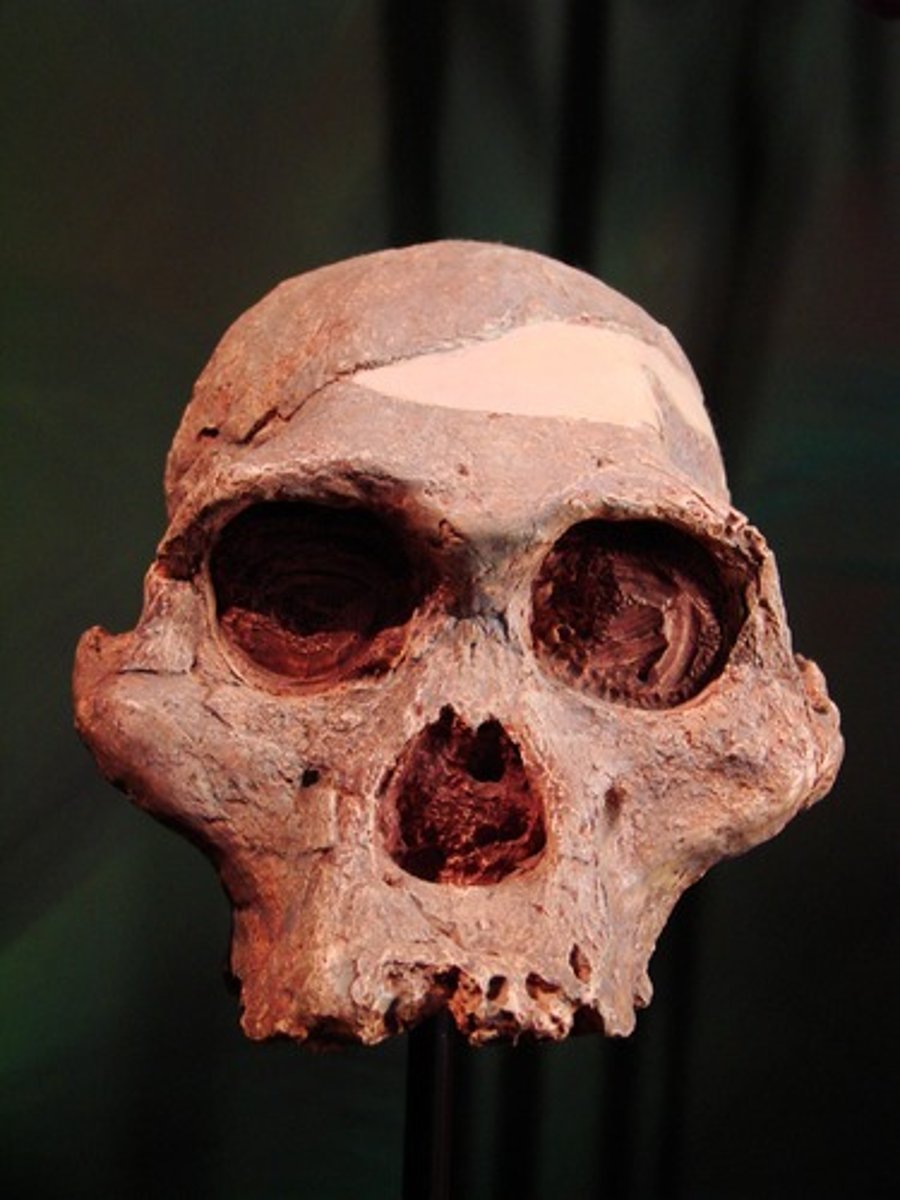
Australopithecus Africanus (Fact 4)
Species of Hominid characterized by being one of the earliest Hominid Species to have been hunted by other animals, before Hominids hunted out other animals in turn; which is based on fossil evidence of the Taung Child Skull that shows puncture holes in the base of the eye sockets of the skull, a depressed fracture at the top of the skull, and scratches on the sides of the skull; all of which suggest trauma
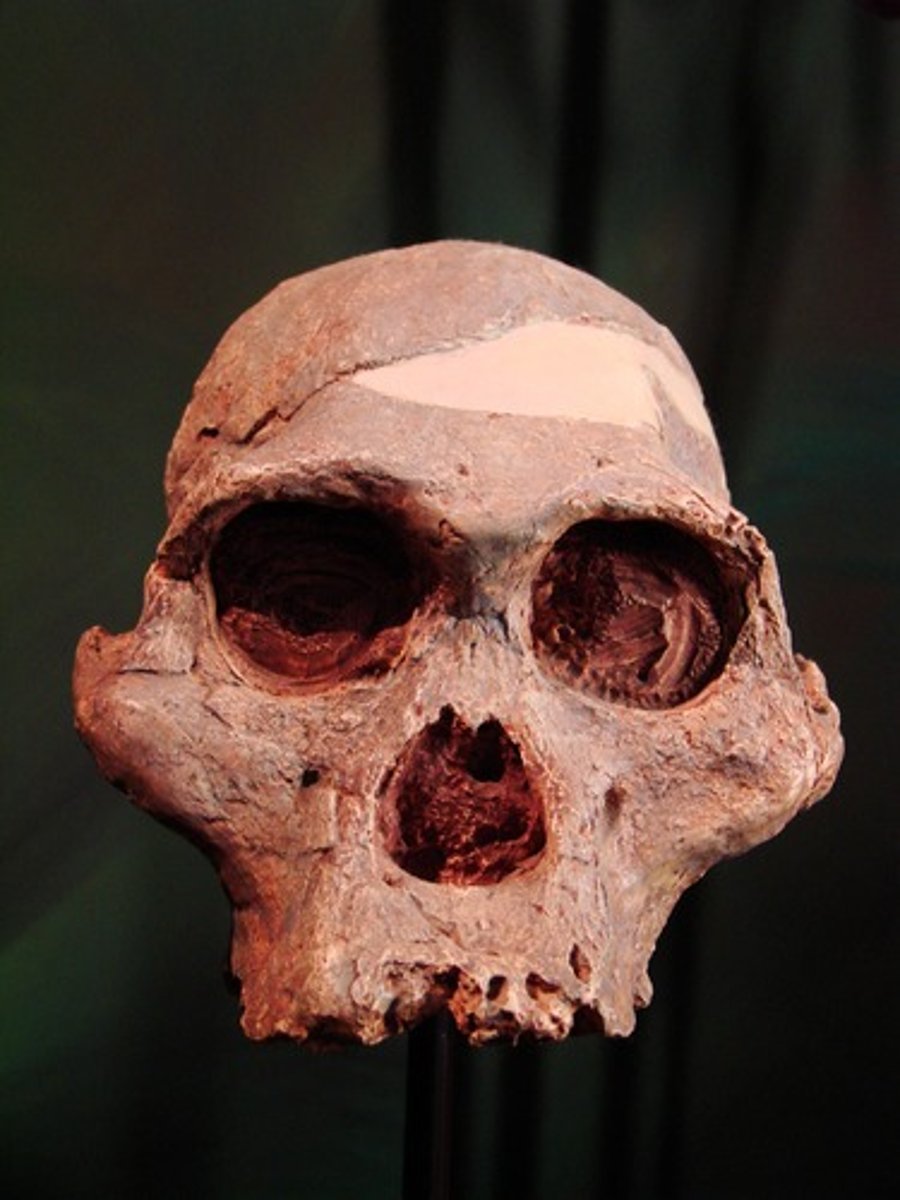
Australopithecus Boisei (Fact 1)
Time: Species of Hominid that lived sometime between 3 Million years BCE and 1.7 Million years BCE
Australopithecus Boisei (Fact 2)
Place: Species of Hominid found in recent years but having lived at one time in South Africa and the Olduvai Gorge in North Tanzania
Australopithecus Boisei (Fact 3)
Physical Characteristic(s): Species of Hominid characterized by a vegetarian diet despite massive teeth and jaws
Australopithecus Robustus (Fact 1)
Time: Species of Hominid that lived sometime between 2 MYA and 1 MYA
Australopithecus Robustus (Fact 2)
Place: Species of Hominid found in recent years but having lived at one time in Southern Africa
Australopithecus Robustus (Fact 3)
Physical Characteristic(s): Species of Hominid characterized by being a more heavily built vegetarian
Australopithecus Sediba (Fact 1)
Tools and Toolmaking: Species of Hominid newly considered by some anthropologists as having been the first toolmaker before Homo Habilis
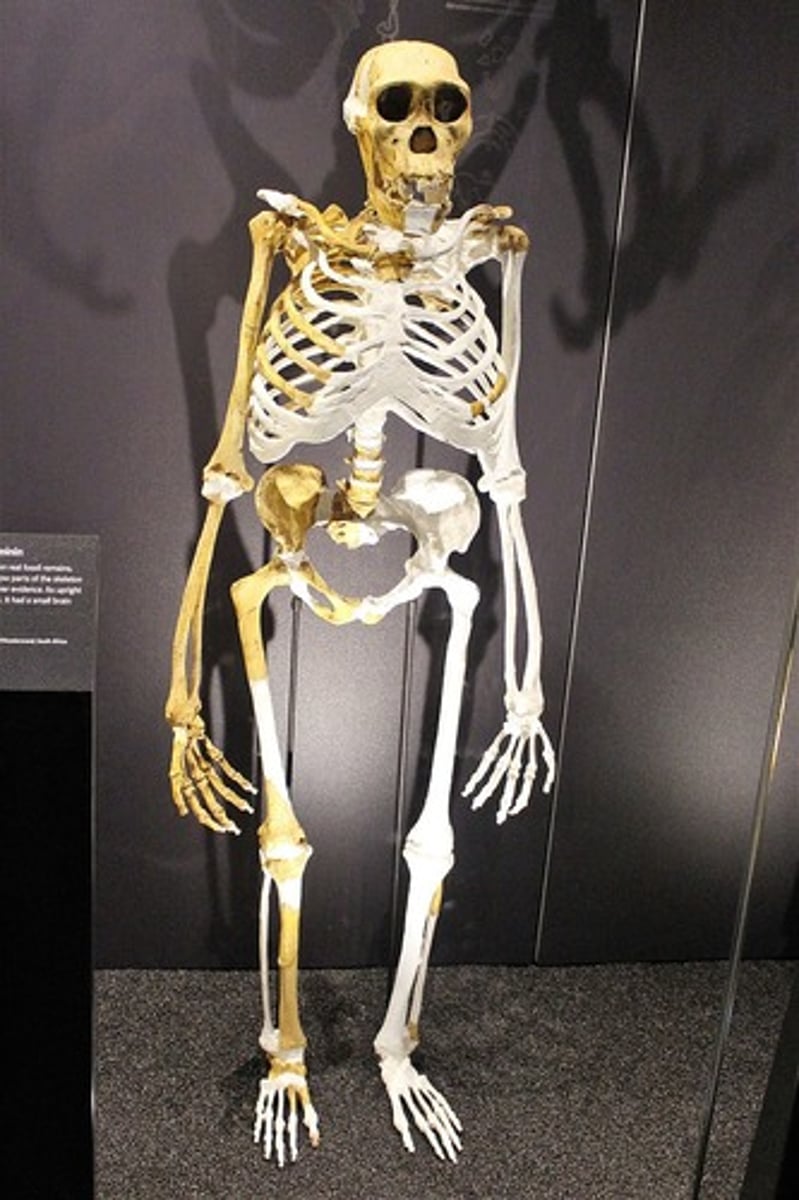
Australopithecus Garhi (Fact 1)
Time: Species of Hominid that lived sometime between 2.6 MYA and 2.5 MYA
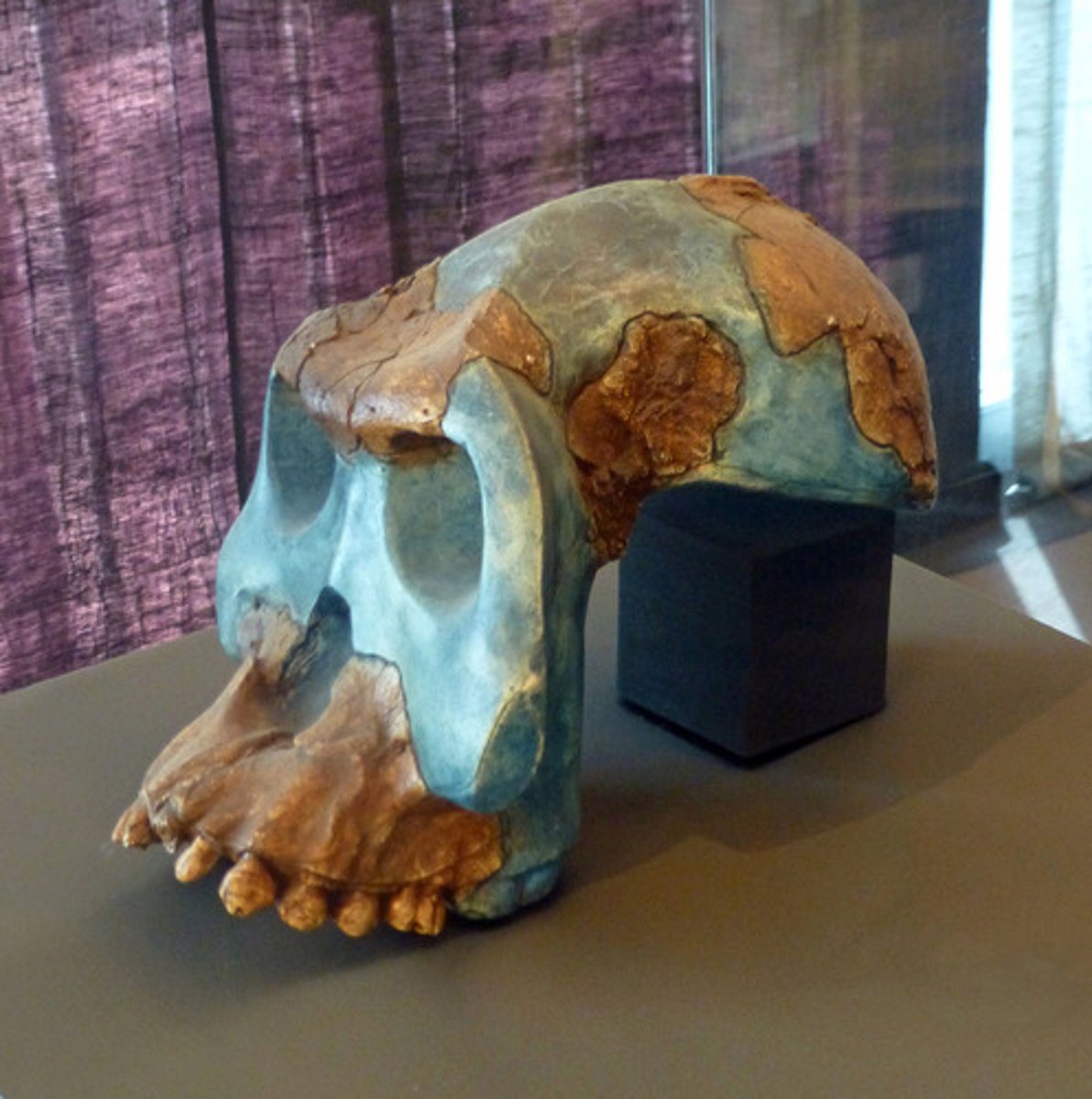
Australopithecus Garhi (Fact 2)
Place: Species of Hominid found in recent years but having lived at one time in the Bouri Formation in the Afar Region of Ethiopia
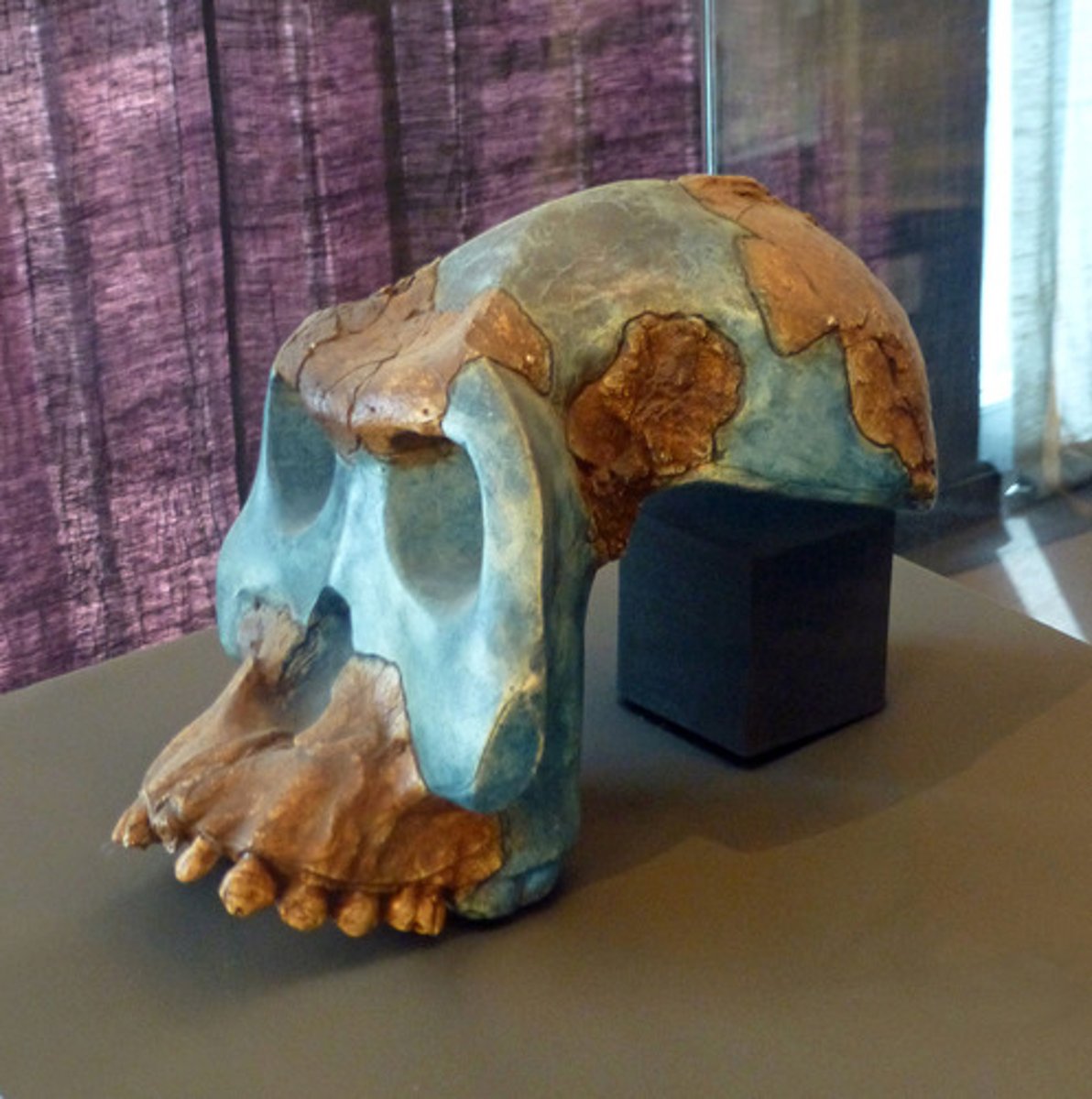
Australopithecus Garhi (Fact 3)
Physical Characteristic(s): Species of Hominid characterized by brain volume of 450 cc, a jaw which jutted out (prognathism), relatively large molars and premolars, adaptations for both walking on two legs (bipedalism), grasping while climbing (arboreality), and males being larger than females (sexual dimorphism)
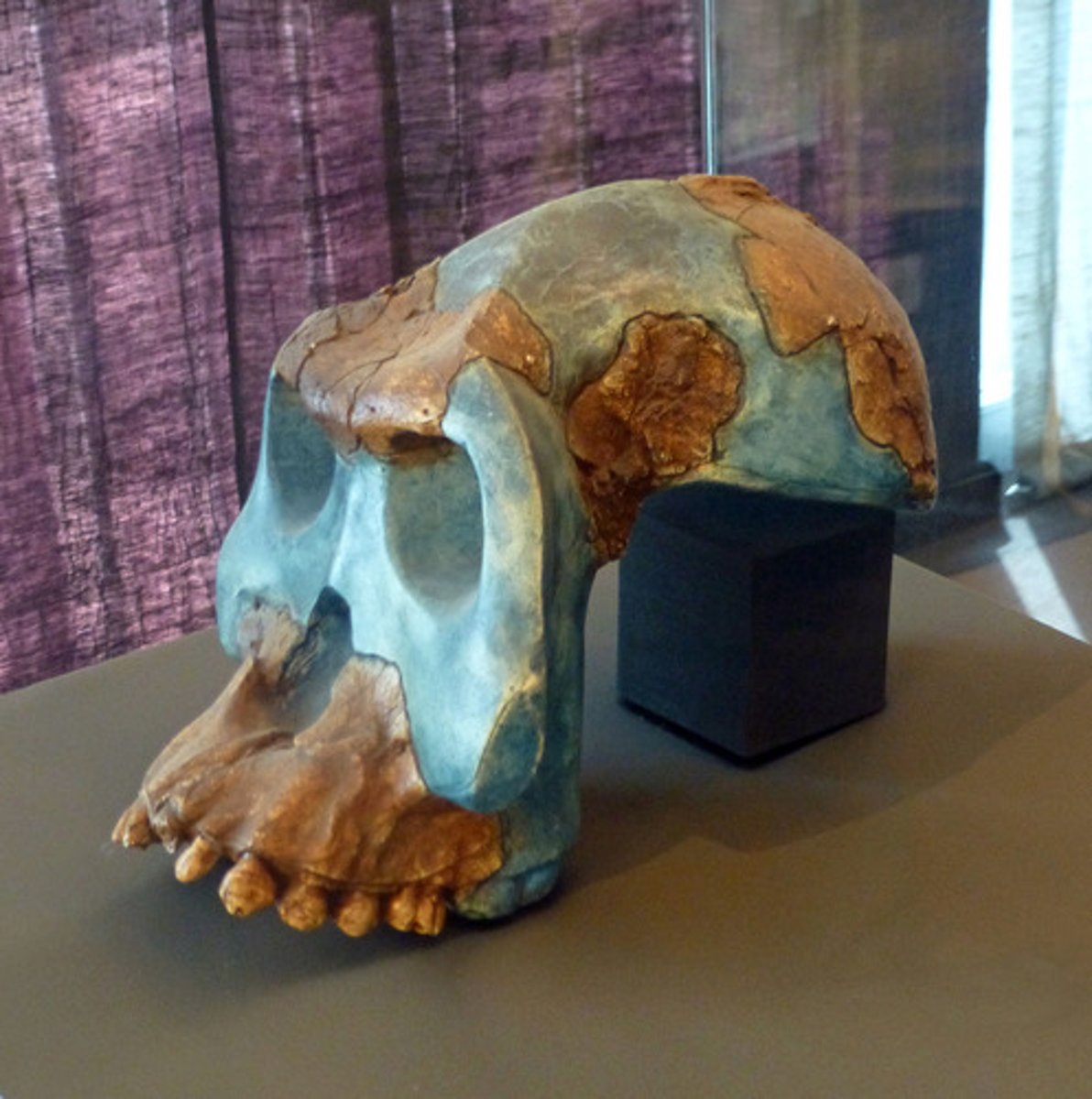
Australopithecus Garhi (Fact 4)
Tools and Toolmaking: Species of Hominid newly considered by some anthropologists as having been the first toolmaker before Homo Habilis and the namesake "surprise" or "missing link" between the toolmaking of primates and toolmaking of Homo Habilis and overall Homo Genus
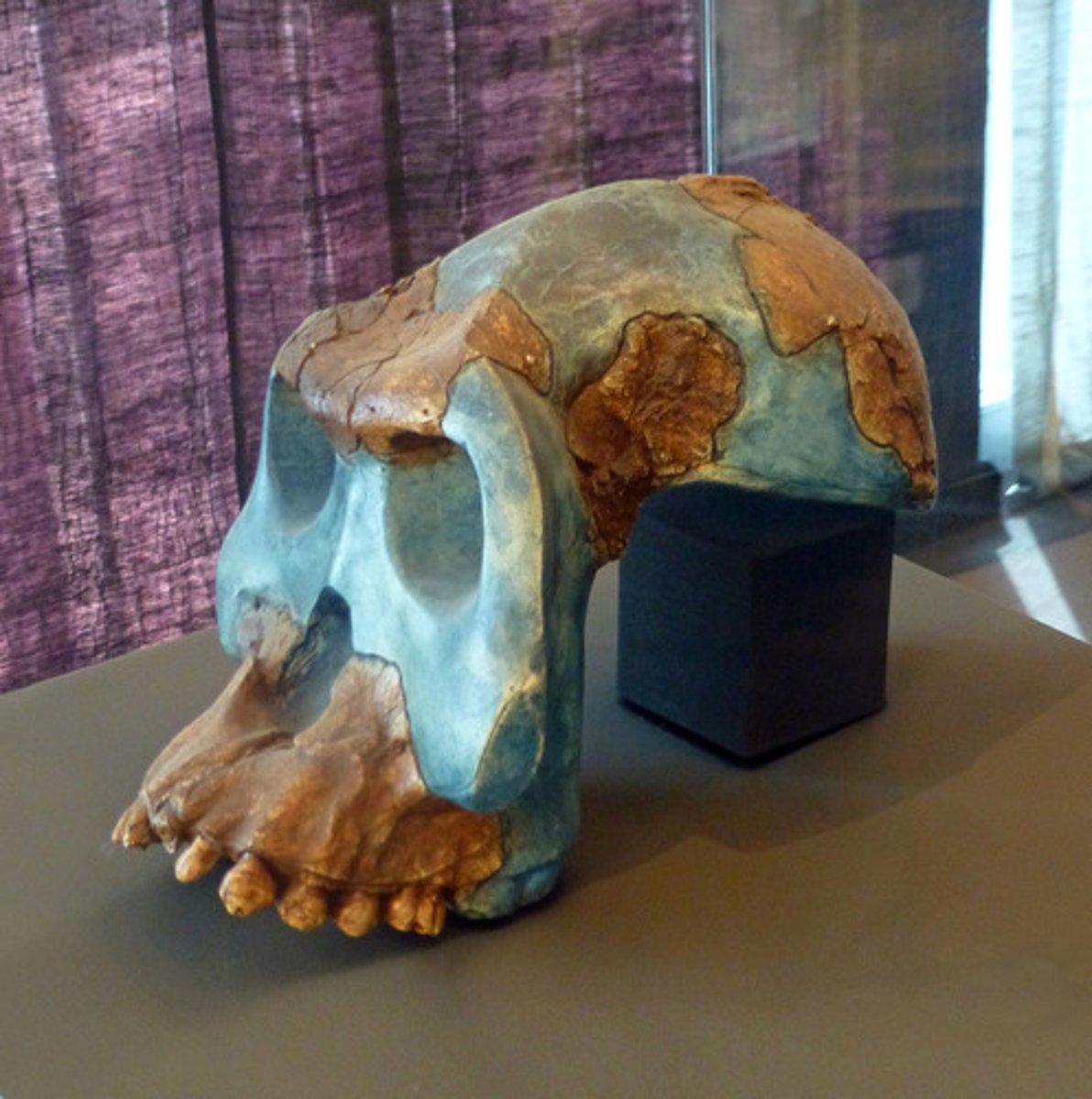
Australopithecus Garhi (Fact 5)
Tools and Toolmaking: Species of Hominid considered by defying the distinction between Homo and Australopithecine Genuses and (likely) inventing the Oldowan Tools/Tool Set/Lithic Industry before Homo Habilis
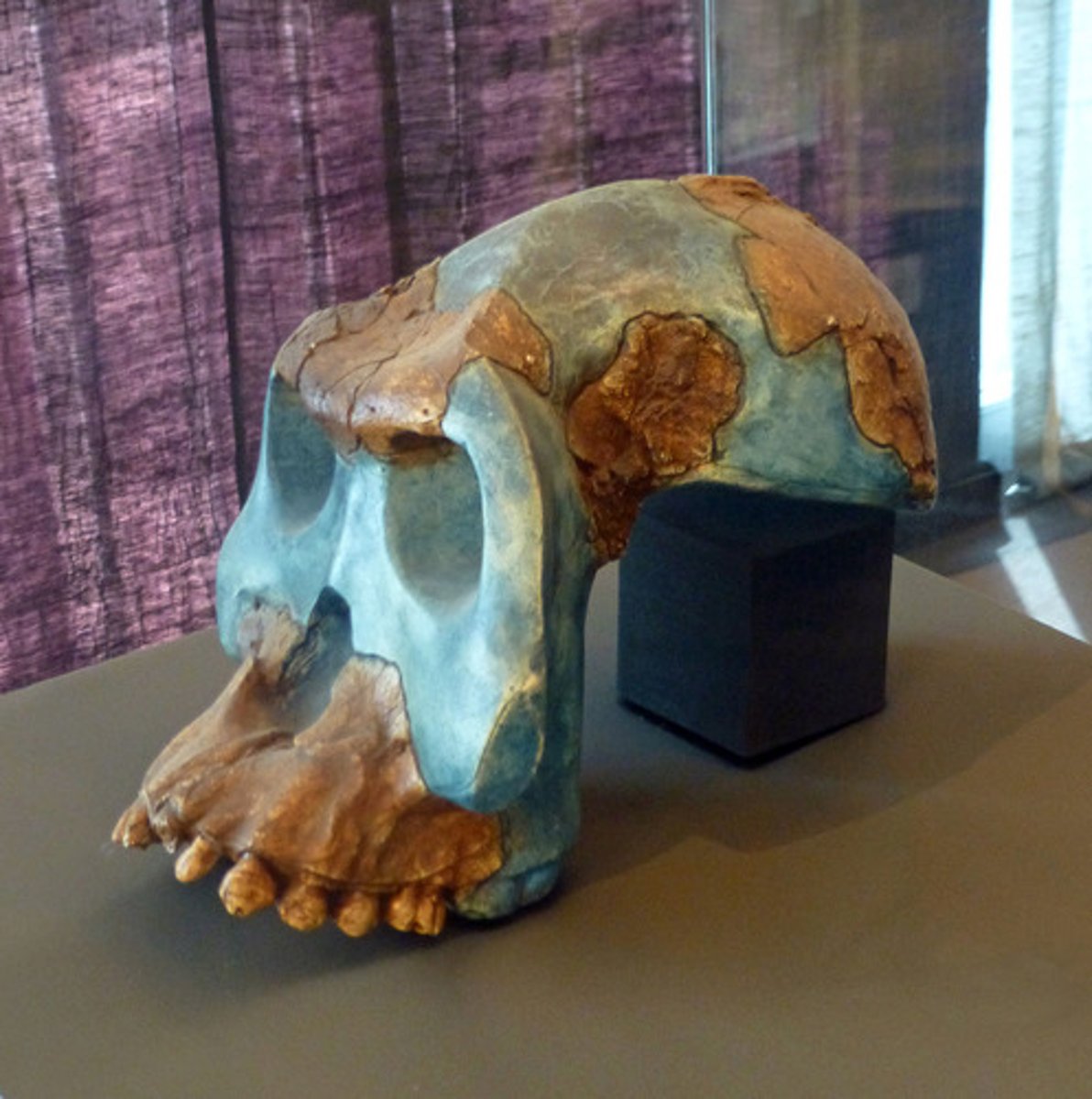
Homo Habilis (Fact 1)
Nickname: Species of Hominid nicknamed "Handy Man", which refers to their ability to make tools (and likely being the definitively first Hominid to make tools and keep made tools, unlike their predecessors which made but did not keep or reuse tools)
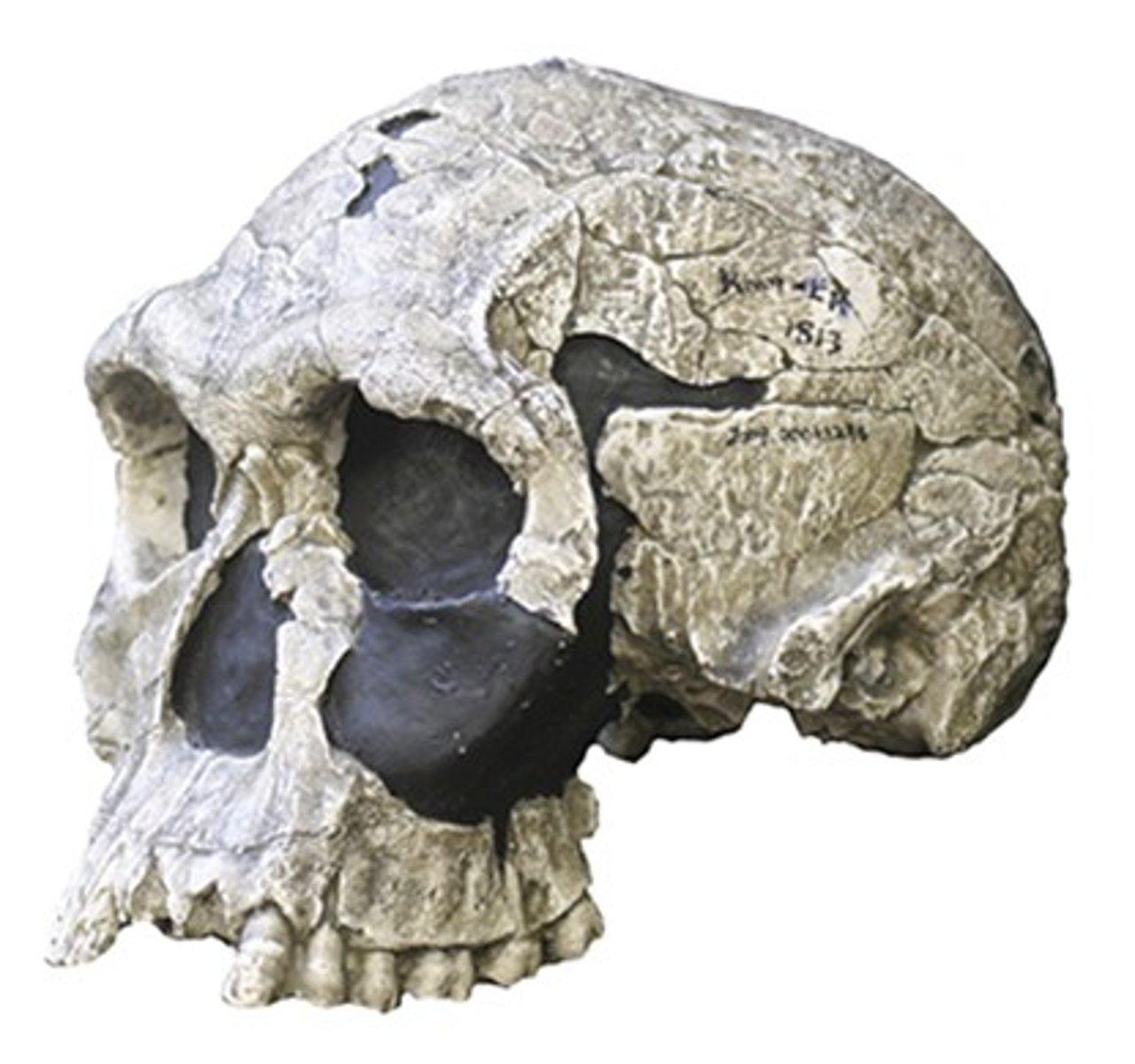
Homo Habilis (Fact 2)
Time: Species of Hominid that lived sometime between 2.4 MYA to 1.5 MYA (most likely), the direct descendant of the Australopithecines
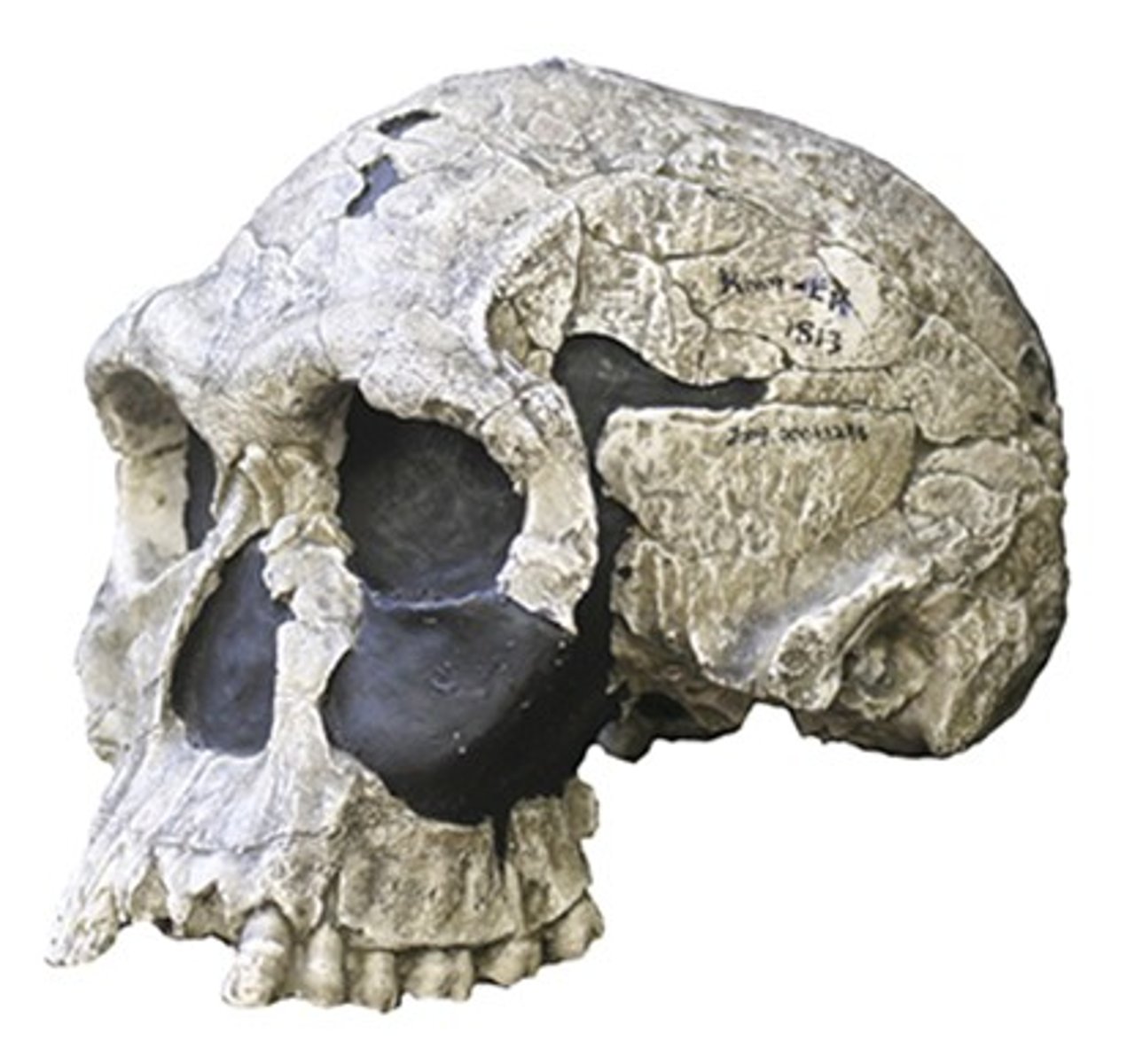
Homo Habilis (Fact 3)
Place: Species of Hominid found in recent years but having lived at one time in the Omo River Valley by Lake Turkana in Kenya, Olduvai Gorge in Tanzania, Ethiopia, and Sterkfontein, South Africa
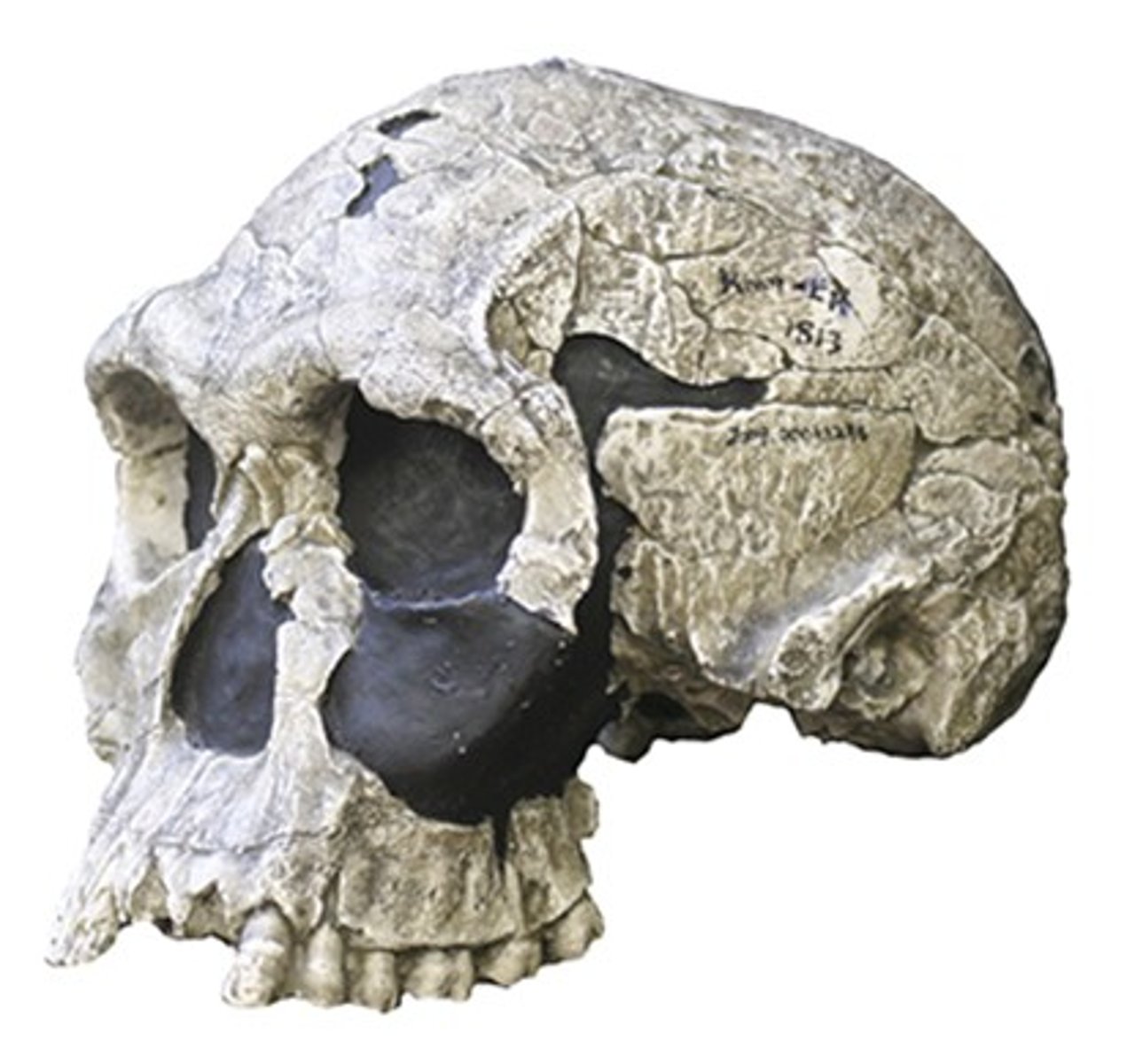
Homo Habilis (Fact 4)
Tools and Toolmaking: Species of Hominid characterized by being (most likely) associated with and having made the Oldowan Tools/Tool Set/Lithic Industry, the first of which is of high enough quality to be reused, made out of carefully chosen raw materials such as Quartz and Basalt, is made using both hands, is made and reworked such as being resharpened, is unifacial, and contributes to the cutting of animals for the consumption of foods with higher nutritional value than before, increasing the size of the brain and body of the Homo Genus
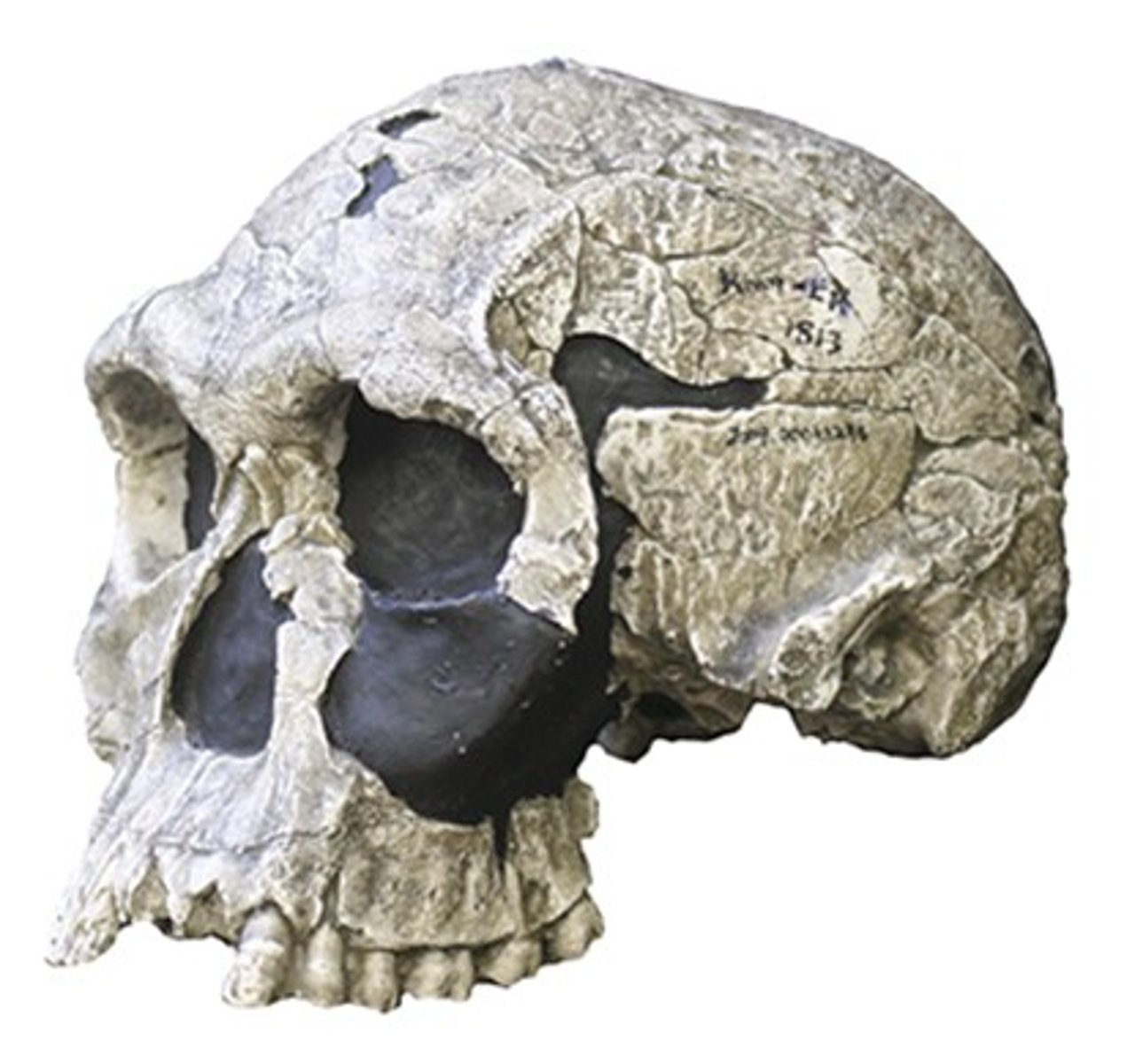
Homo Habilis (Fact 5)
Tools and Toolmaking: Species of Hominid characterized by being (most likely) associated with the Oldowan Tools/Tool Set/Lithic Industry which includes the invention/innovation of the hammerstone, (pounder), polyhedral cores, flat-platform cores, bipolar cores, discoids, choppers, and animal bones (likely used as digging sticks)
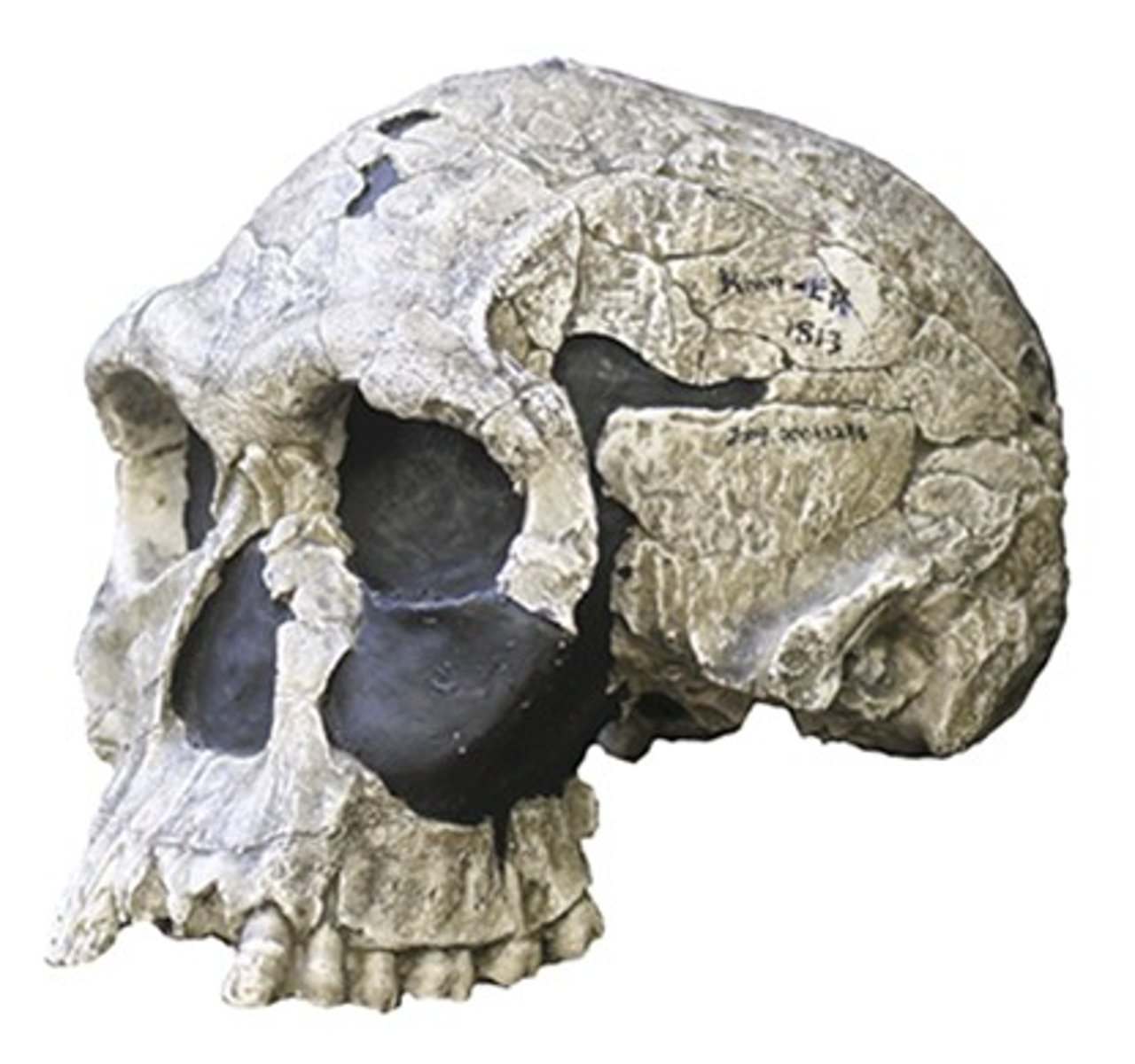
Homo Habilis (Fact 6)
Physical Characteristic(s): Species of Hominid characterized by a brain size of 700cc (larger than that of any previous Hominid and significantly larger than the Australopithecines but still much smaller than later species of Hominid) that allowed them to realize that they could use tools to live easier and longer, which they did, living longer than any previous species of Hominid
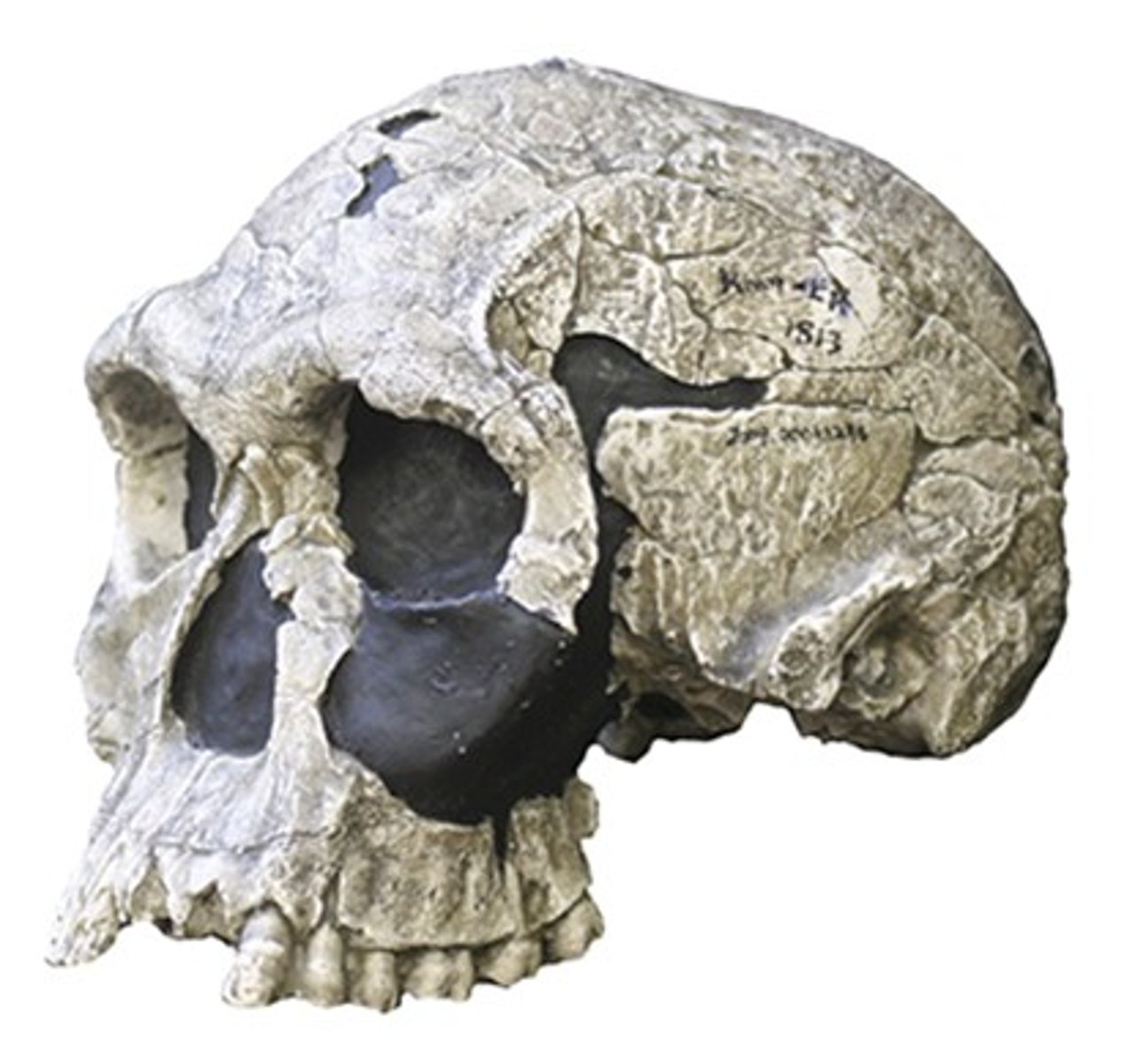
Homo Habilis (Fact 7)
Physical Characteristic(s): Species of Hominid characterized by there being no more shelf of bone at the rear of the skull to anchor the strong jaw muscles
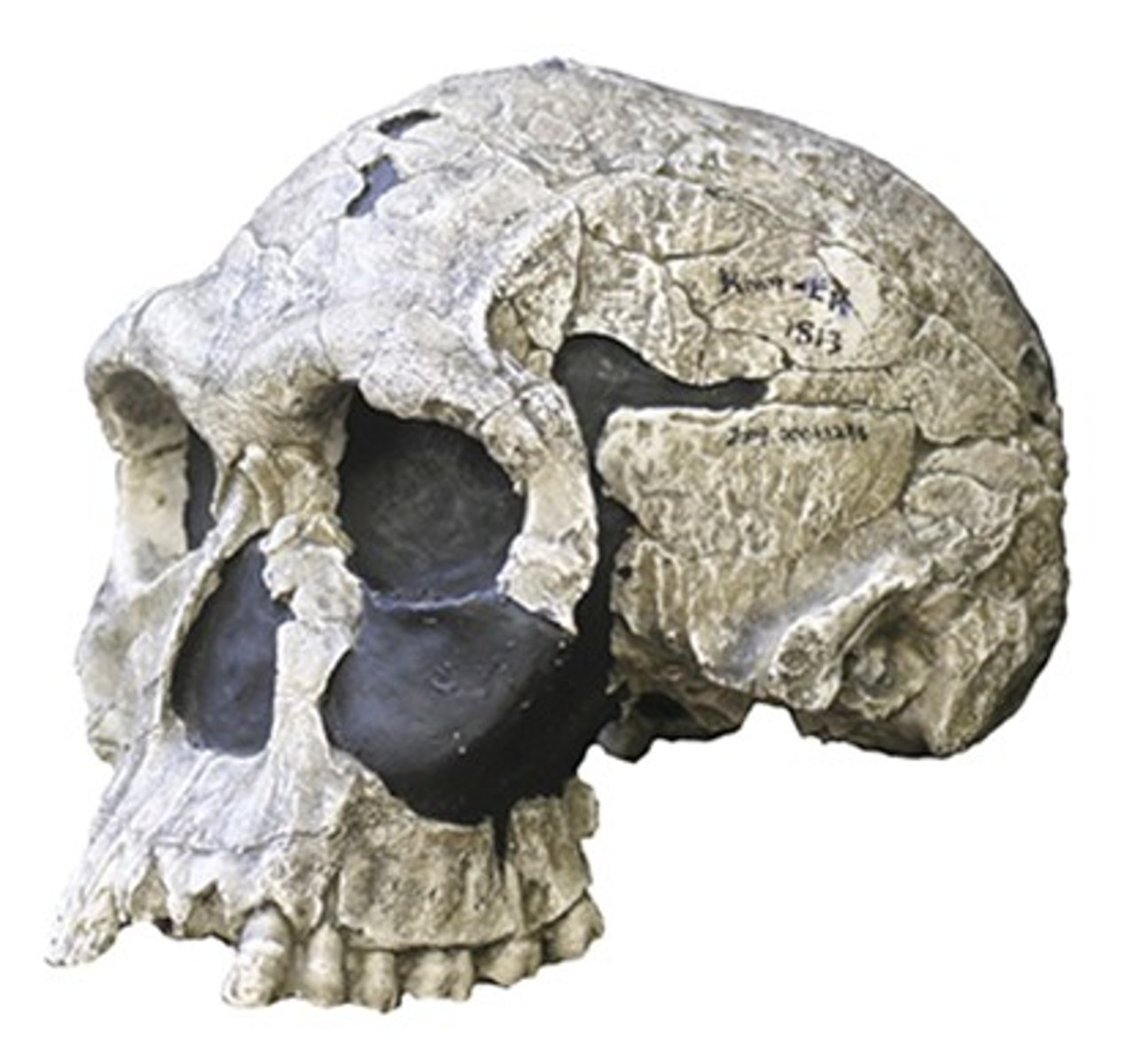
Homo Habilis (Fact 8)
Physical Characteristic(s): Species of Hominid characterized by having relatively longer arms and a more protruding face but with far less pronounced brow ridges
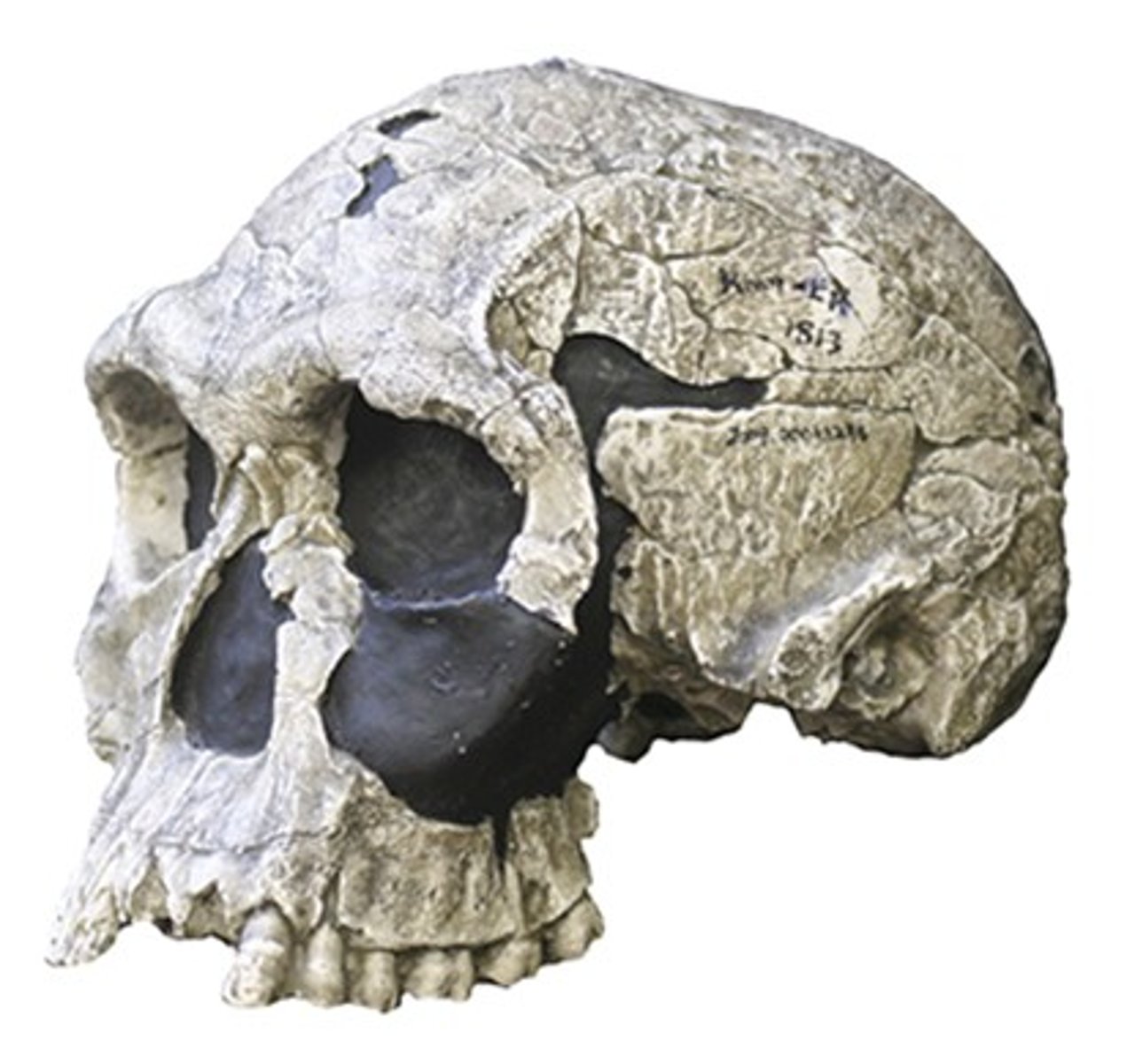
Homo Habilis (Fact 9)
Physical Characteristic(s): Species of Hominid characterized by having an omnivorous diet (instead of a carnivorous one due to having smaller teeth meaning they likely were able to prepare their own food)
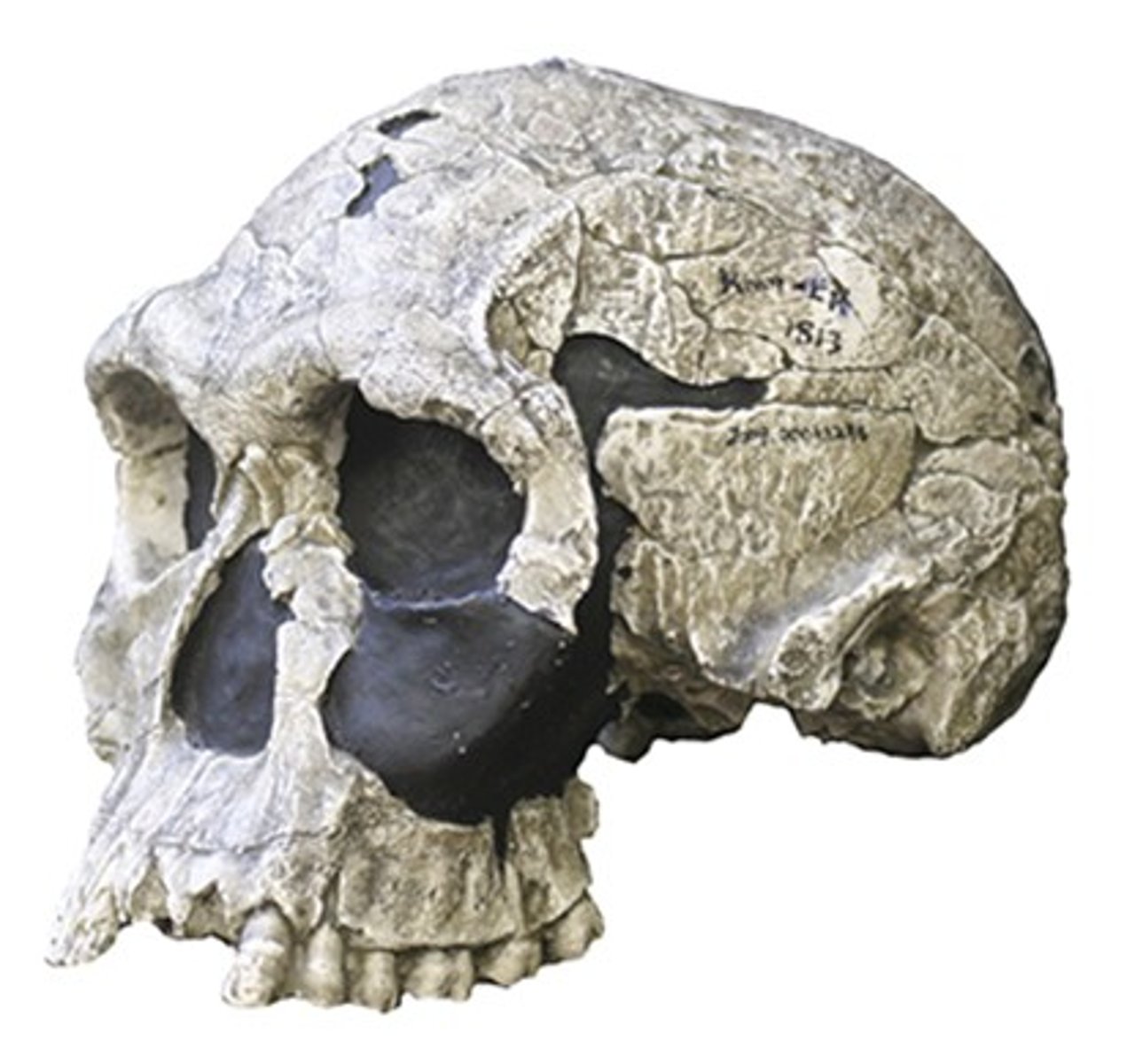
Homo Habilis (Fact 10)
Innovations: Species of Hominid characterized by getting food (meat) by scavenging for it (rather than hunting) and used tools from their Oldowan Tool Set to cleave meat off carrion or to break bones to expose and/or extract bone marrow
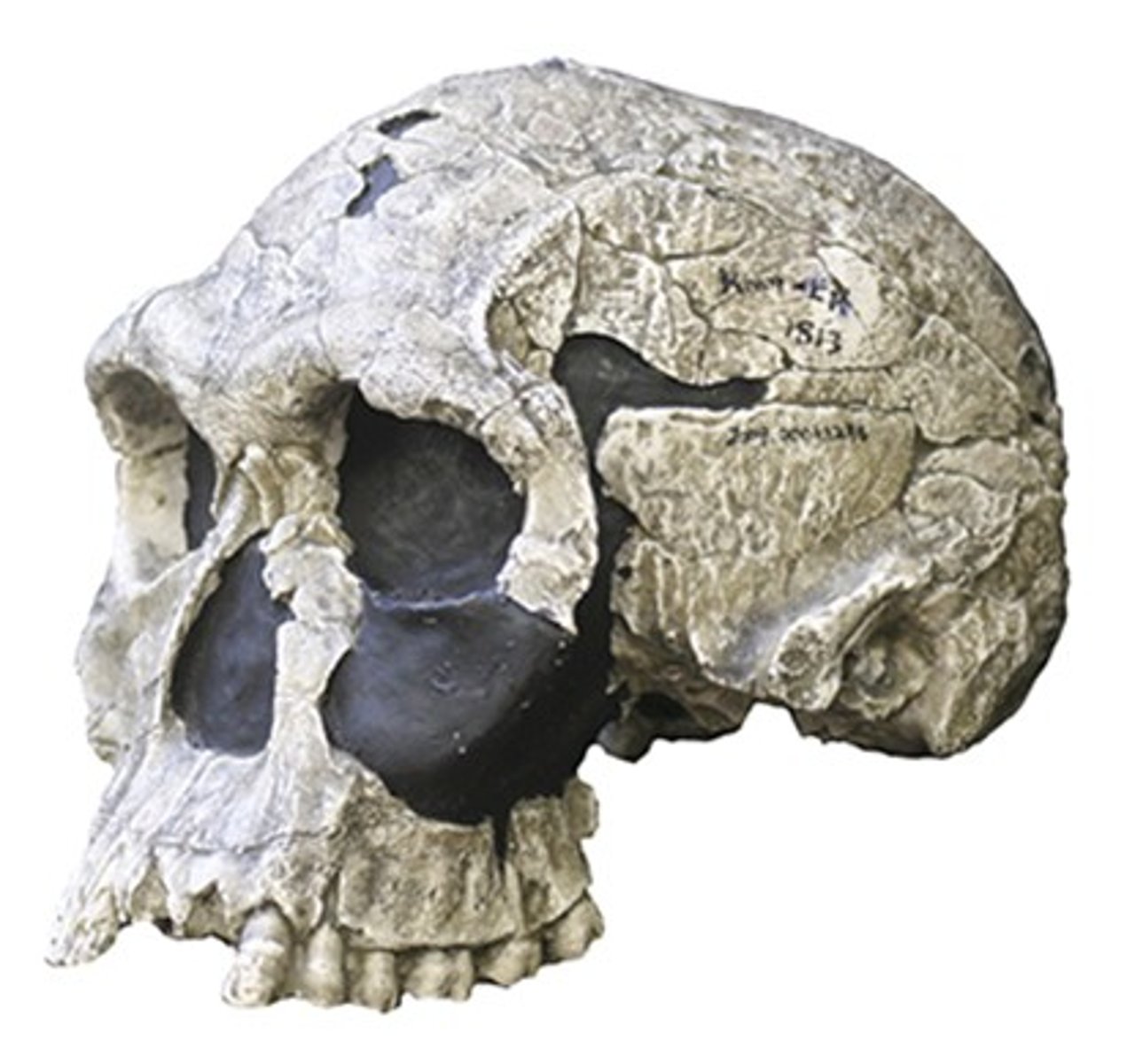
Homo Habilis (Fact 11)
Around 2 MYA, they made basic stone tools by the simple device of chipping pebbles to produce a sharp cutting edge since they were capable of a “precision grip”
Homo Habilis (Fact 12)
Regularly make tools and their toolmanship spreads across Africa from Olduvai in Tanzania and Lake Turkana in Kenya, together with other settlements in Ethiopia and Kenya, to as far south as Sterkfontein in South Africa
Homo Habilis (Fact 13)
Differs from Australopithecines in several ways:
The average brain size is 700cc (compared to 450-500cc)
Brow ridges are far less pronounced
No shelf of bone at the rear of the skull to anchor the strong jaw muscles
Their large teeth, which make them better suited to a diet of more gritty vegetable matter and thus make them omnivorous
Homo Habilis (Fact 14)
Their tools are crudely flaked pebbles with sharp edges and they obtain food by scavenging; and their tools are created by using a stone hammer to smash quartz or chip flakes from pebbles
Homo Habilis (Fact 15)
Found in the Serengeti Plain in Tanzania, Africa along with Homo Erectus
Homo Erectus (Fact 1)
Nickname: Species of Hominid nicknamed "Upright Man", which refers to their unique body structure; they were most likely the direct descendant (or global offshoot of the African-based) Homo Ergaster
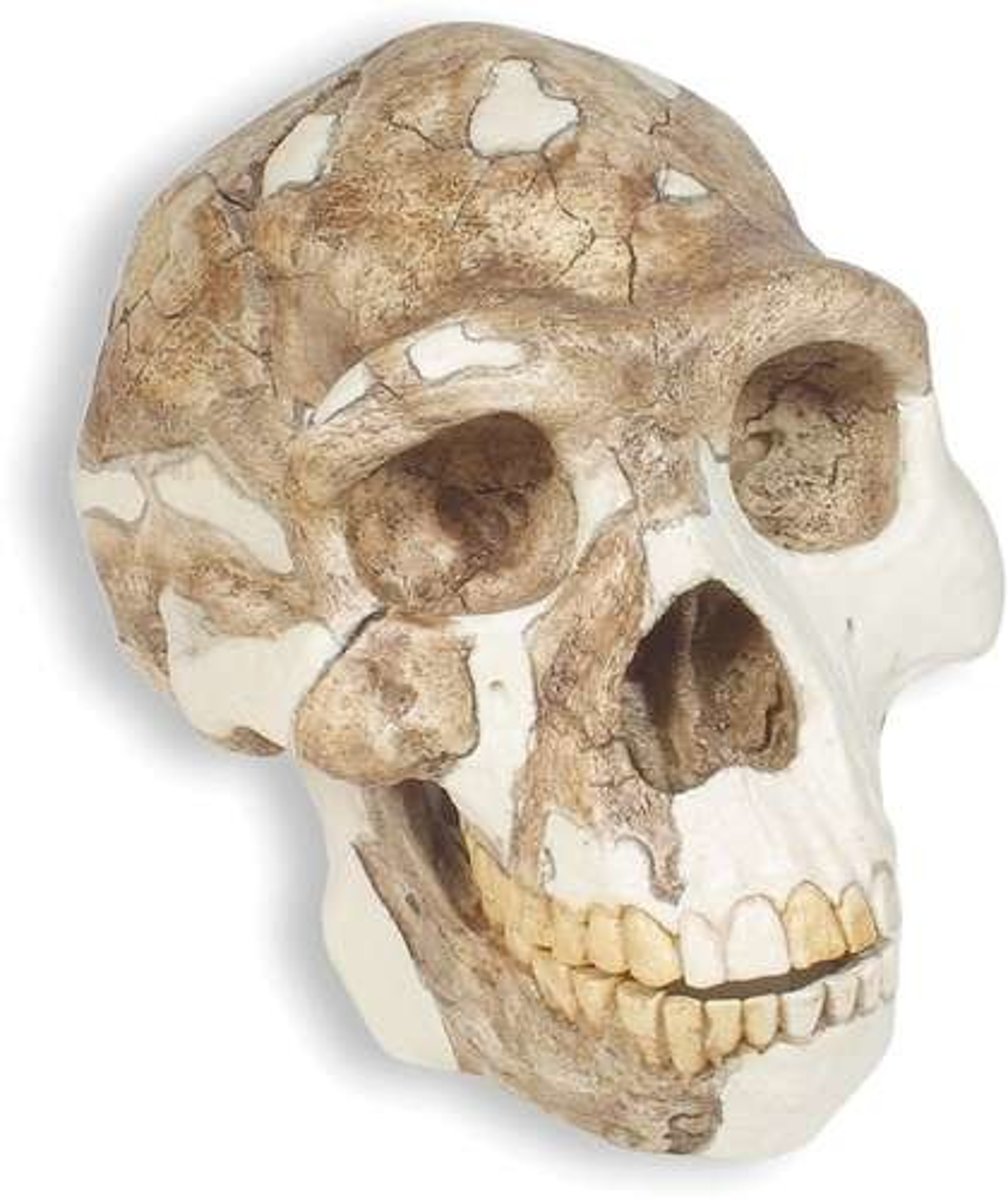
Homo Erectus (Fact 2)
Time: Species of Hominid that lived from around 1.9 Million years BCE to sometime between 27,000 and 143,000 years ago (there are conflicting sources), having lived longer than any of the previous Hominids
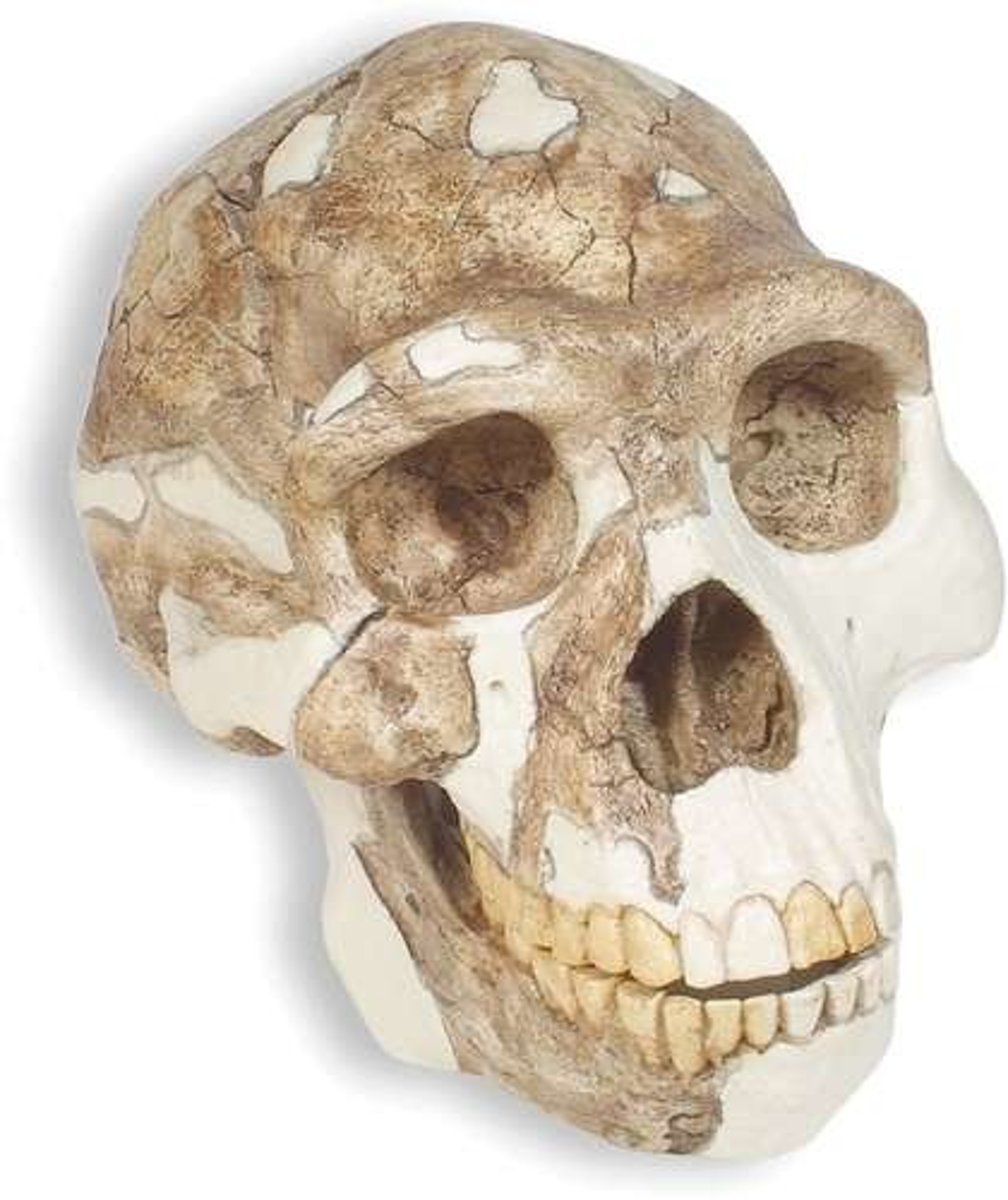
Homo Erectus (Fact 3)
Place: Species of Hominid being the first Hominids to travel outside of EastAfrica and around the world, found in recent years but having lived at one time west of Lake Turkana, in the Olduvai Gorge in Tanzania, Africa; in the "Rift Valley" of East Africa; and spreading all across the world into Northern Pakistan, the Republic of Georgia (Dmanisi), China, Java, Indonesia; and eventually all the way to Europe (either via SW Asia or the Straits of Gibraltar) all between the time of 1.8 Million years BCE and 1.5 Million years BCE
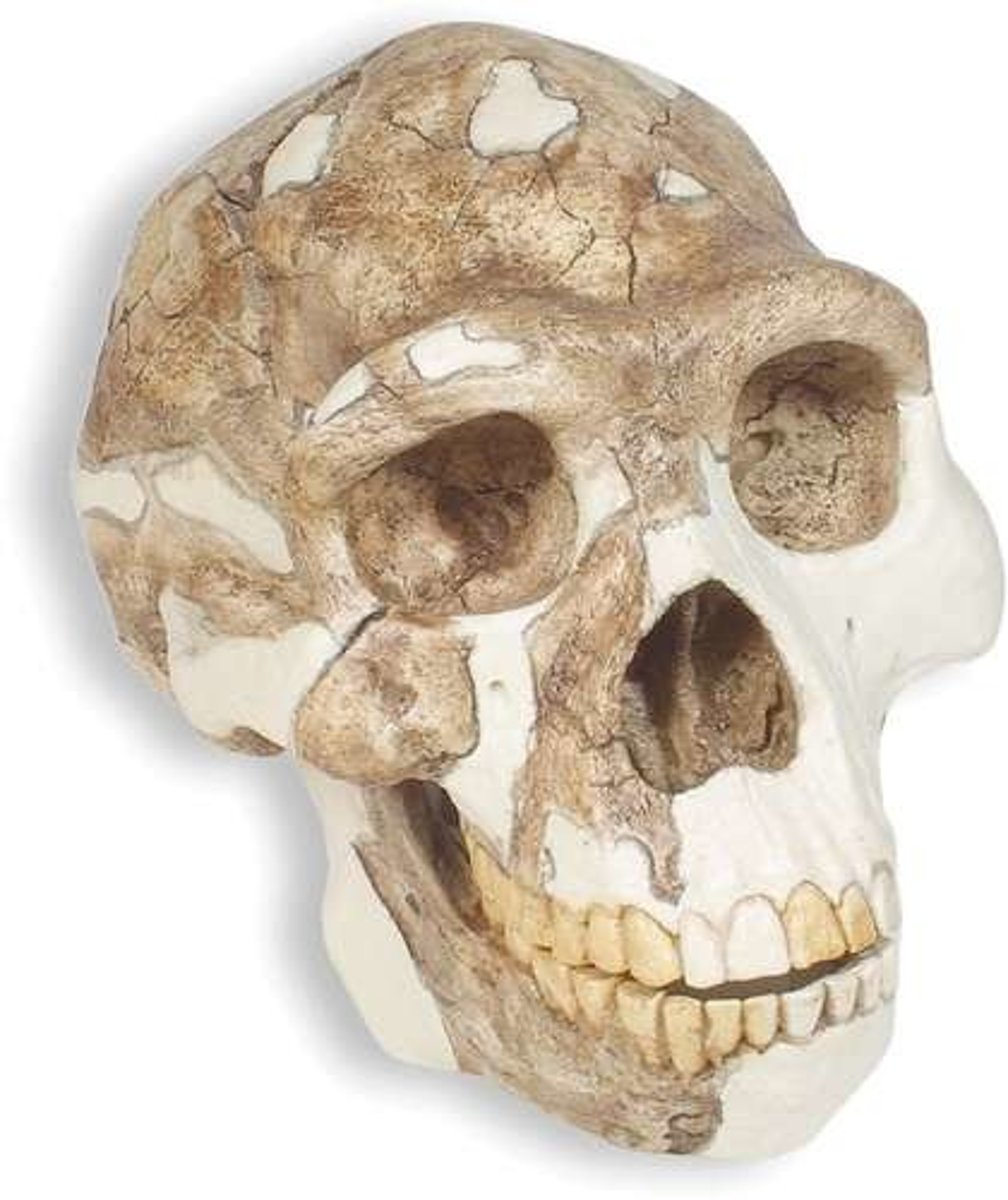
Homo Erectus (Fact 4)
Physical Characteristic(s): Species of Hominid characterized by having bigger and taller bodies than any of the previous Hominids with bigger and stronger legs with which they used to run faster and easier than any of the previous Hominids as they were short and stocky but overall well-built in stature; all of which allowed them to hunt easily
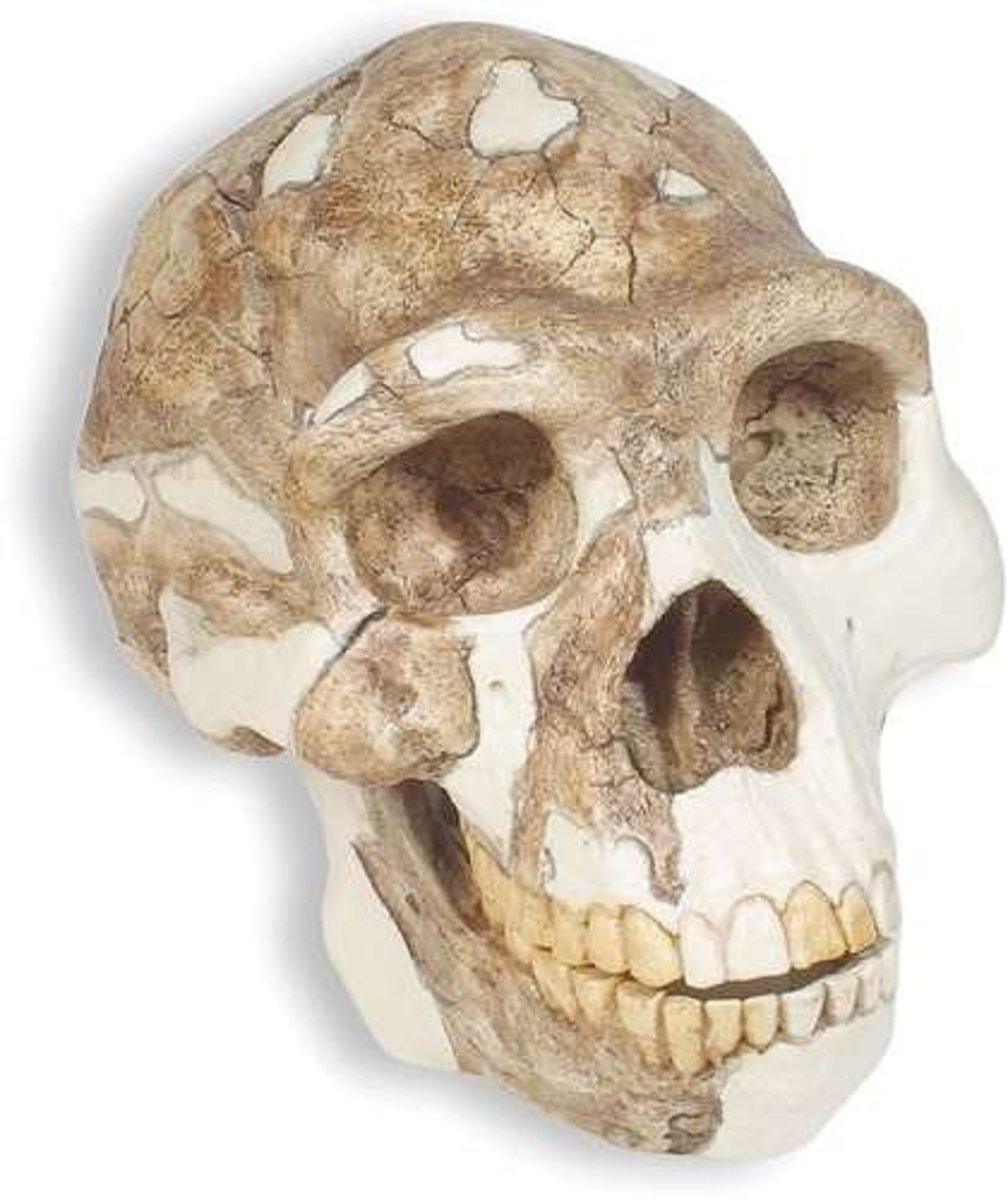
Homo Erectus (Fact 5)
Physical Characteristic(s): Species of Hominid characterized by a brain size of at least 900cc or somewhere between 840cc and 1066cc, having bigger brains than the previous hominids, allowing them to create more complex tools, being one of the reasons they survived longer than any of the previous Hominids
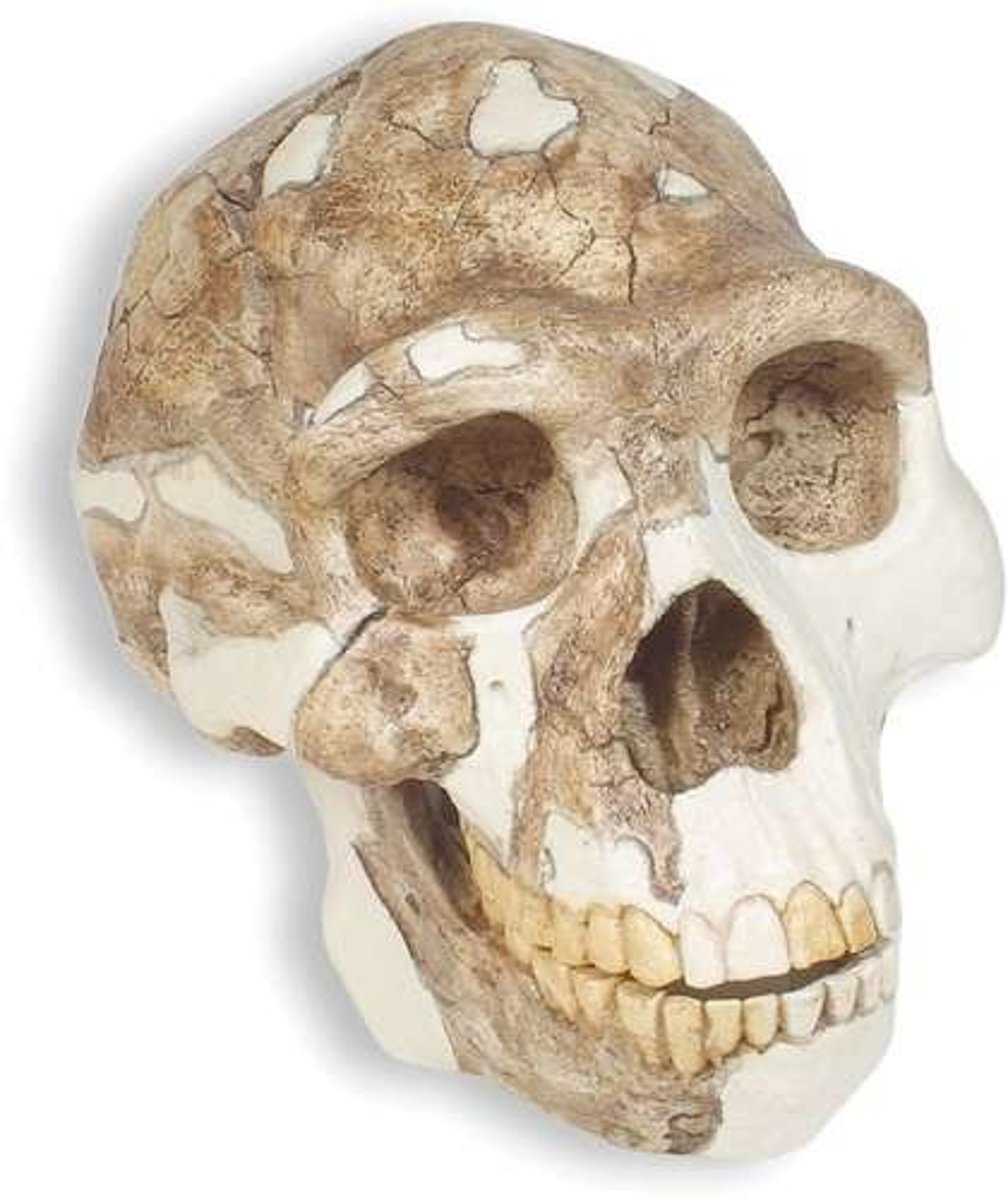
Homo Erectus (Fact 6)
Physical Characteristic(s): Species of Hominid characterized by having smaller teeth than the previous hominids, likely due to having cooked their food making it so that their teeth didn't have to do as much of the chewing and grinding and thus didn't have to grow as big as the teeth of previous Hominids
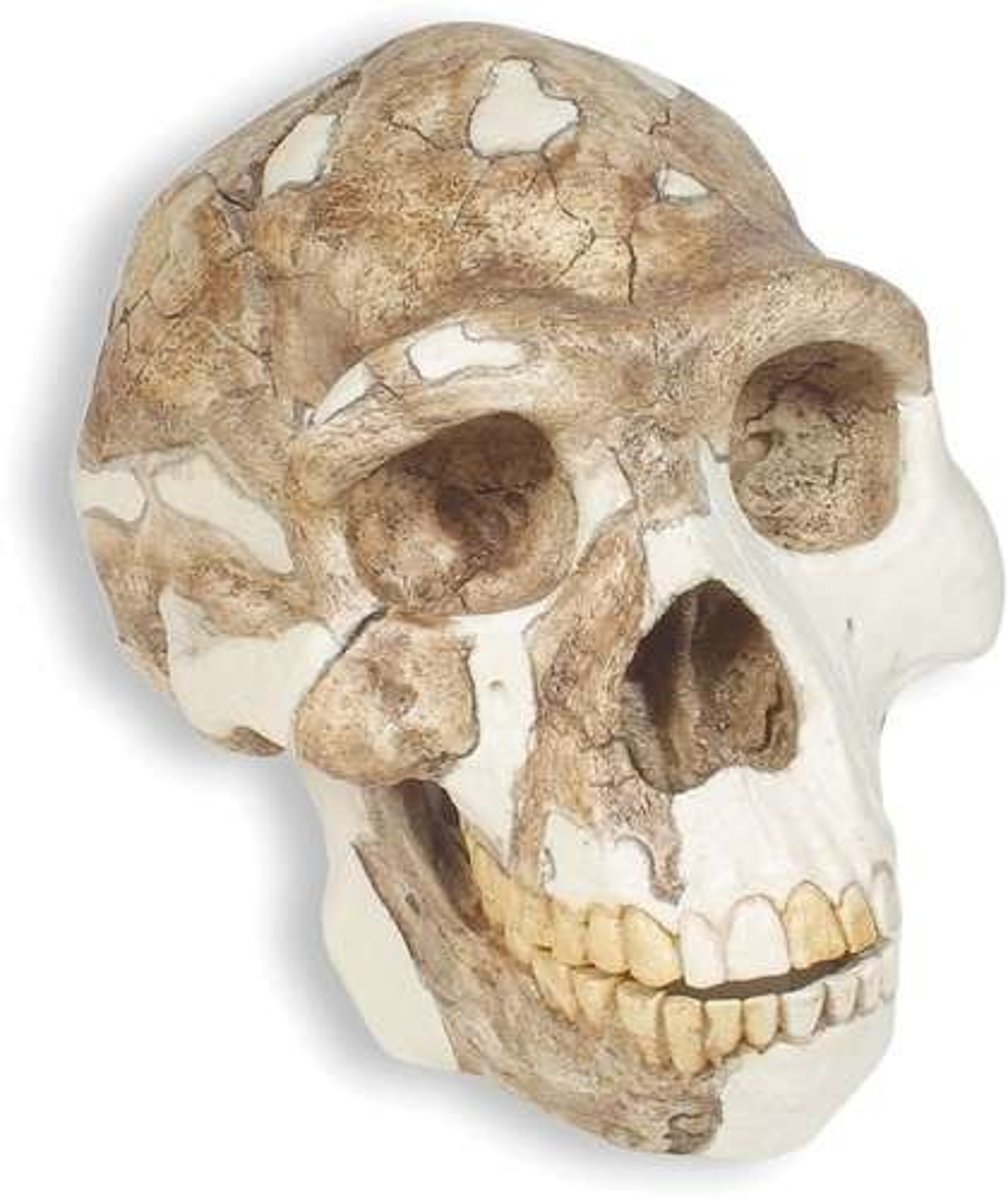
Homo Erectus (Fact 7)
Physical Characteristic(s): Species of Hominid characterized by having no more of a stoop to the shoulders and the arms being much shorter than the legs compared to previous species of Hominids
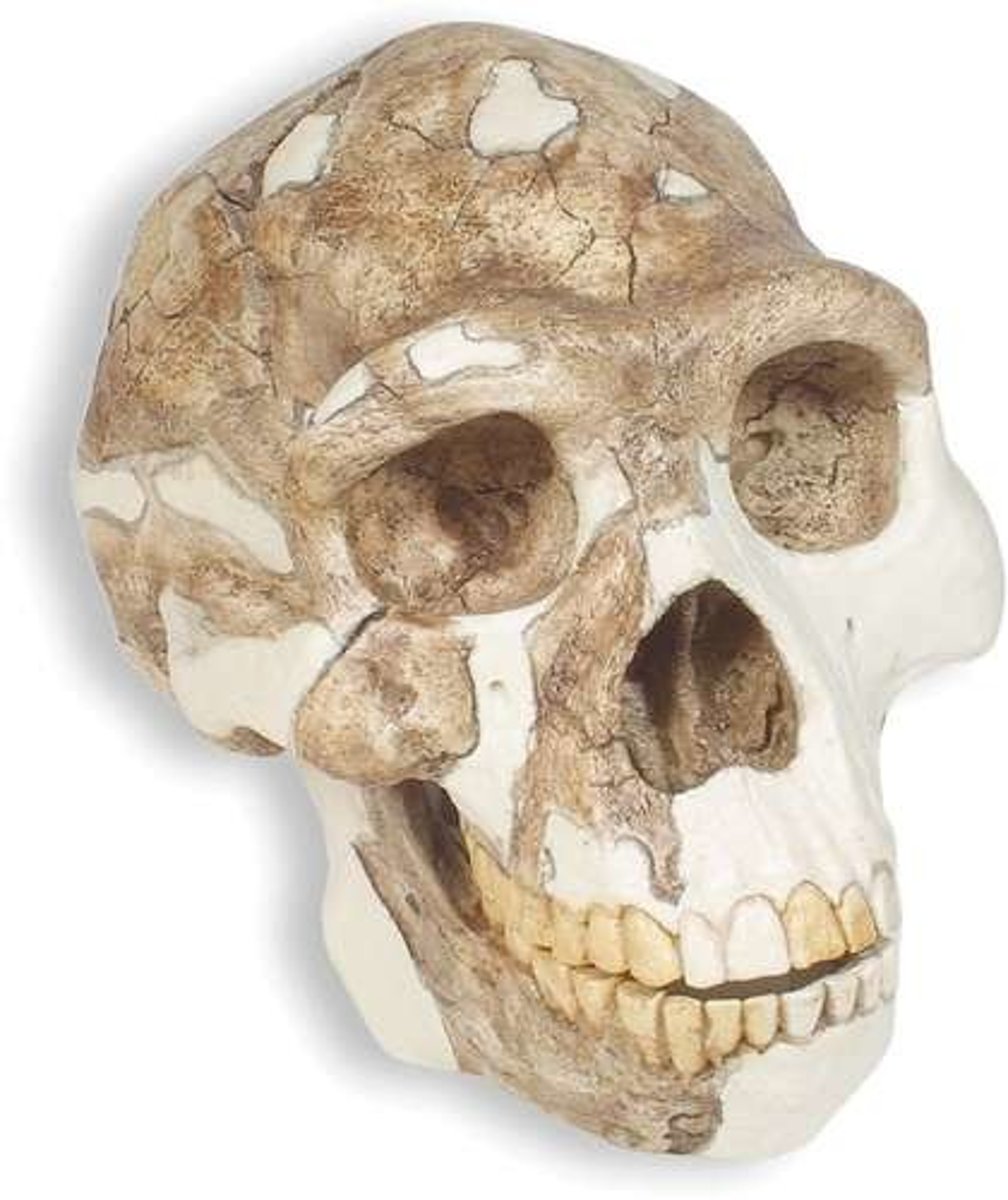
Homo Erectus (Fact 8)
Physical Characteristic(s): Species of Hominid characterized by a lengthy period of infant dependency on its parents due to conclusions made that brain growth must take place after birth since the skull of the species is so large but the female birth canal is so small, being one of the reasons they survived longer than any of the previous Hominids
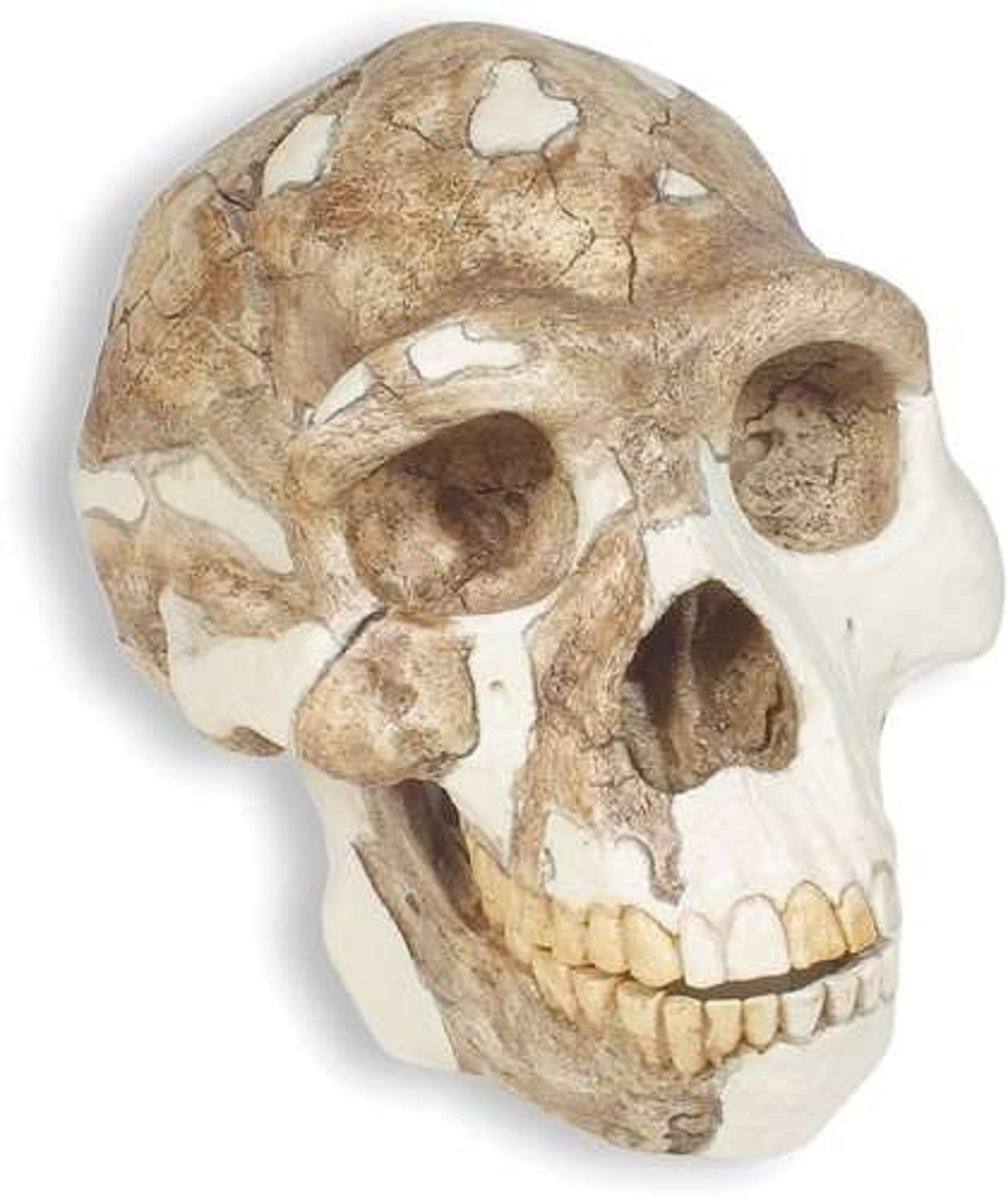
Homo Erectus (Fact 9)
Physical Characteristic(s): Species of Hominid characterized by some sexual dimorphism since there are some parts that remain the same such as the Sacrum of both the males and females being the same width
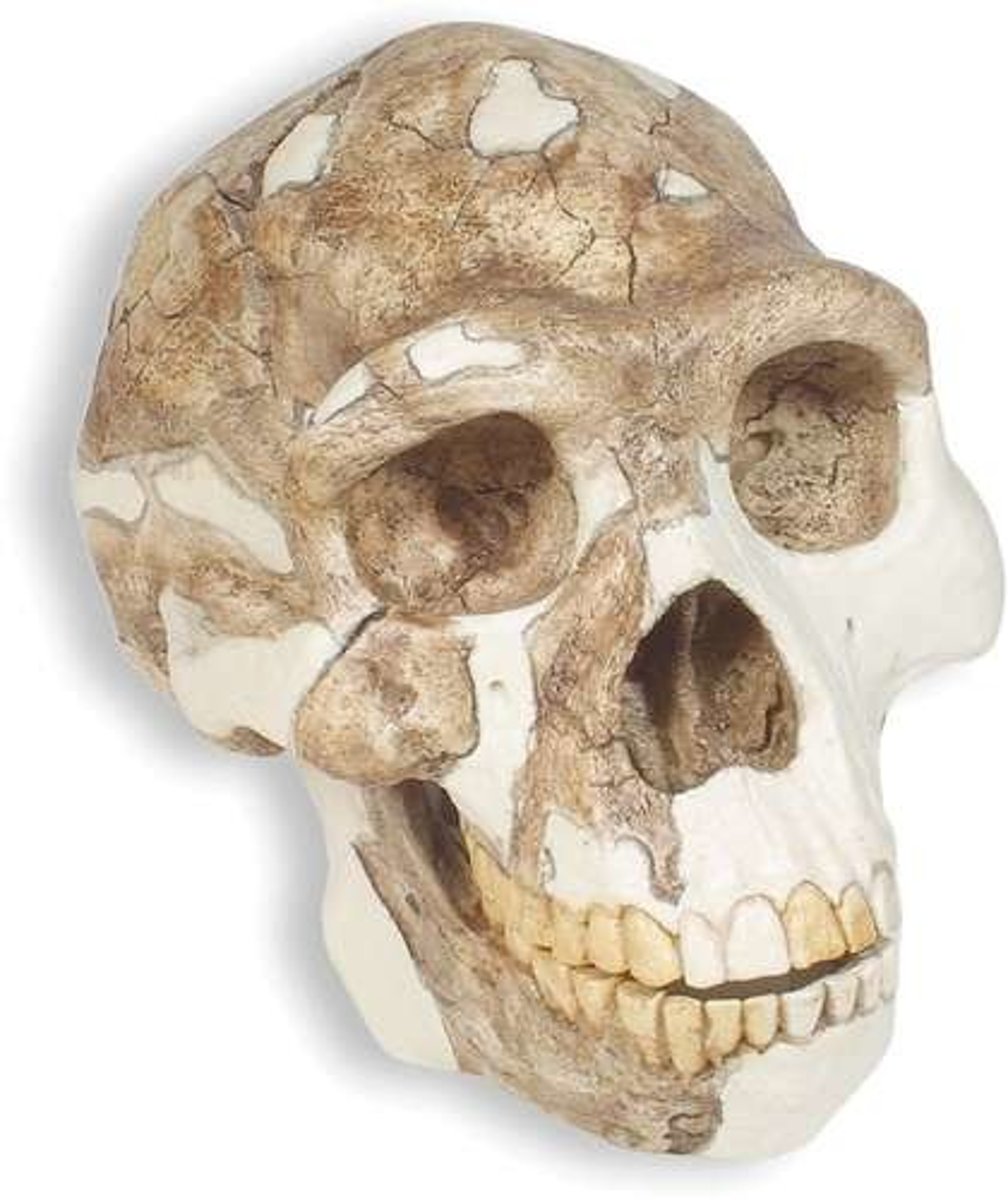
Homo Erectus (Fact 10)
Physical Characteristic(s): Species of Hominid characterized by a diet of vegetables like hackberries as well as meat, having eaten more meat than any of the previous Hominids, being one of the reasons they survived longer than any of the previous Hominids
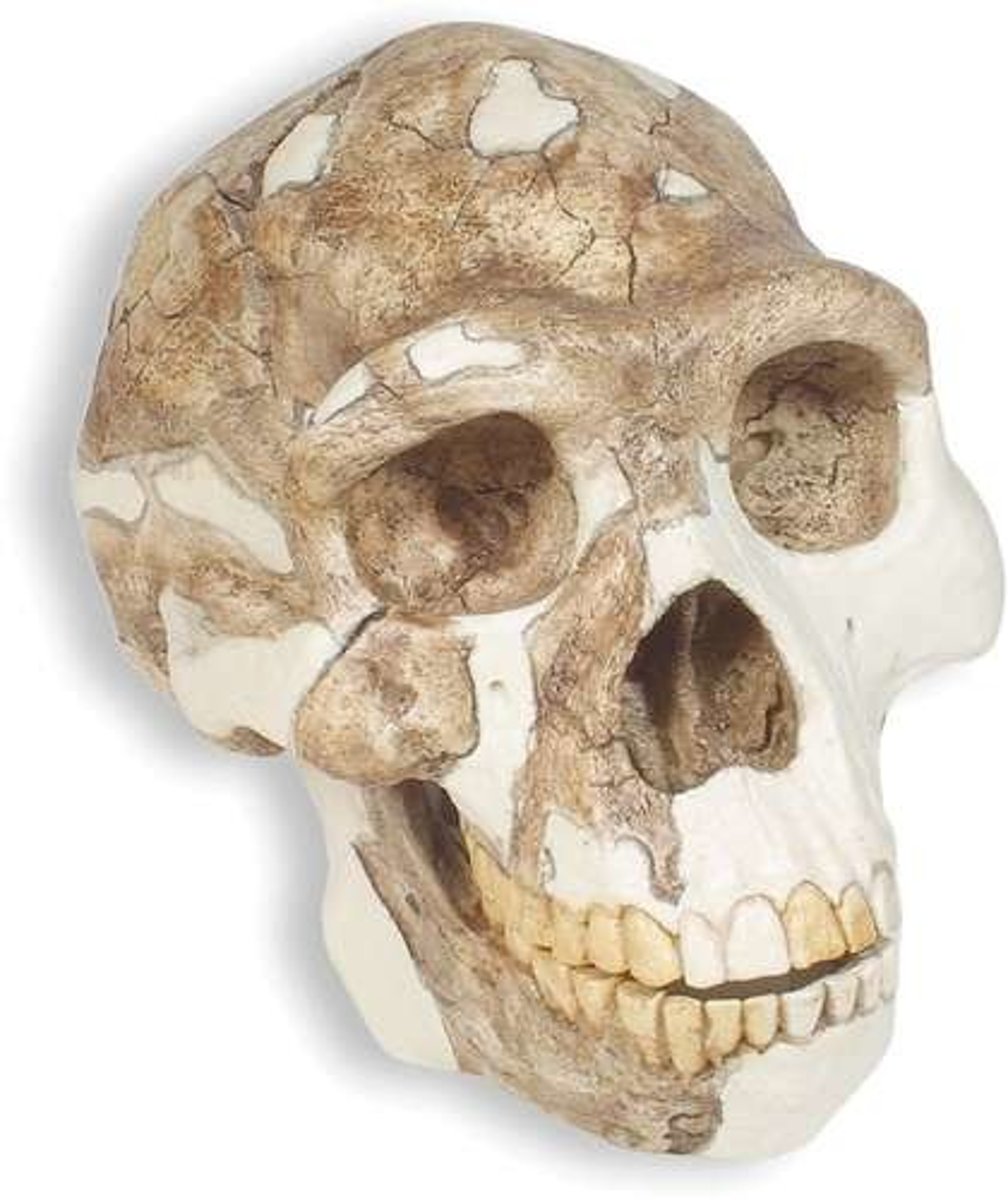
Homo Erectus (Fact 11)
Innovations: Species of Hominid characterized by (most likely) being the first Hominid to discover fire, likely having taken advantage of natural brush and forest fires started by lightning strikes or by scavenging for already-burning twigs from wildfires and using it to start their own fires, which they used to cook food and keep warm (while confronting the harsh winters in China and thereon, this being one of, if not the most important of the reasons they survived longer than any of the previous Hominids)

Homo Erectus (Fact 12)
Innovations: Species of Hominid characterized by (most likely) being the first Hominid to discover fire due to some evidence via the fossil record showing that they consumed more calories and cooked their food to develop bigger brains, bigger bodies, and smaller teeth than that of previous Hominids and that they migrated to many different environments living in many different places around the world from the Republic of Georgia to Southeast Asia
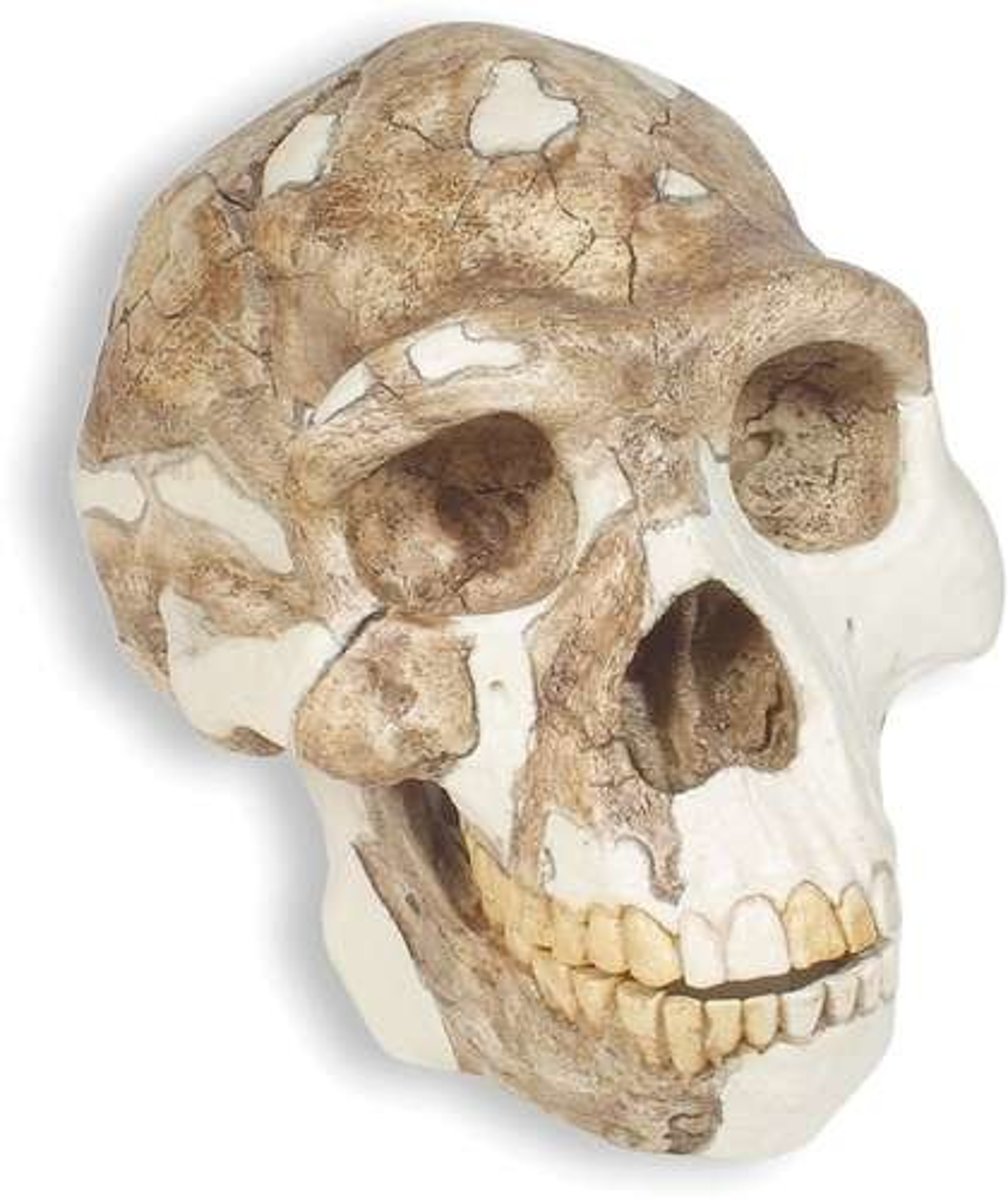
Homo Erectus (Fact 13)
Innovations: Species of Hominid characterized by (most likely) being the first Hominid to build shelters to survive and go on sea voyages to get across the boundaries of water that set them apart from their more expansive whereabouts than any of the previous Hominids into Asia, Oceania, and Europe, (most likely) being one of the reasons they survived longer than any of the previous Hominids
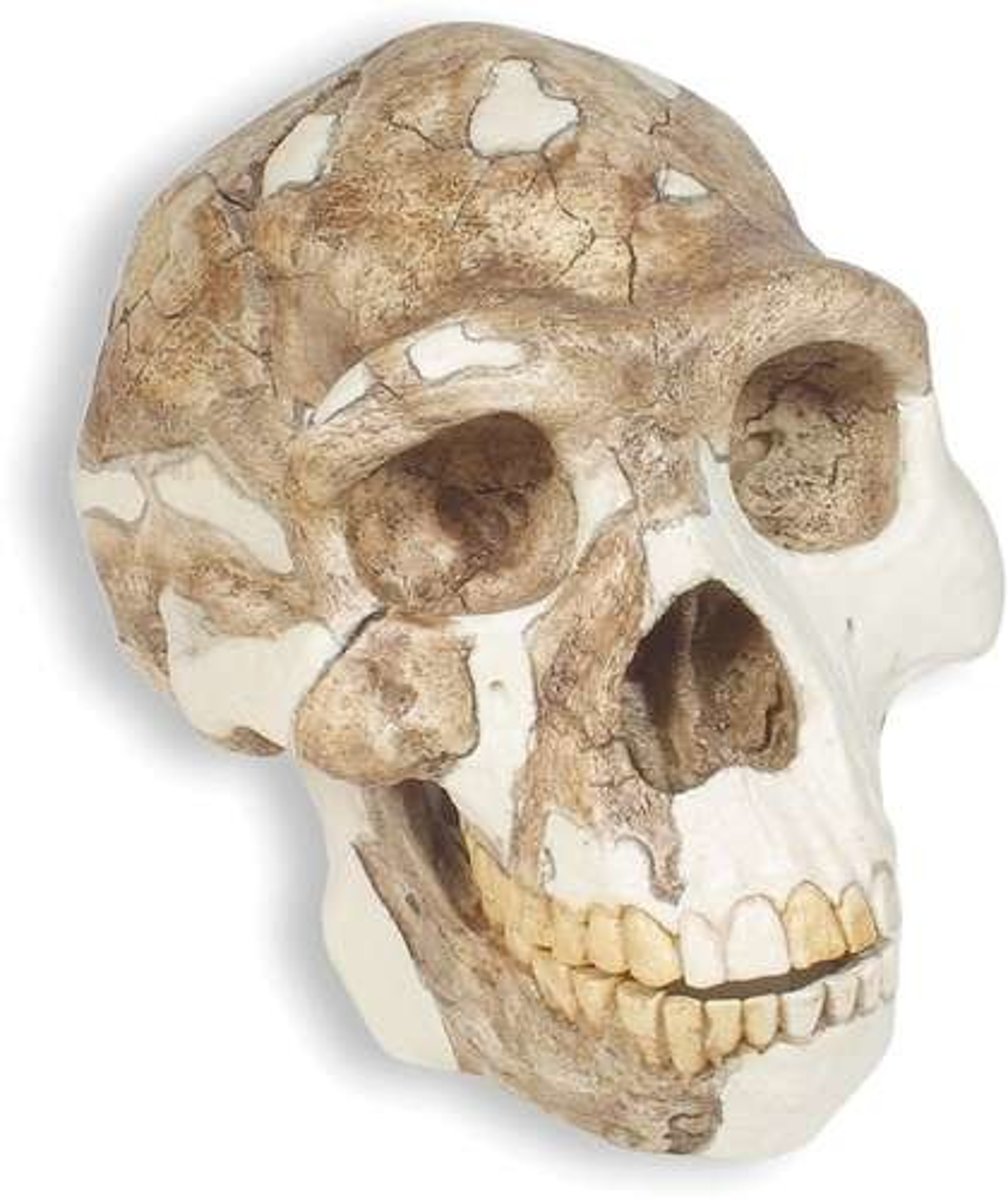
Homo Erectus (Fact 14)
Tools and Toolmaking: Species of Hominid characterized by being (most likely) associated with the Oldowan Tools/Tool Set/Lithic Industry in order to learn, develop into, and eventually make the Acheulean Tools/Tool Set/Lithic Industry, the first of which features tools that are multi-purpose, are more sharp, refined, precise, and accurate; can be used to sharpen bamboo and can be used for hunting, and are bifacial
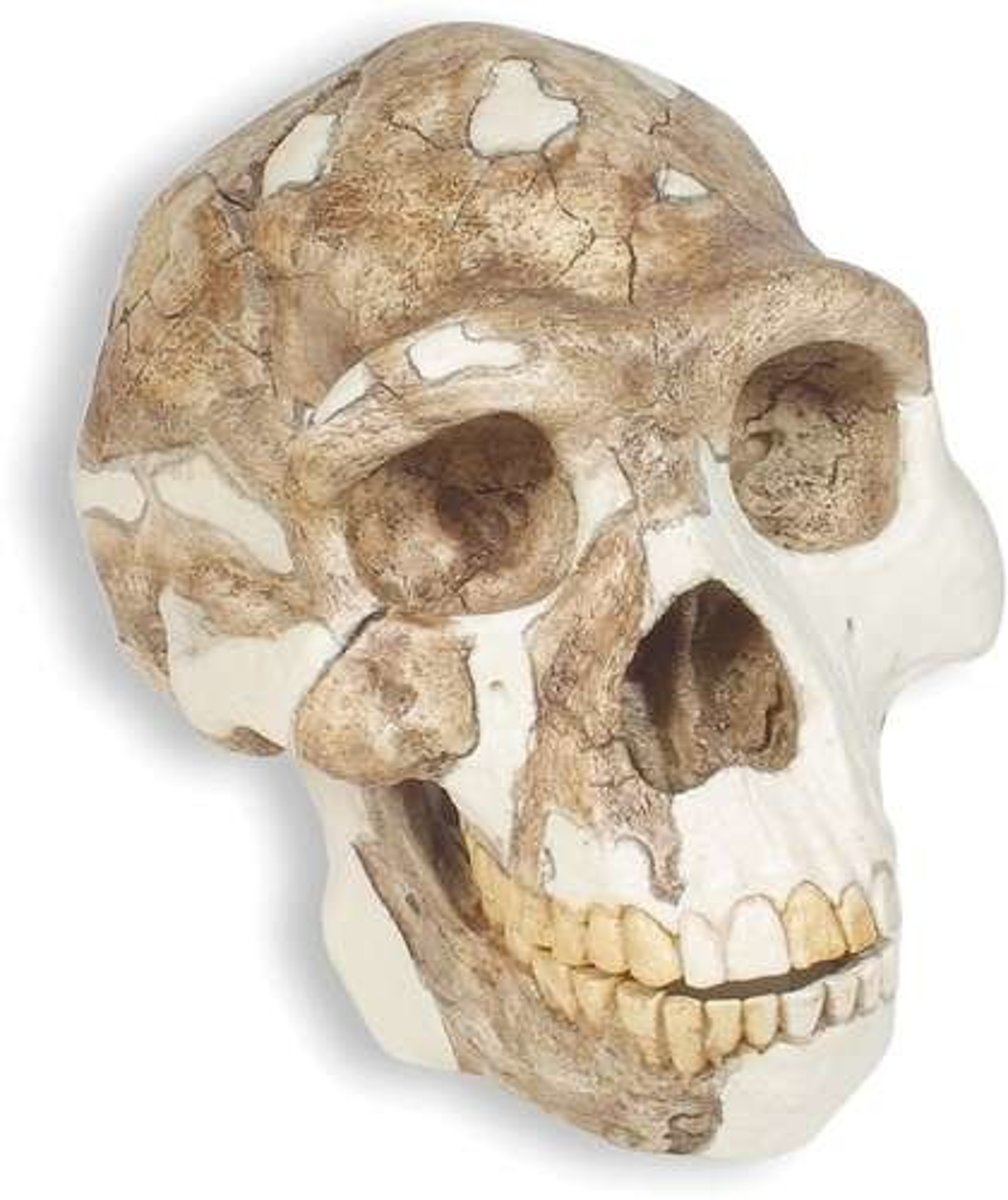
Homo Erectus (Fact 15)
Tools and Toolmaking: Species of Hominid characterized by being (most likely) associated with the Oldowan Tools/Tool Set/Lithic Industry which includes the invention/innovation of the (gradually developed
"Teardrop") Hand Axe, Cleaver, Pick, and Scraper
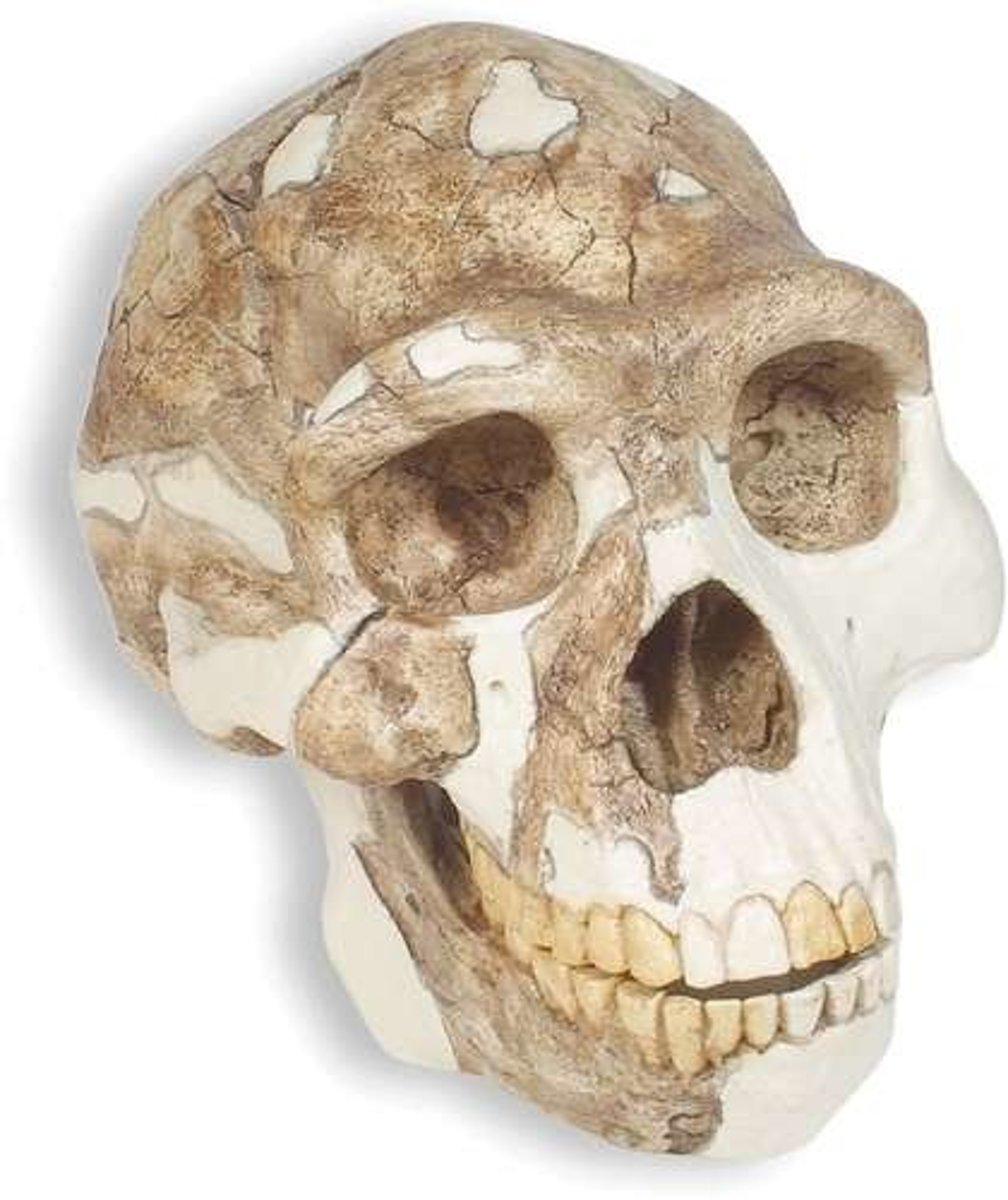
Homo Erectus (Fact 16)
Species of Hominid characterized by the first Hominid to hunt elephants, hippopotamuses, and other large game in areas rich in animal species, butchering the remains of animal kills or attacking prey trapped in marshland and all with the help of stone butchery tools and being the first to hunt overall and the first to develop the hunting-gathering lifestyle, which lasted up until the Mesolithic

Homo Erectus (Fact 17)
Species of Hominid characterized by living in small groups between 20 and 40 members
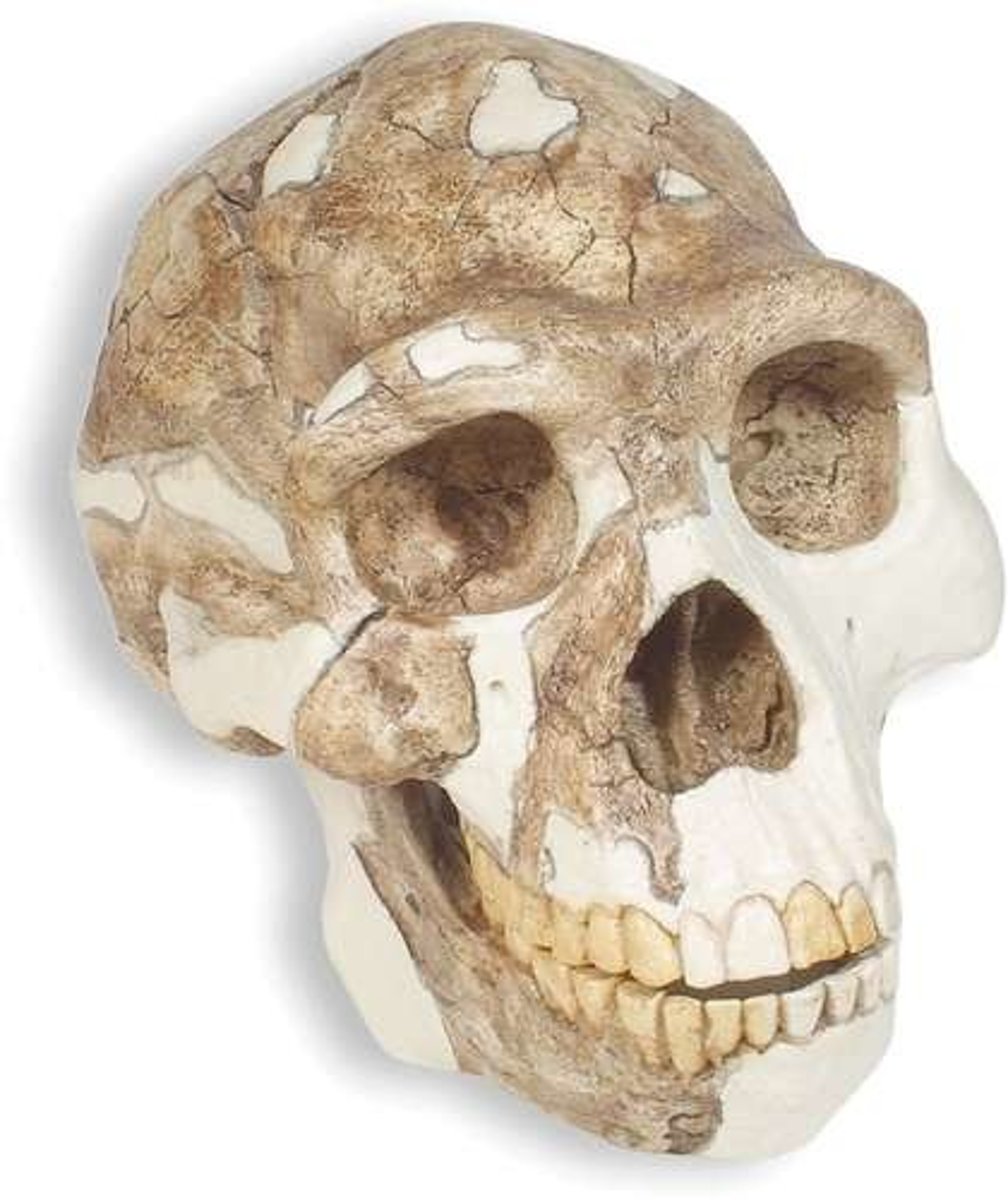
Homo Erectus (Fact 18)
Species of Hominid characterized by having left Africa and arrived in Europe before any of the other previously known species of hominid which they may have accomplished in one of three ways, one of which is by traveling there via Southwest Asia
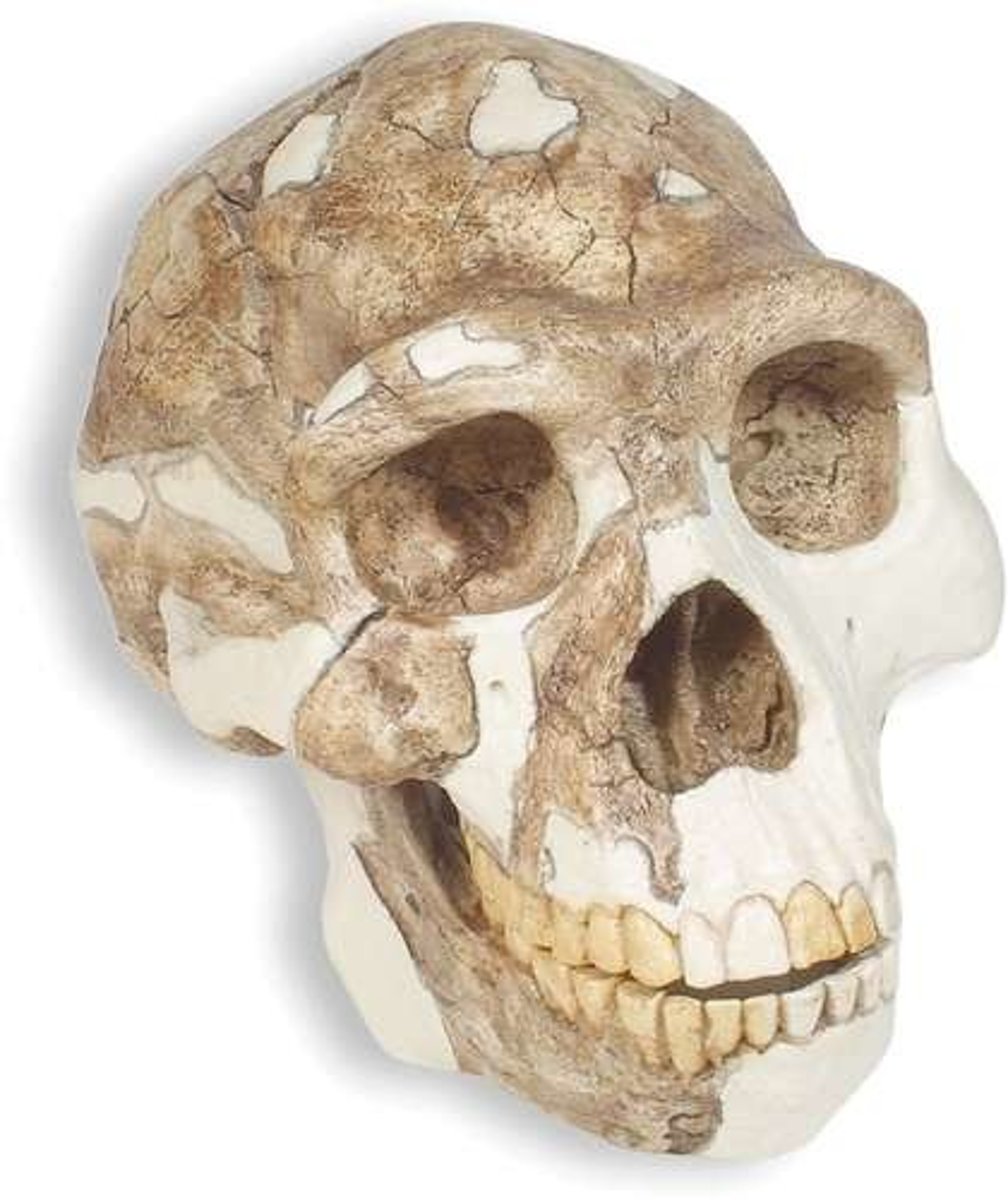
Homo Erectus (Fact 19)
Species of Hominid characterized by having left Africa and arrived in Europe before any of the other previously known species of hominid which they may have accomplished in one of three ways, one of which is by traveling there from Northwest Africa via the narrow Straits of Gibraltar, which is the most likely of the three explanations because of the evidence that they settled in Northwest African places like Ternifine, Algeria
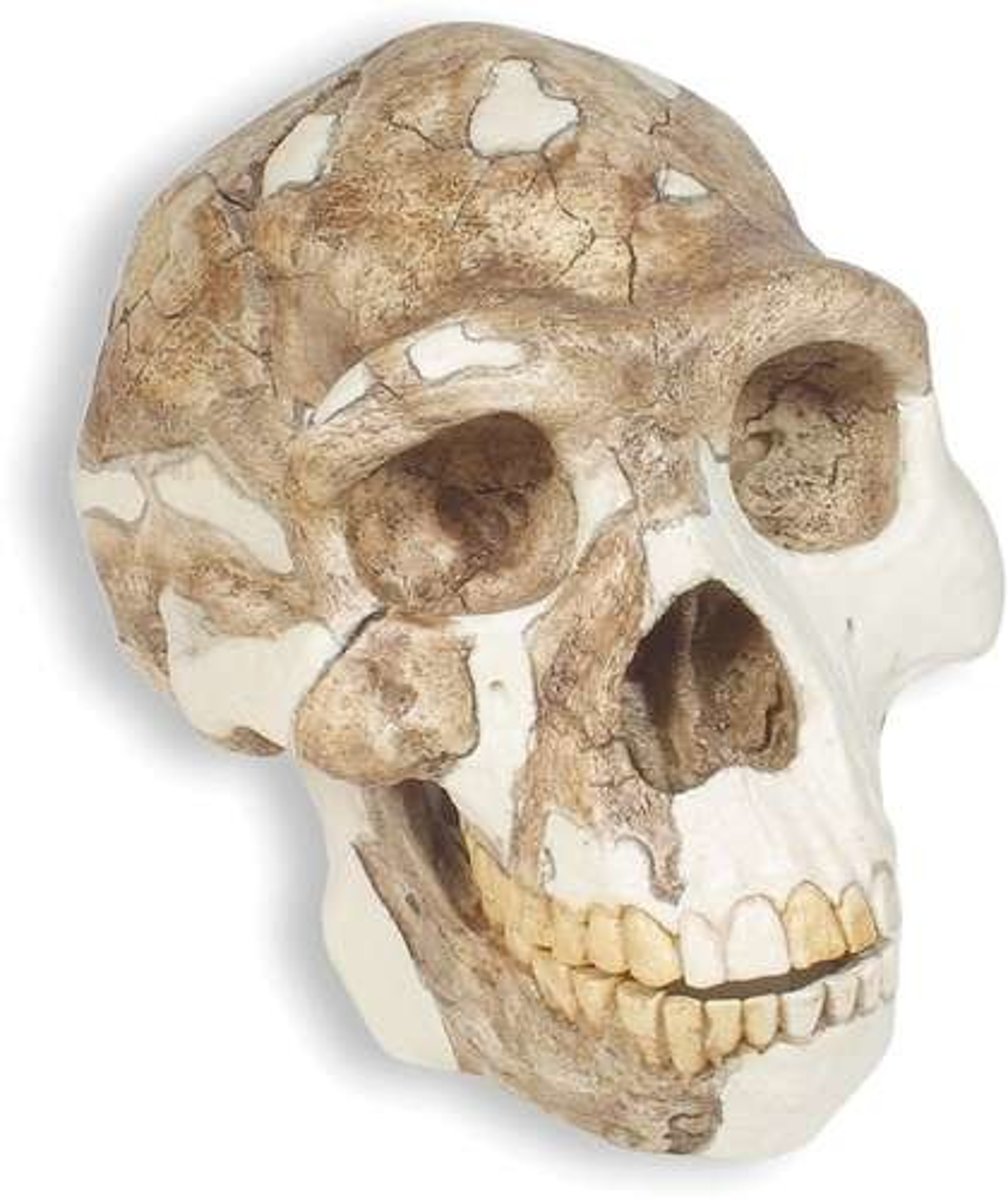
Homo Erectus (Fact 20)
Species of Hominid characterized by having left Africa and arrived in Europe before any of the other previously known species of hominid which they may have accomplished in one of three ways, one of which is by taking a route from Libya to Sicily when sea levels were lower and a land bridge existed there
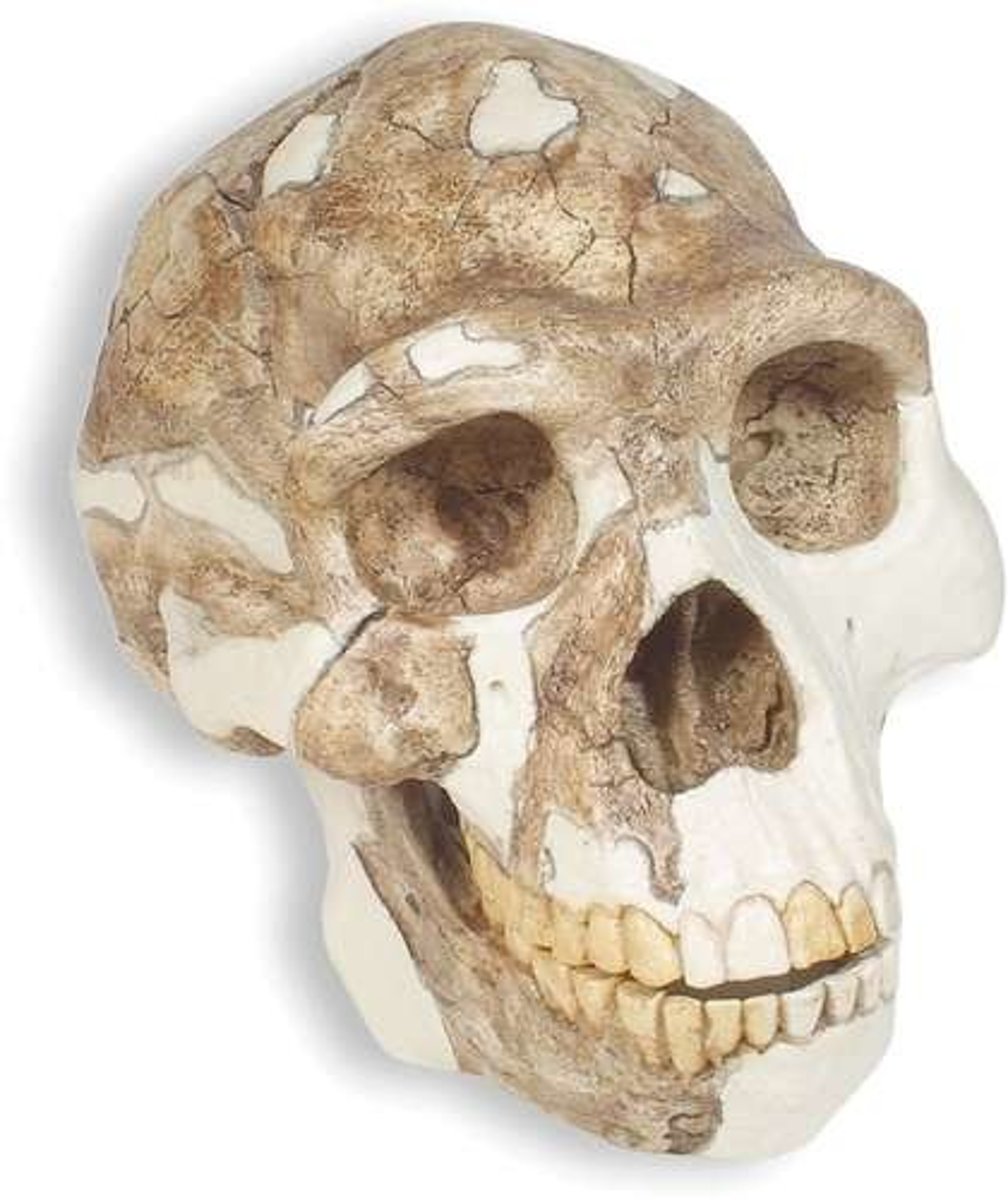
Homo Erectus (Fact 21)
Species of Hominid characterized by having left Africa and arrived in Europe before any of the other previously known species of hominid in which they took with them the capacity to make handaxes, and equipped themselves with choppers and chopping tools, perhaps because the local stone is not suitable for flaking handaxes
Homo Erectus (Fact 22)
Species of Hominid characterized by having left Africa and arrived in Europe before any of the other previously known species of hominid in which they took with them handaxes and choppers, which they used to produce much sharper multi-purpose implements, which were more akin to cleavers and which they may use to sharpen bamboo for spears for hunting
Homo Erectus (Fact 23)
Found in the Serengeti Plain in Tanzania, Africa along with Homo Habilis
Homo Erectus (Fact 24)
Hunted elephants and other large game, and butchered the remains of animal “kills” or attack prey trapped in marshland
Homo Erectus (Fact 25)
Its nickname derives from the fact that it has changes in the body structure from the previous hominids since there is no stoop to the shoulders and the arms are much shorter, relative to the legs, than those of earlier hominids
Homo Ergaster (Fact 1)
Time: Species of Hominid that lived around 1.75-1.65 Million years BCE, (most likely) the direct descendant of Homo Habilis
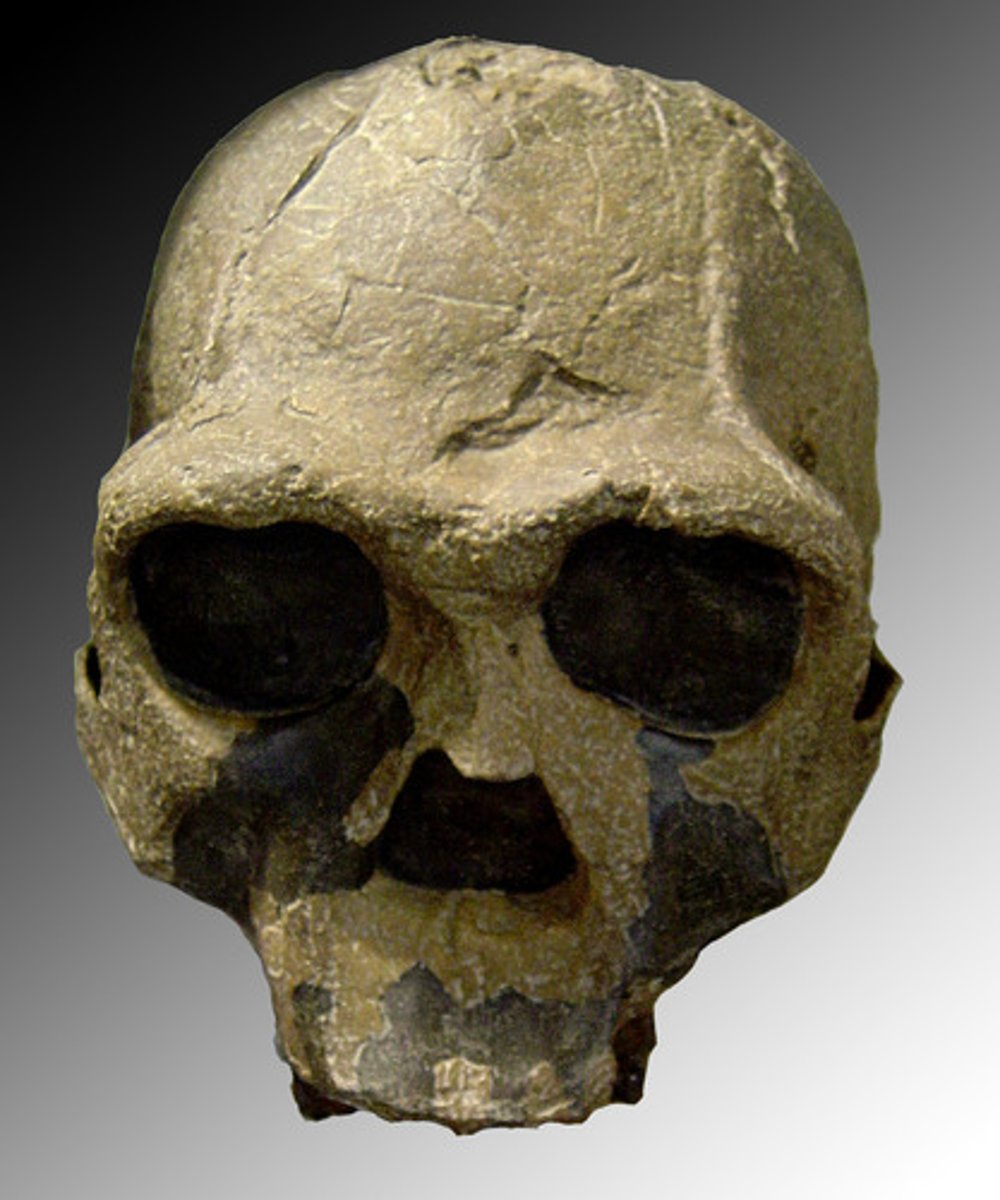
Homo Ergaster (Fact 2)
Place: Species of Hominid found in recent years but having lived at one time in Armenia and Georgia
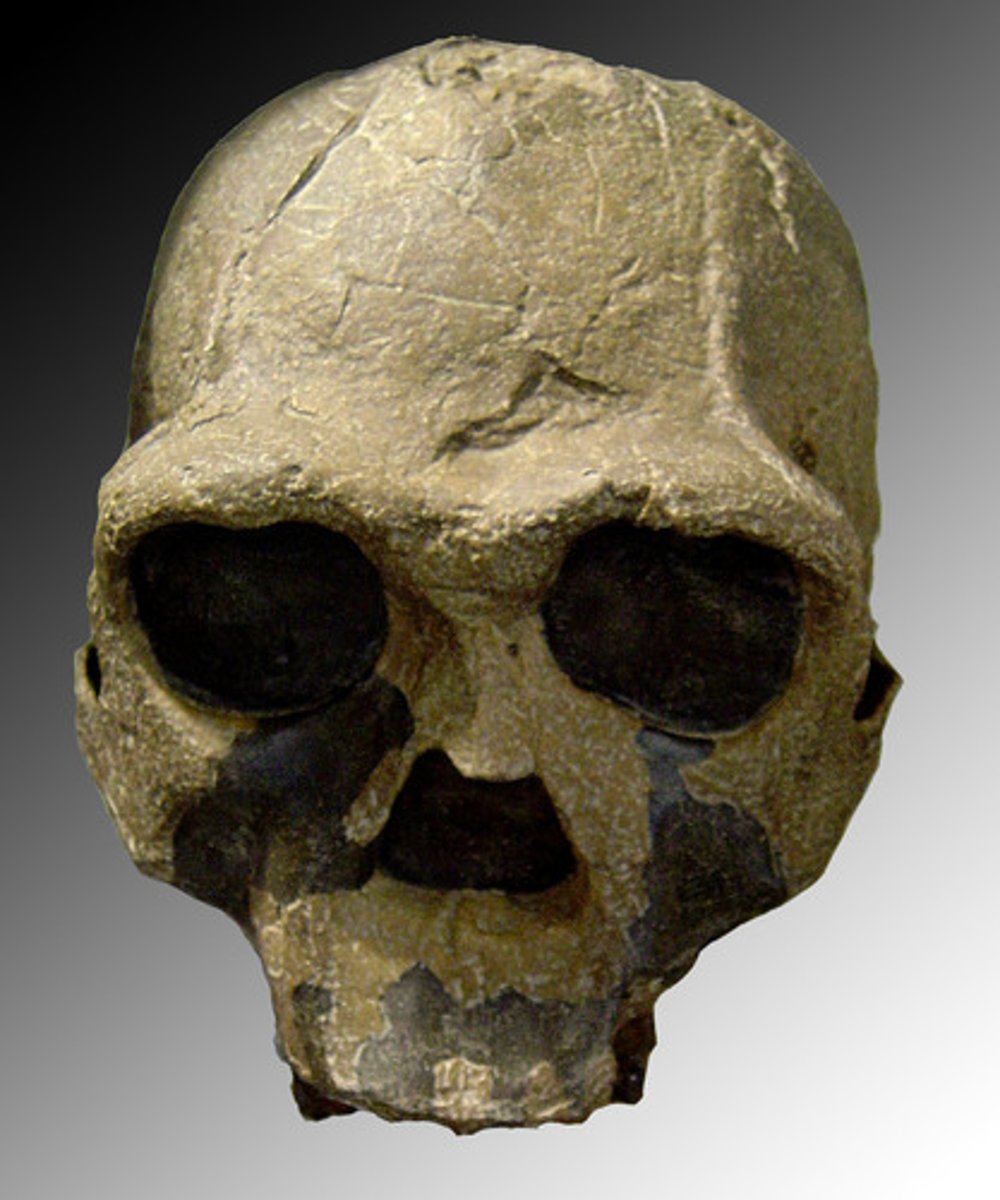
Homo Ergaster (Fact 3)
Physical Characteristic(s): Species of Hominid characterized by (most likely) being the first mostly hairless Hominids
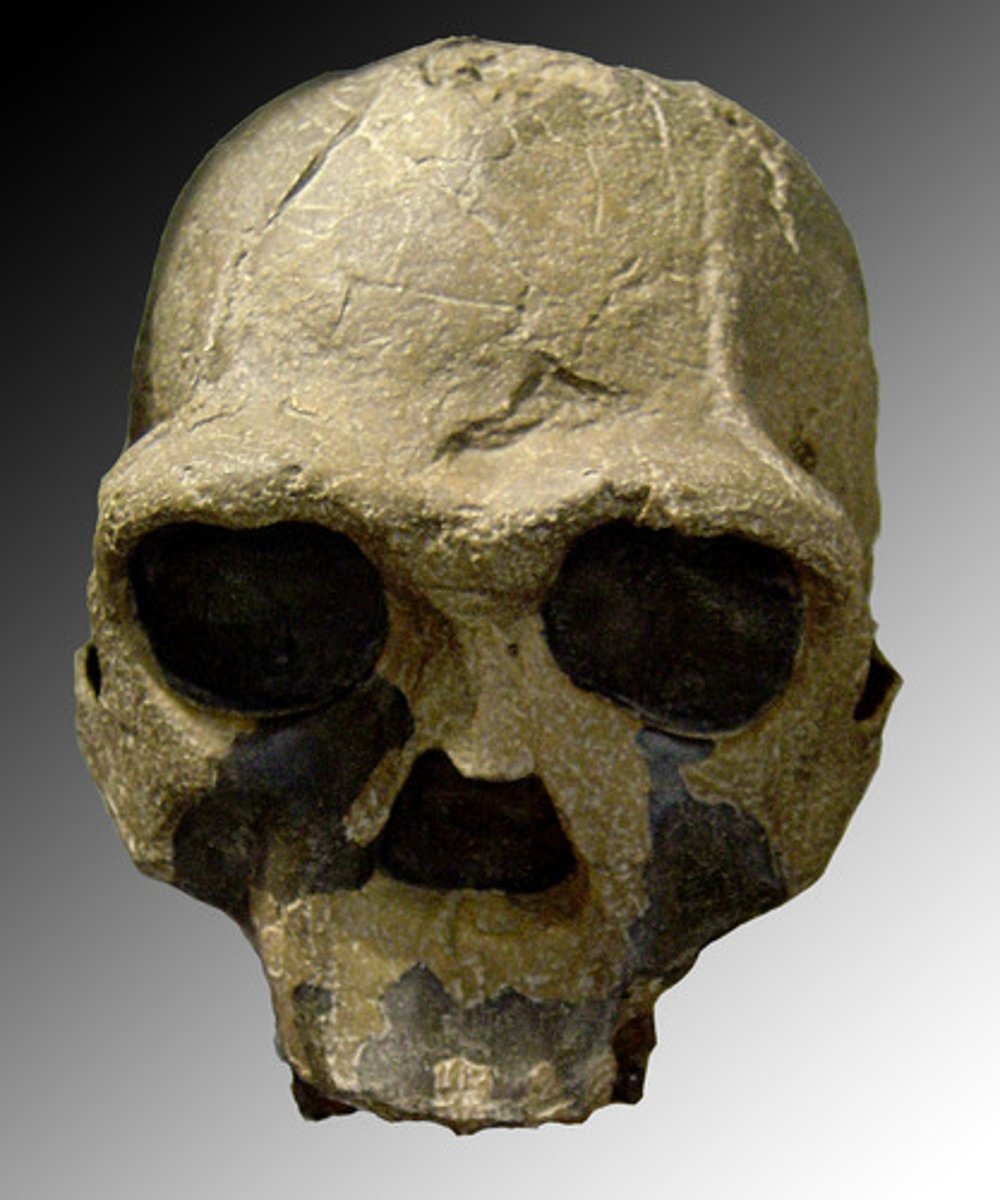
Homo Ergaster (Fact 4)
Physical Characteristic(s): Species of Hominid characterized by having smaller jaws, sharper teeth, and were smaller and skinnier than any previous species of Hominid
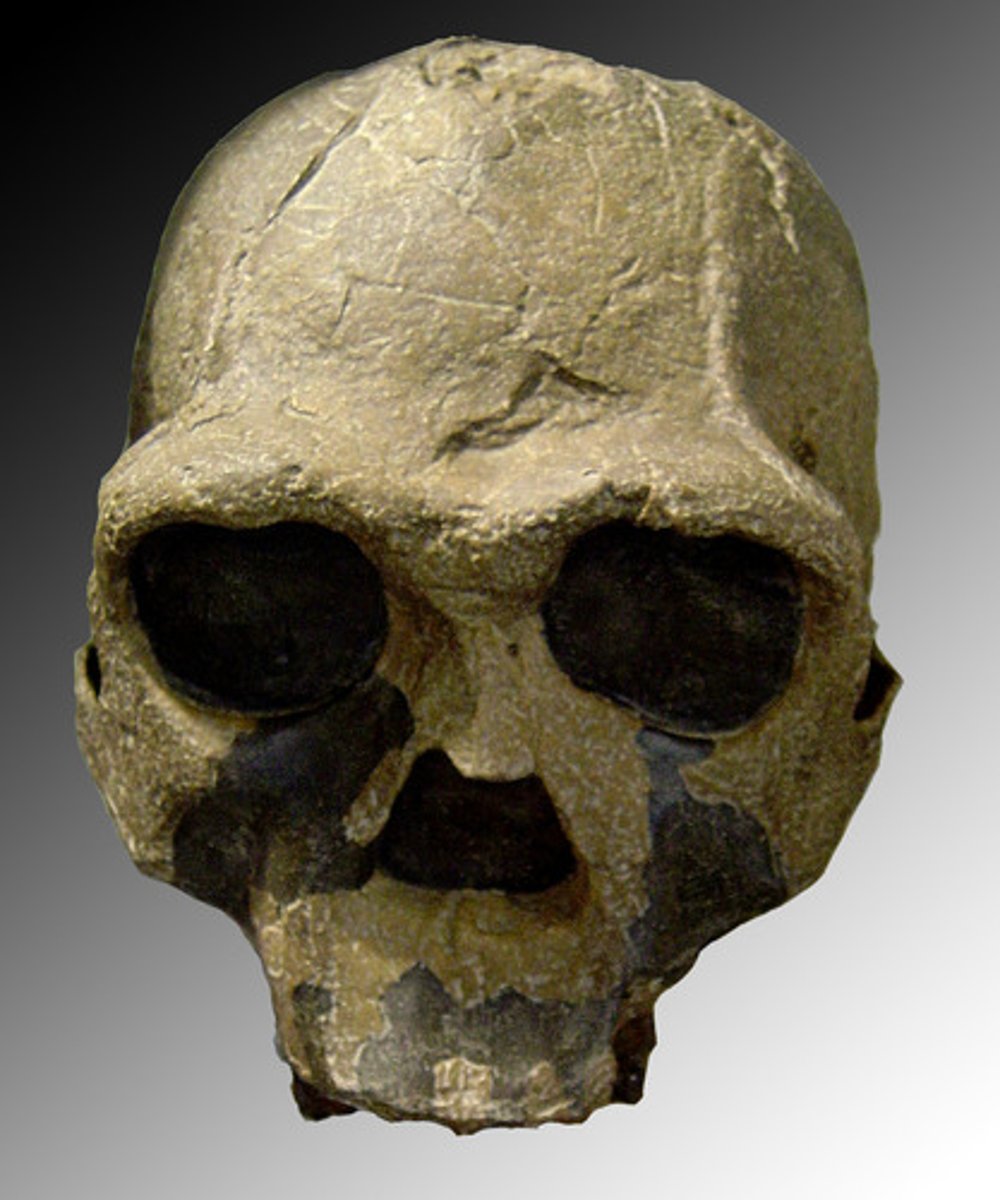
Homo Ergaster (Fact 5)
Physical Characteristic(s): Species of Hominid characterized by having extremely narrow hips making the unassisted delivery of a baby extremely difficult despite babies genetically inheriting traits passed on from their offspring that were making their heads bigger, so babies heads were getting bigger while female pelvises were getting smaller
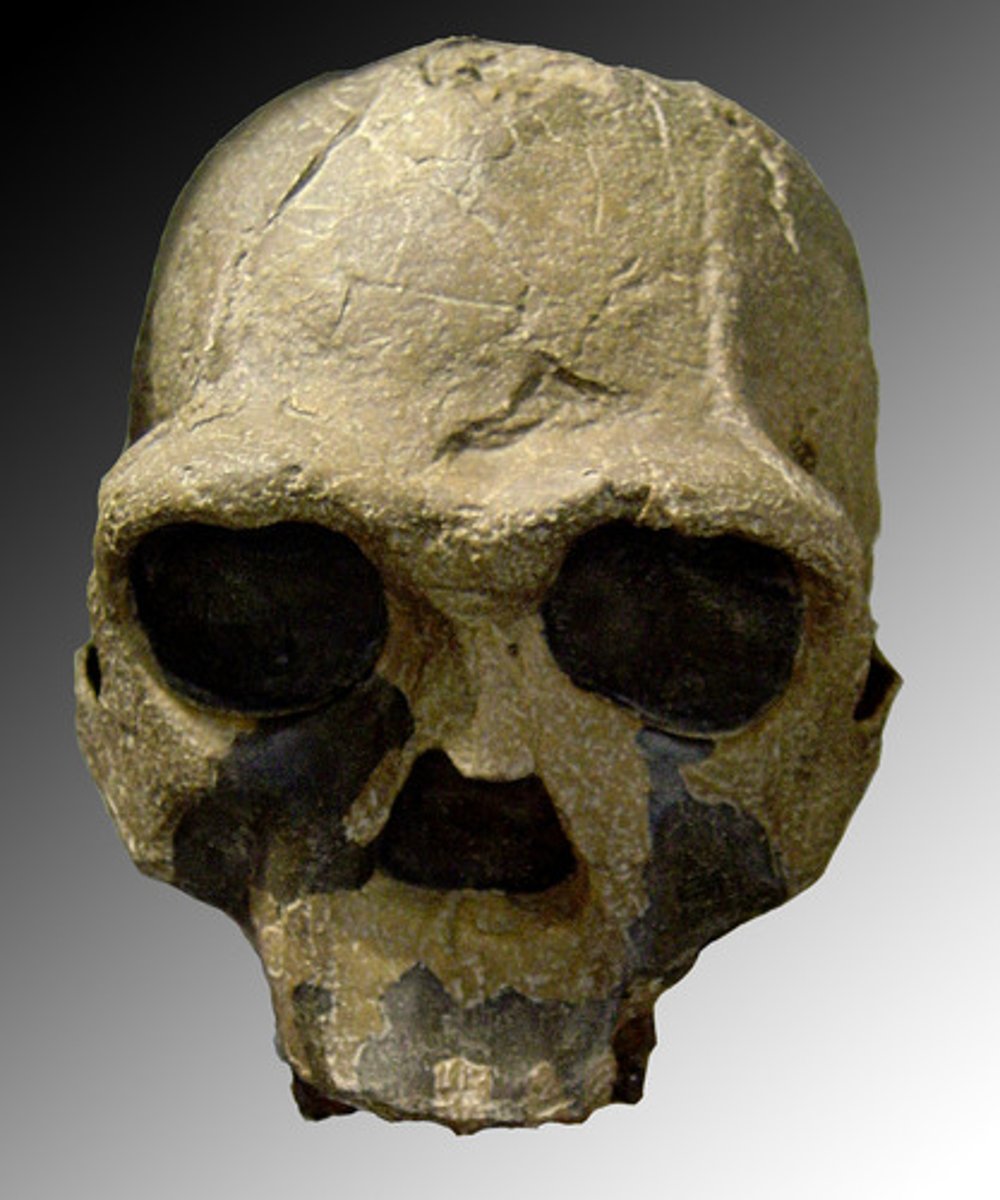
Homo Ergaster (Fact 6)
Physical Characteristic(s): Species of Hominid characterized by having extremely narrow hips so babies were born before their brains were fully developed otherwise they would be too large to pass through the birth canal thus after birth babies were less developed thus requiring more care than ever and for a longer time
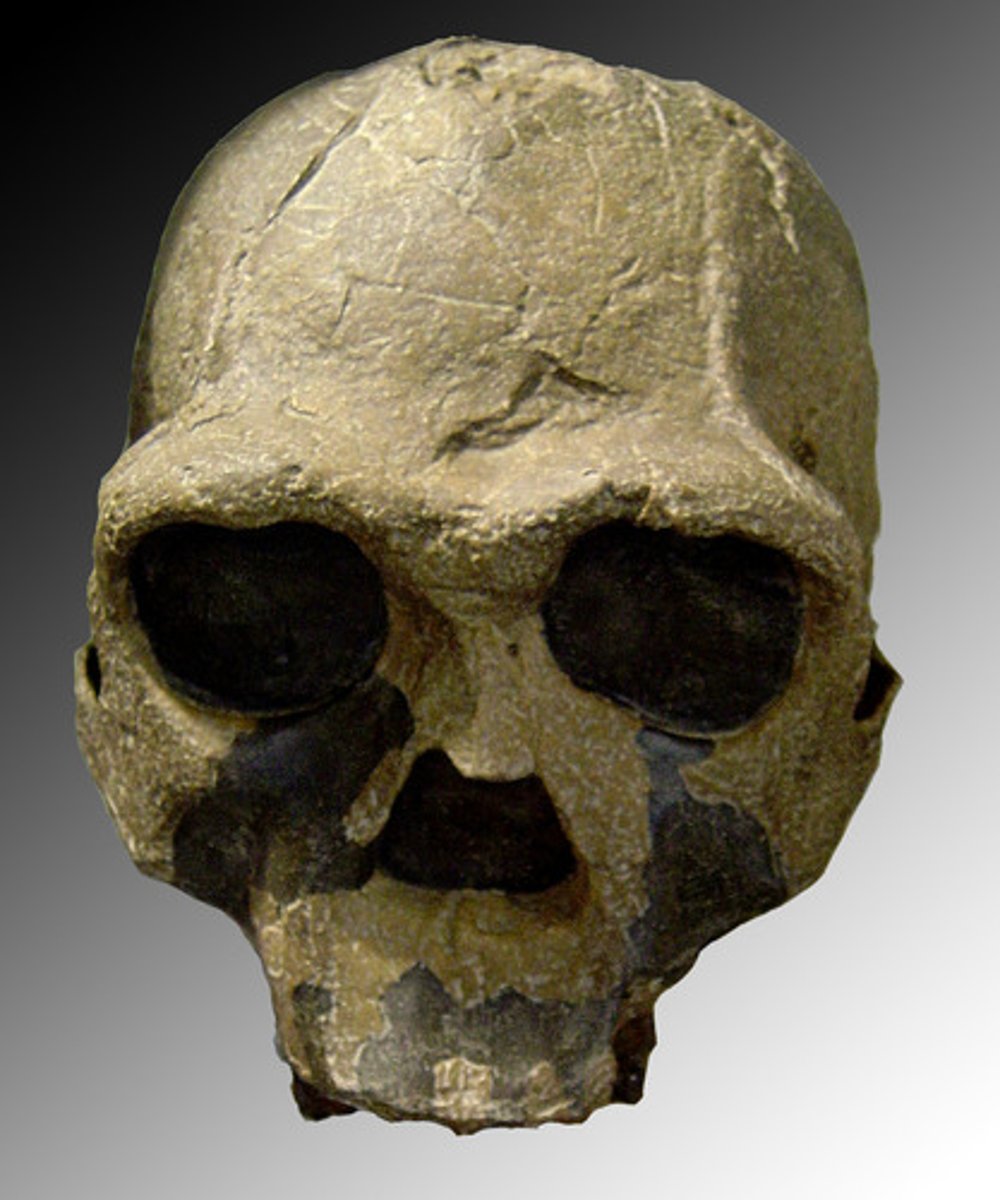
Homo Ergaster (Fact 7)
Innovations: Species of Hominid characterized by having (most likely) hunted in groups due to having achieved Complex Social Behavior
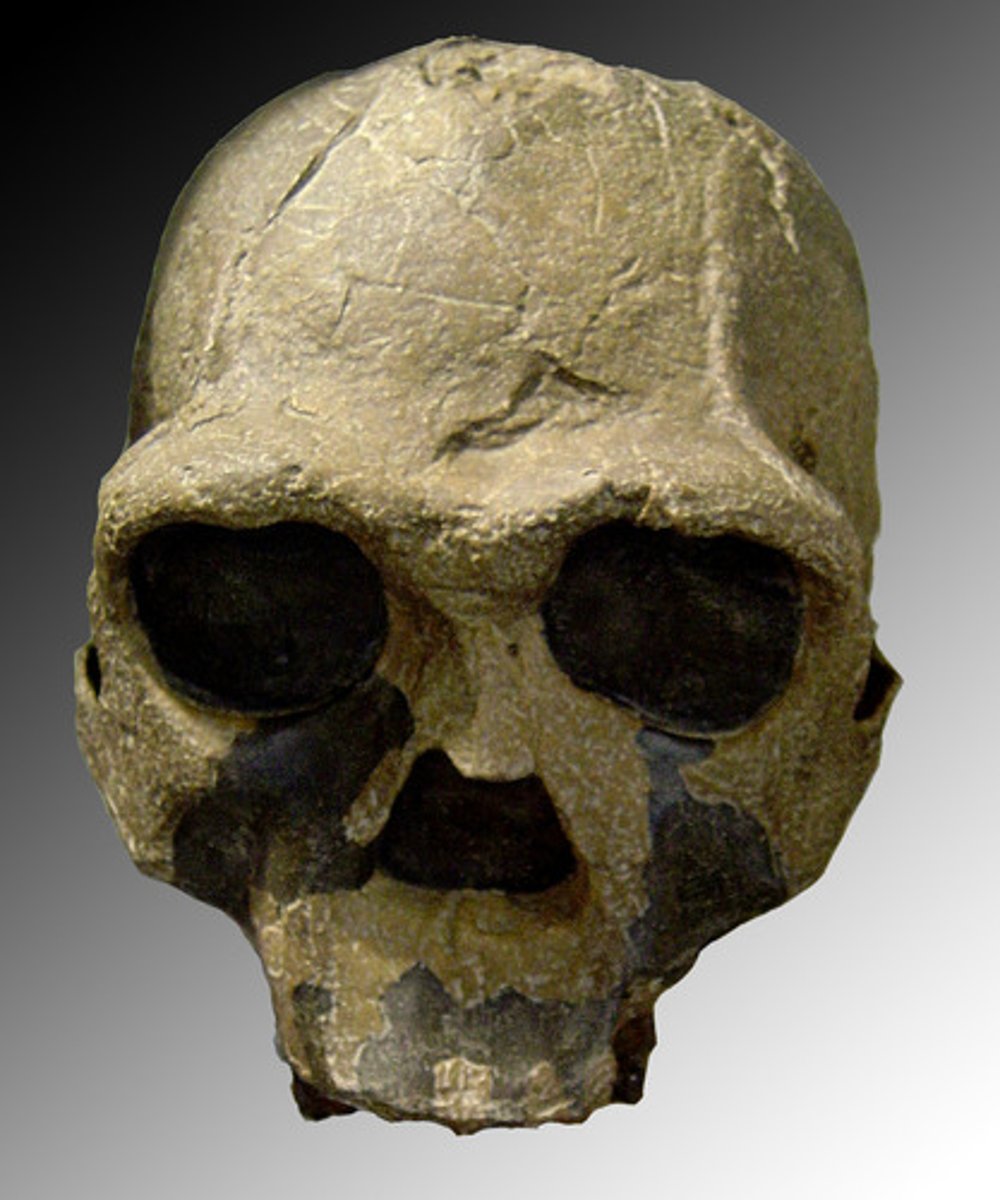
Homo Ergaster (Fact 8)
Species of Hominid characterized by (most likely) being the first Hominid species to want to leave Africa and go elsewhere, possibly due to the desire to find better hunting grounds
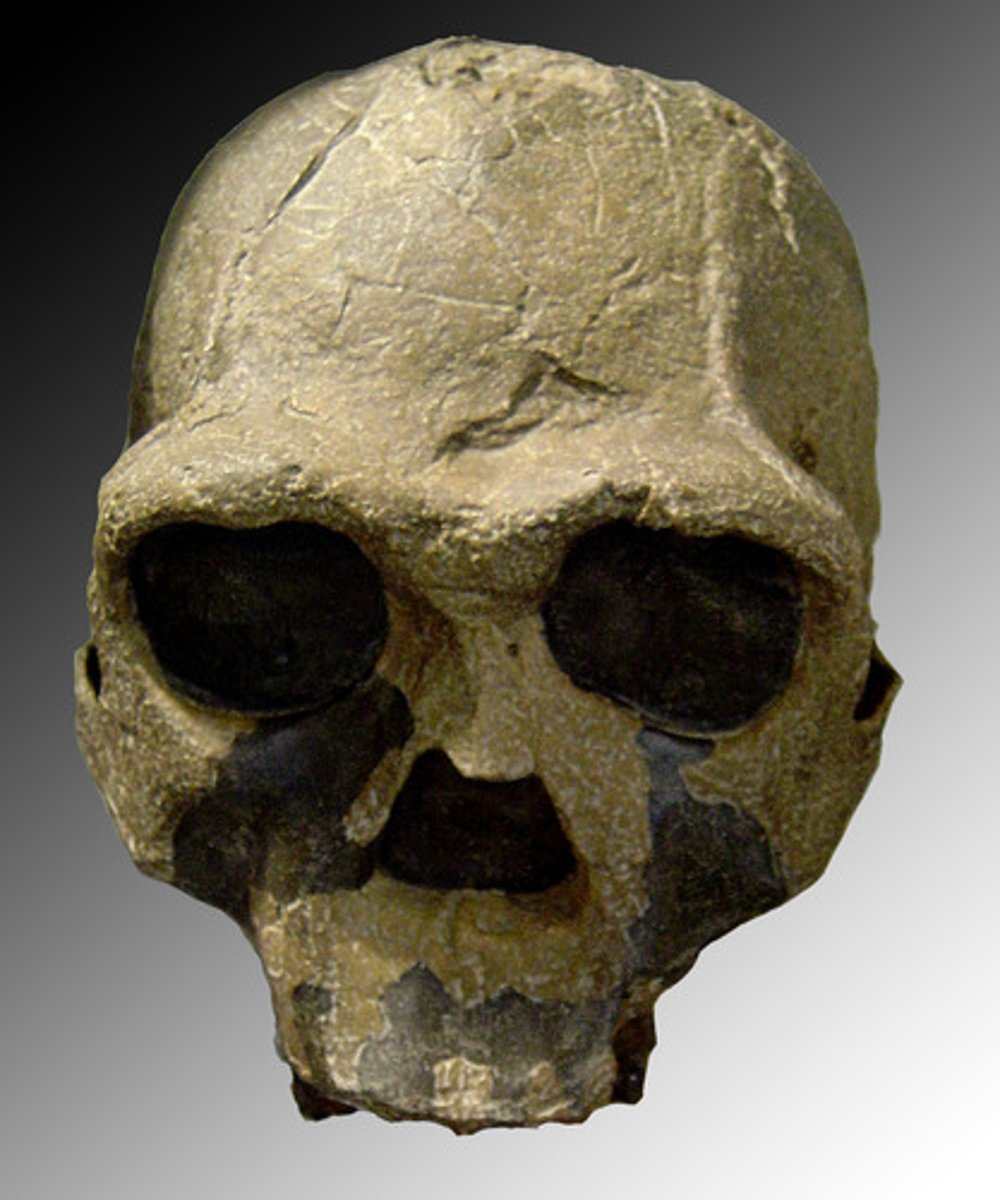
Homo Heidelbergensis (Fact 1)
Time: Species of Hominid that lived between 600,000 years BCE and 400,000 years BCE, (most likely) the direct descendant of Homo Ergaster and (most likely) the direct ancestor of Homo Sapiens Sapiens and Homo Sapien Neanderthalensis
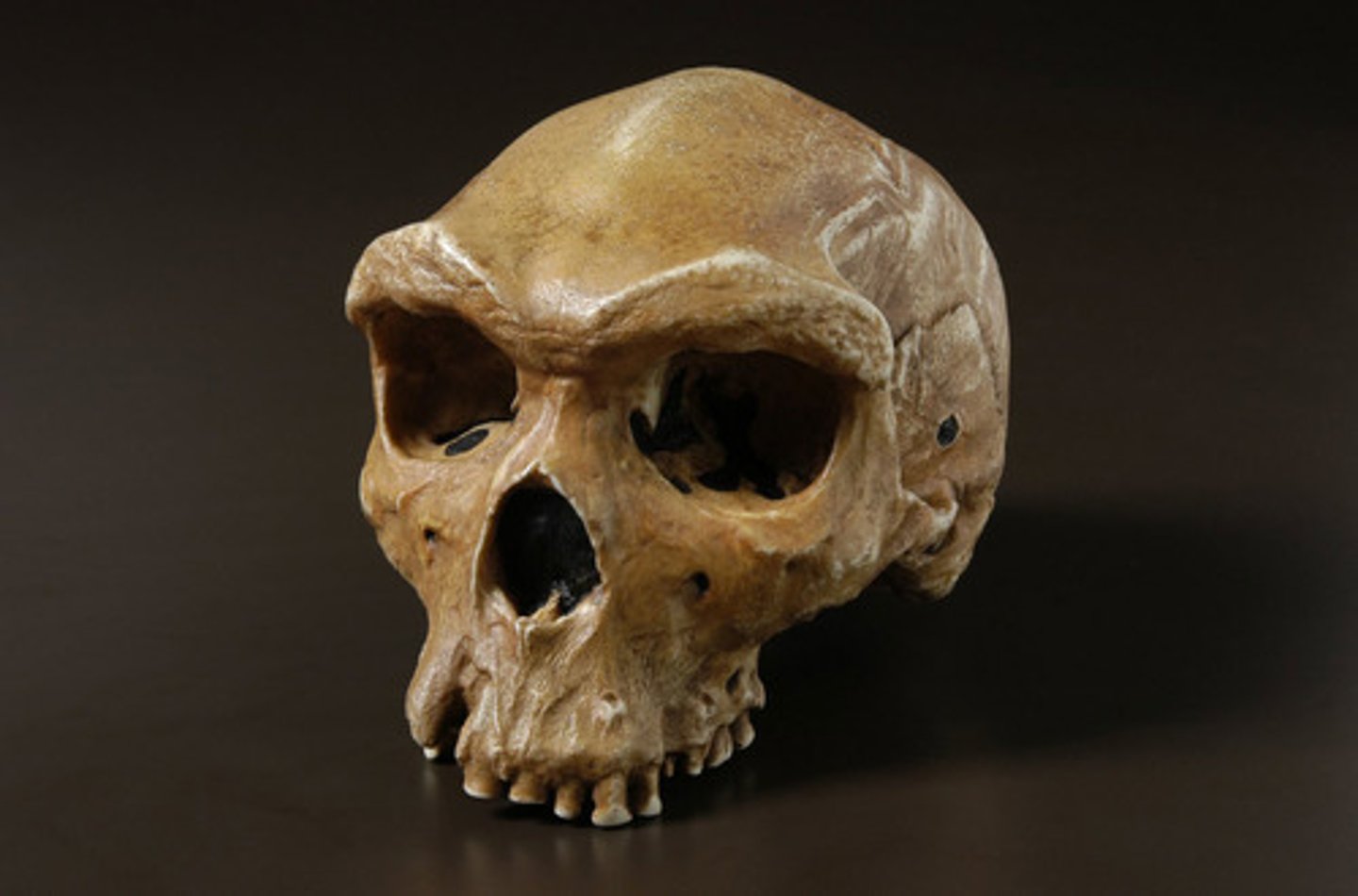
Homo Heidelbergensis (Fact 2)
Place: Species of Hominid found in recent times but having lived at one time in Northern Africa and Europe as well as possibly having roamed around during the time of the fires unearthed at Gesher Benot Ya'aqov, Israel; Schoningen, Germany; and Beeches Pit, England

Homo Heidelbergensis (Fact 3)
Physical Characteristic(s): Species of Hominid characterized by having a relatively larger brain than Homo Ergaster, almost as big as Homo Sapiens allowing them to be more socially advanced than any of the previous Hominids and
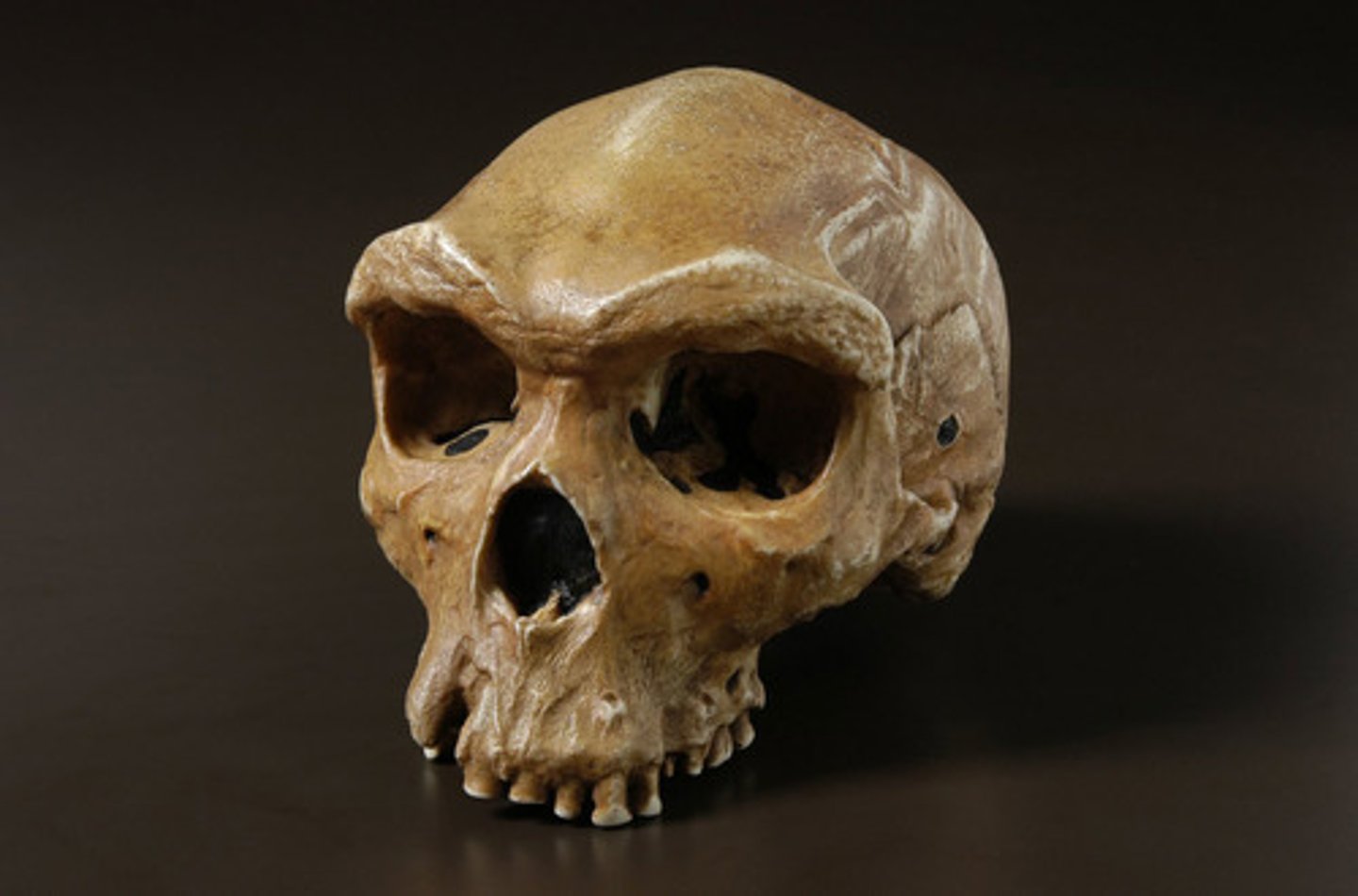
Homo Heidelbergensis (Fact 4)
Species of Hominid characterized by (most likely) being the first species of Hominid to intentionally bury their dead relatives

Homo Heidelbergensis (Fact 5)
Species of Hominid characterized by (most likely) being the first species of Hominid to create and develop symbolic language
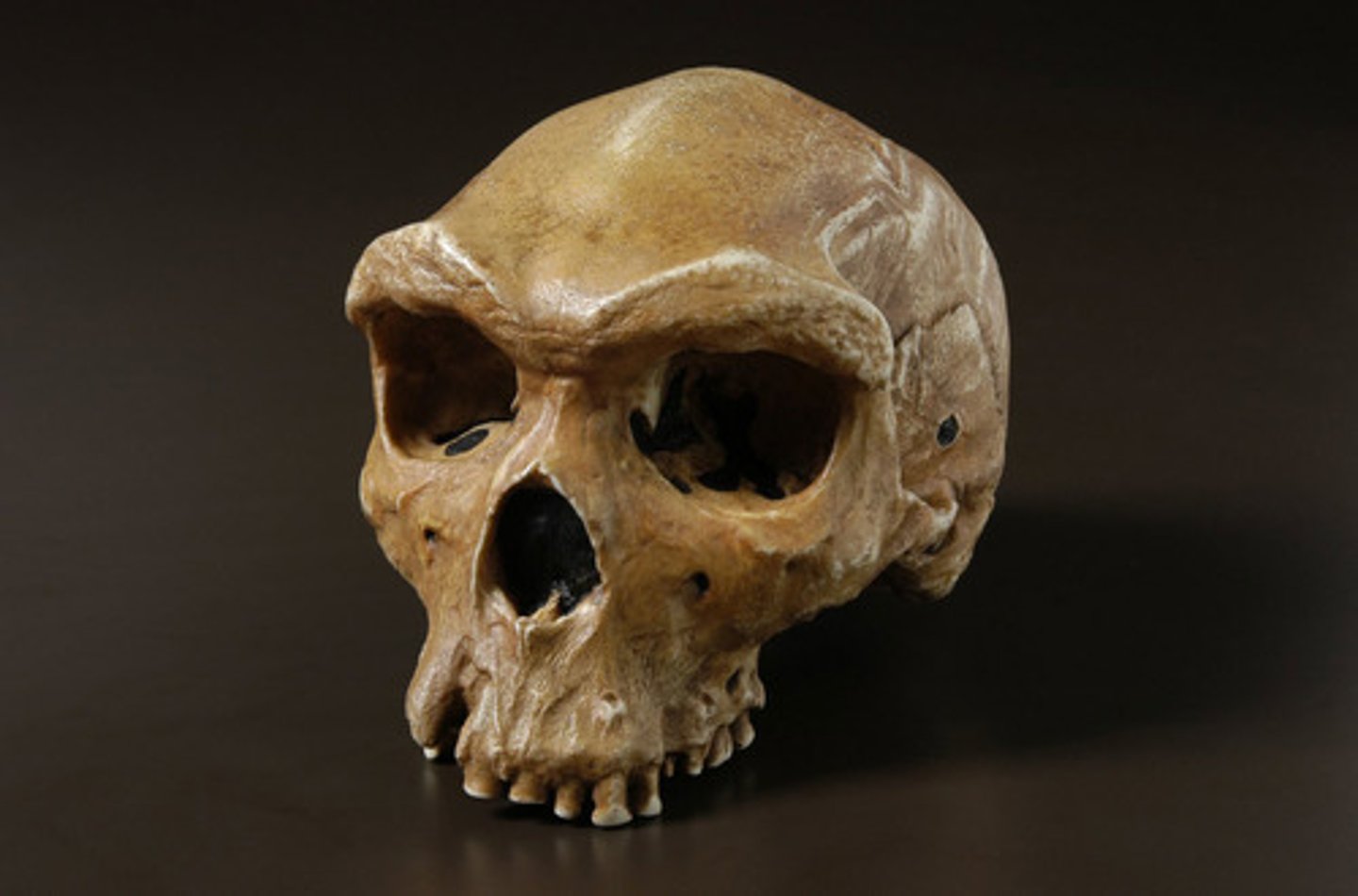
Homo Heidelbergensis (Fact 6)
Species of Hominid characterized by (most likely) being the living evolutionary gap between Homo Erectus and Homo Sapiens
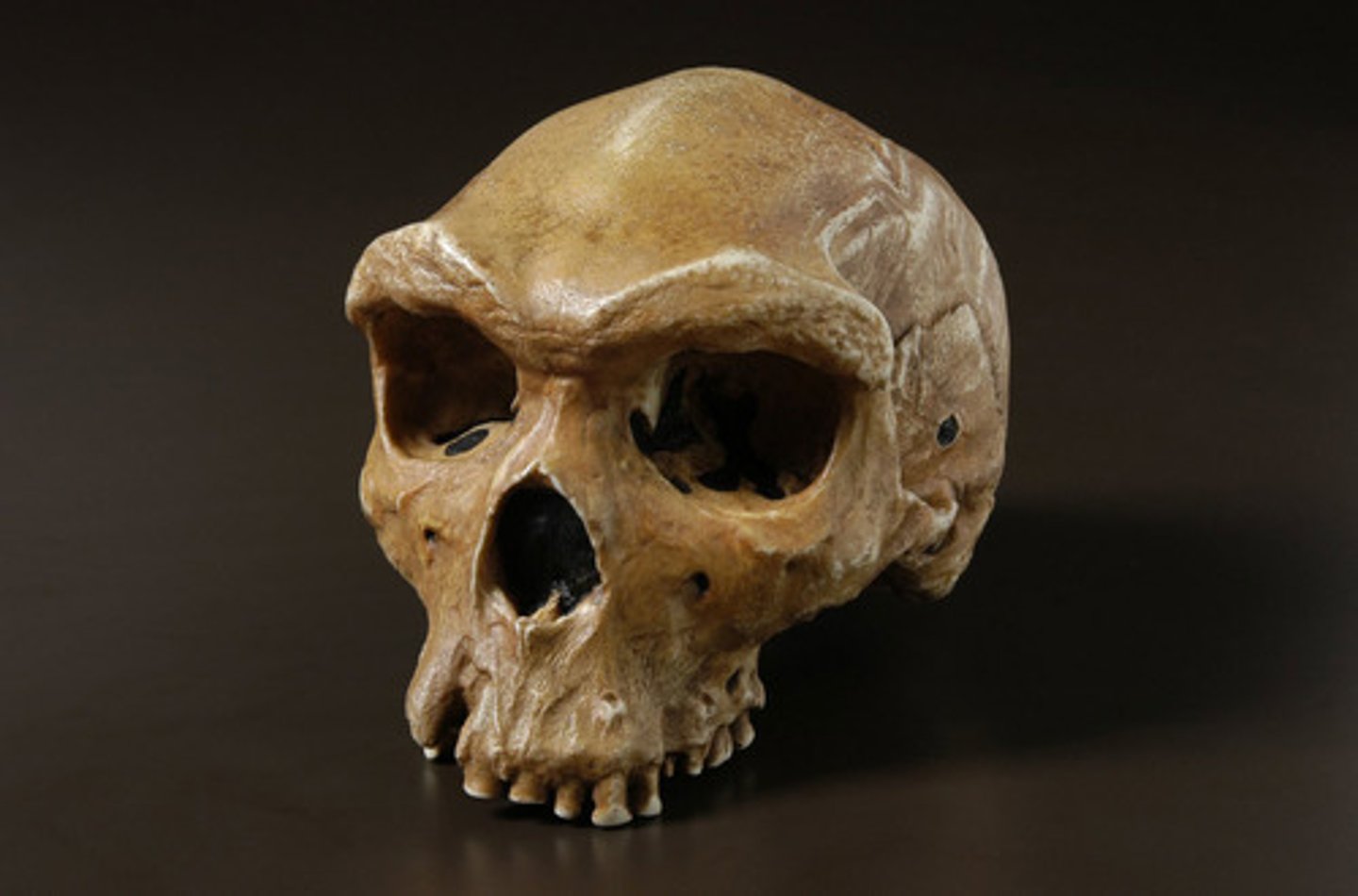
Homo Sapiens - Homo Sapiens Sapiens & Homo Sapiens Neanderthalensis (Fact 1)
Time: Species of Hominid that emerged around 250,000 years BCE